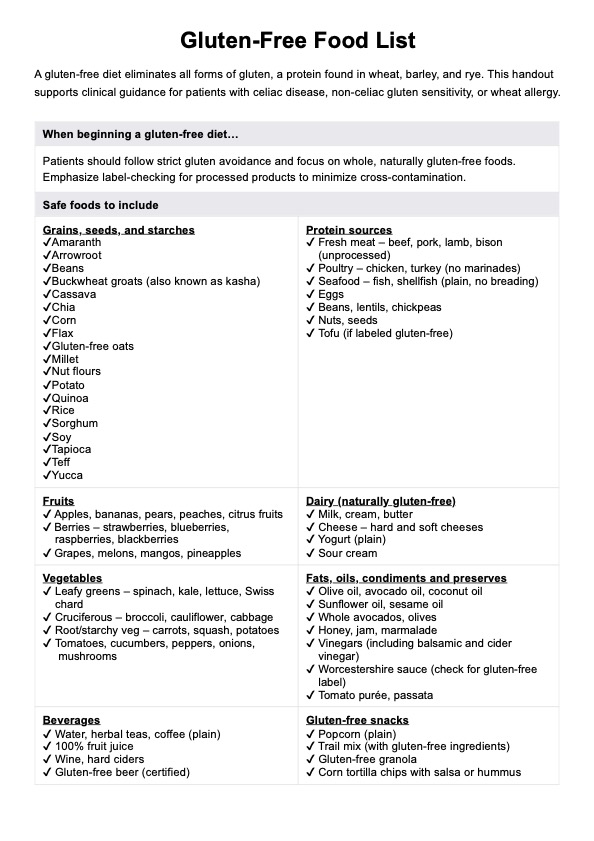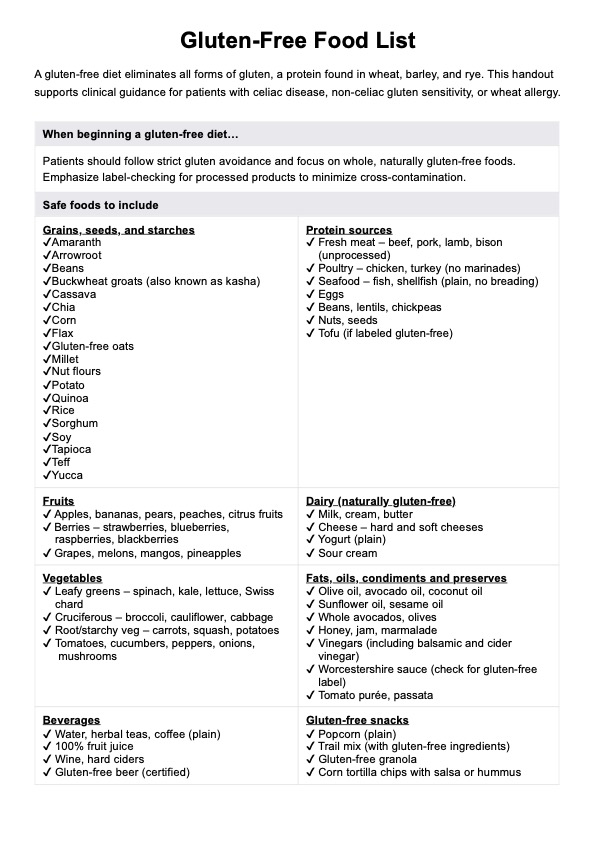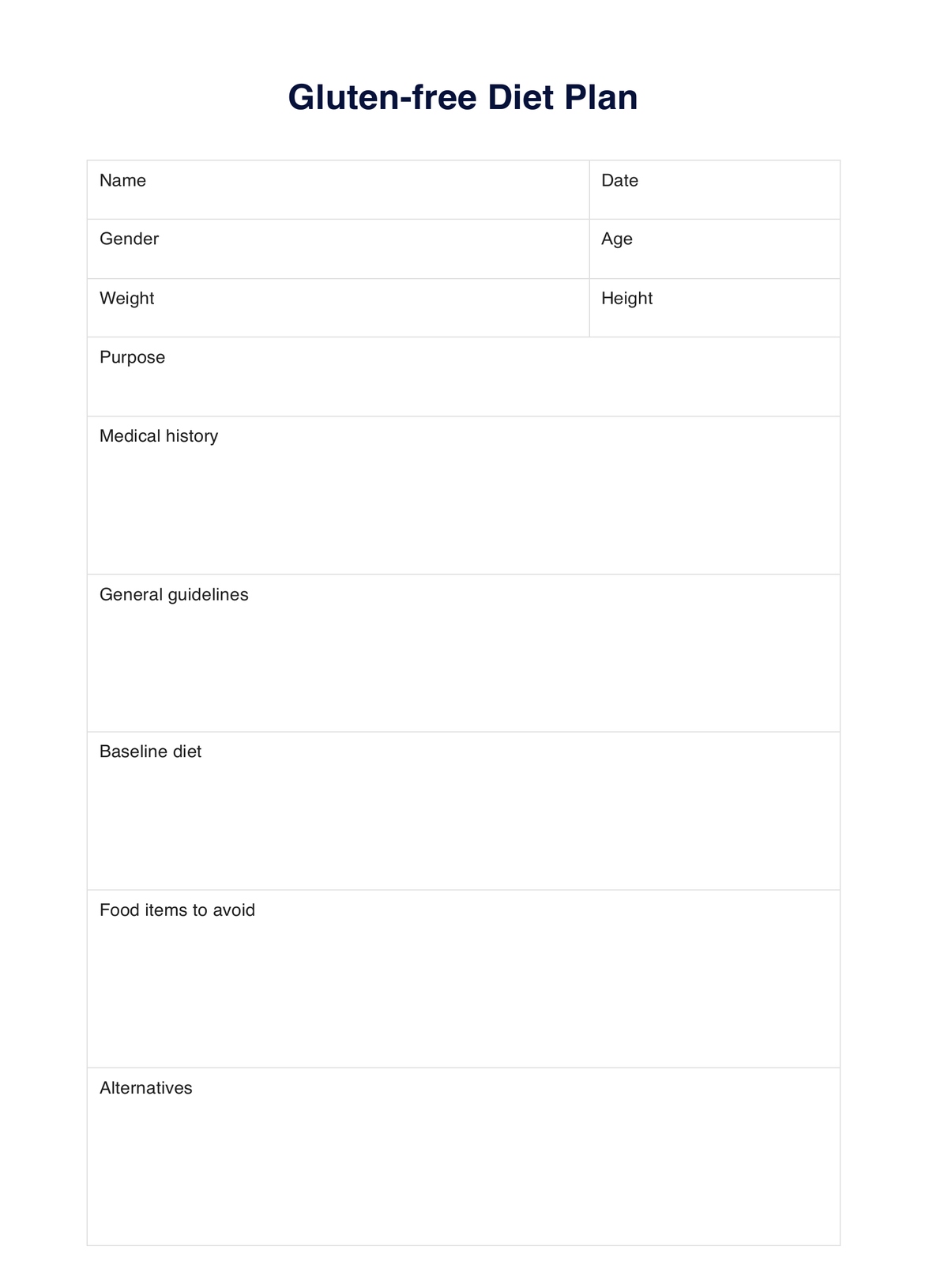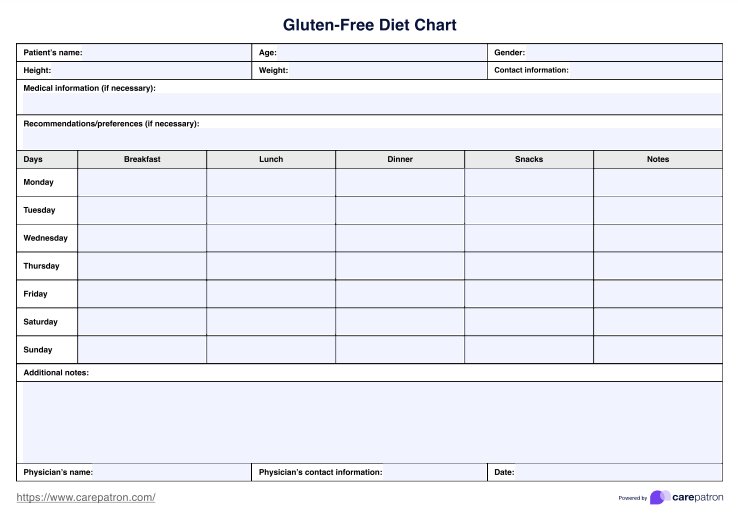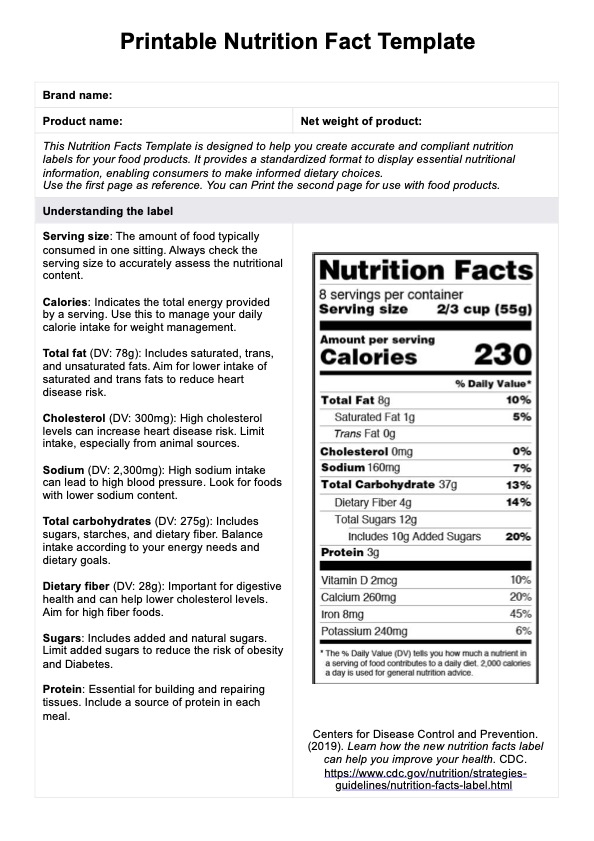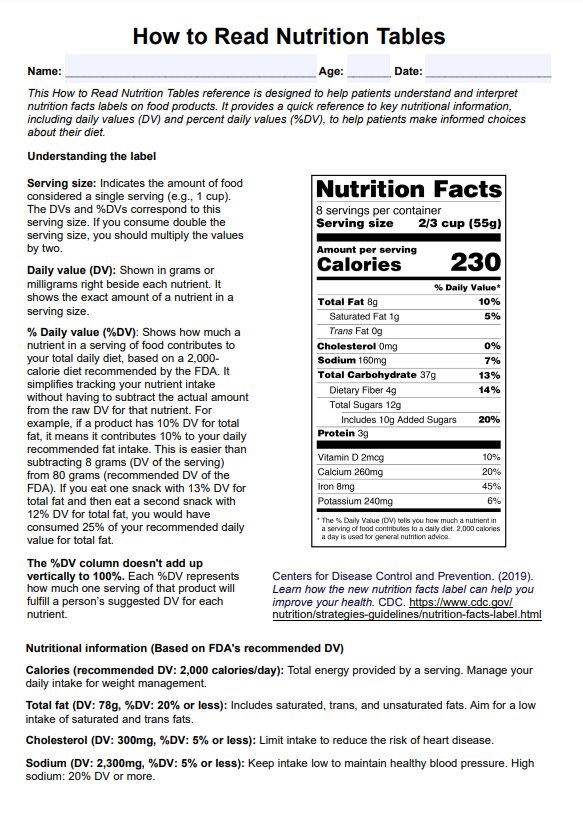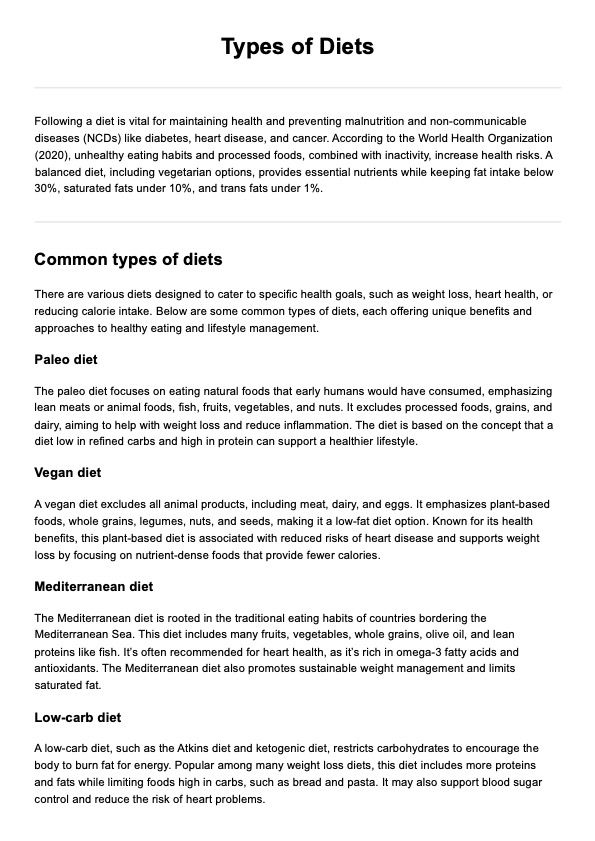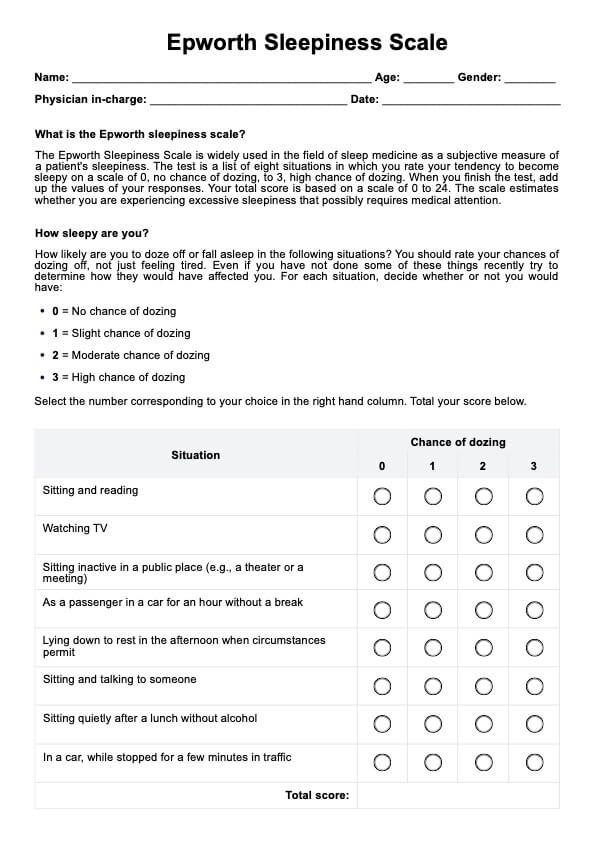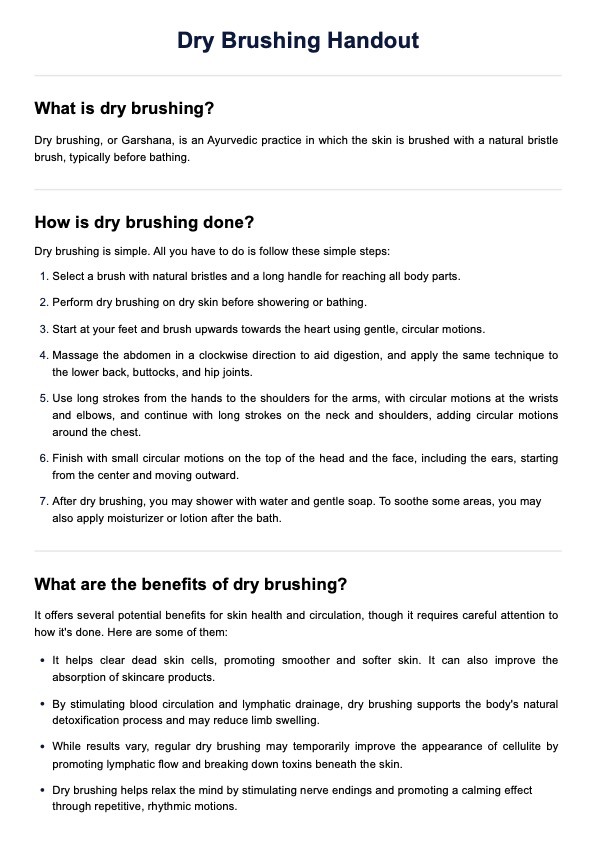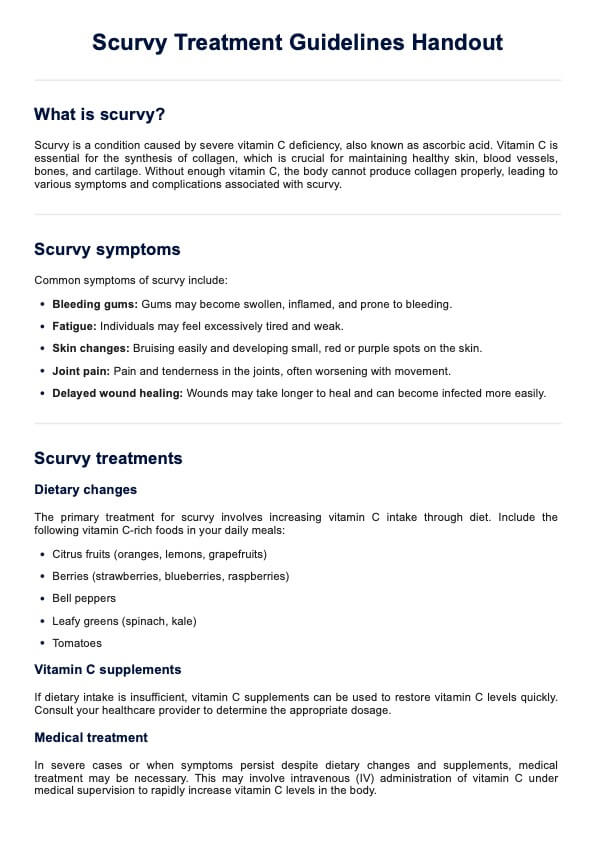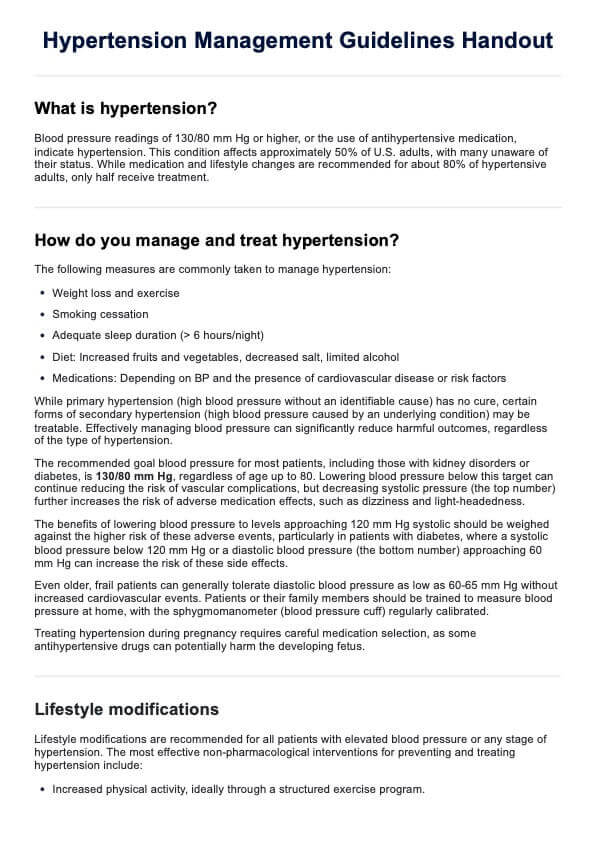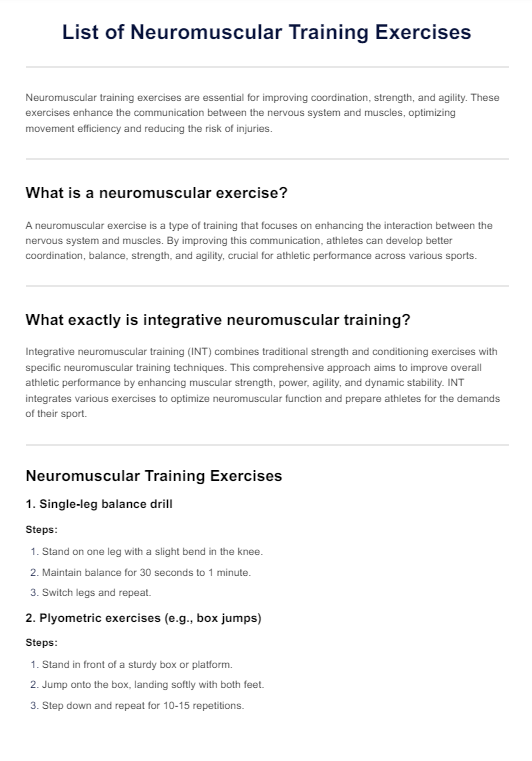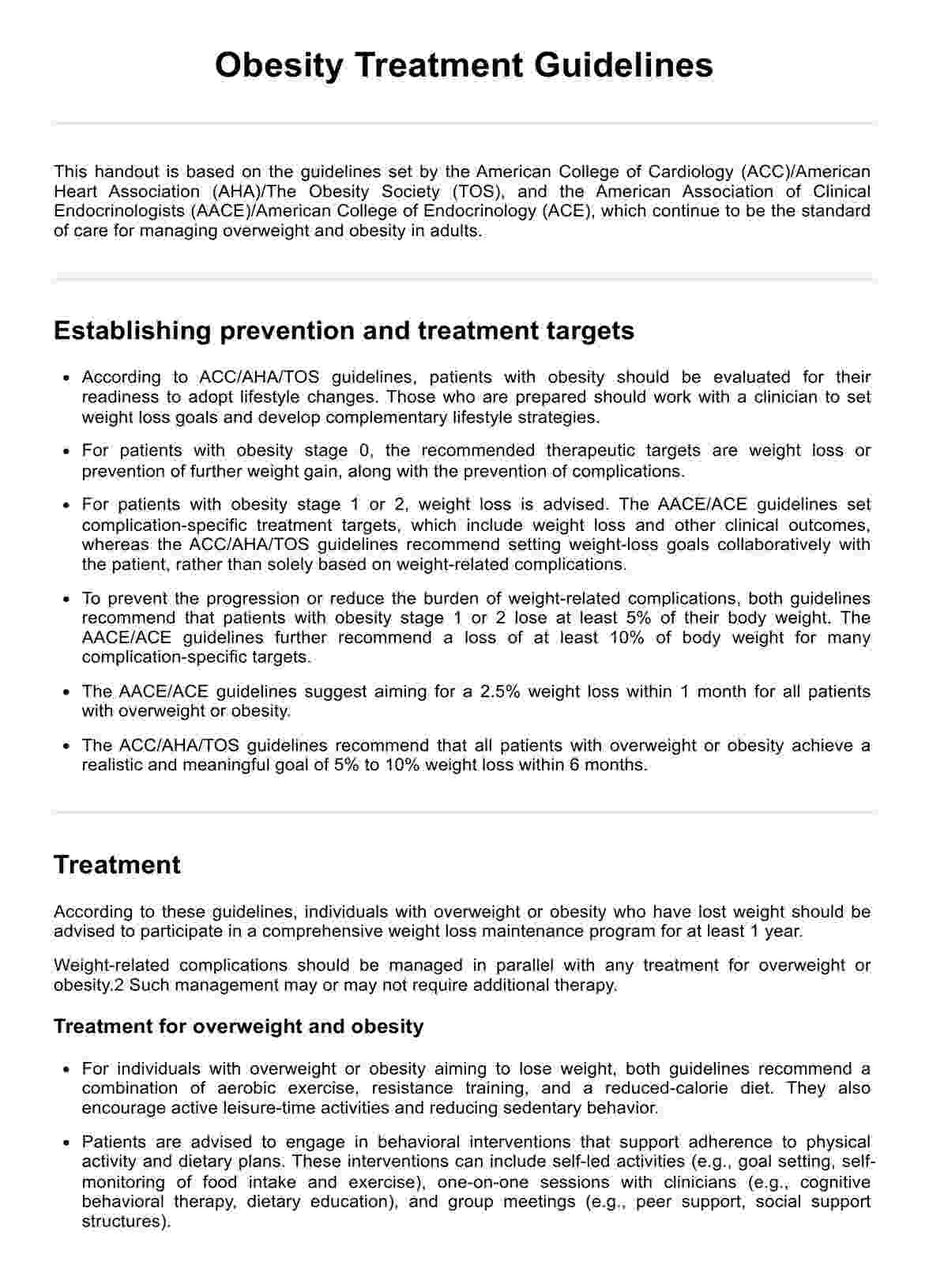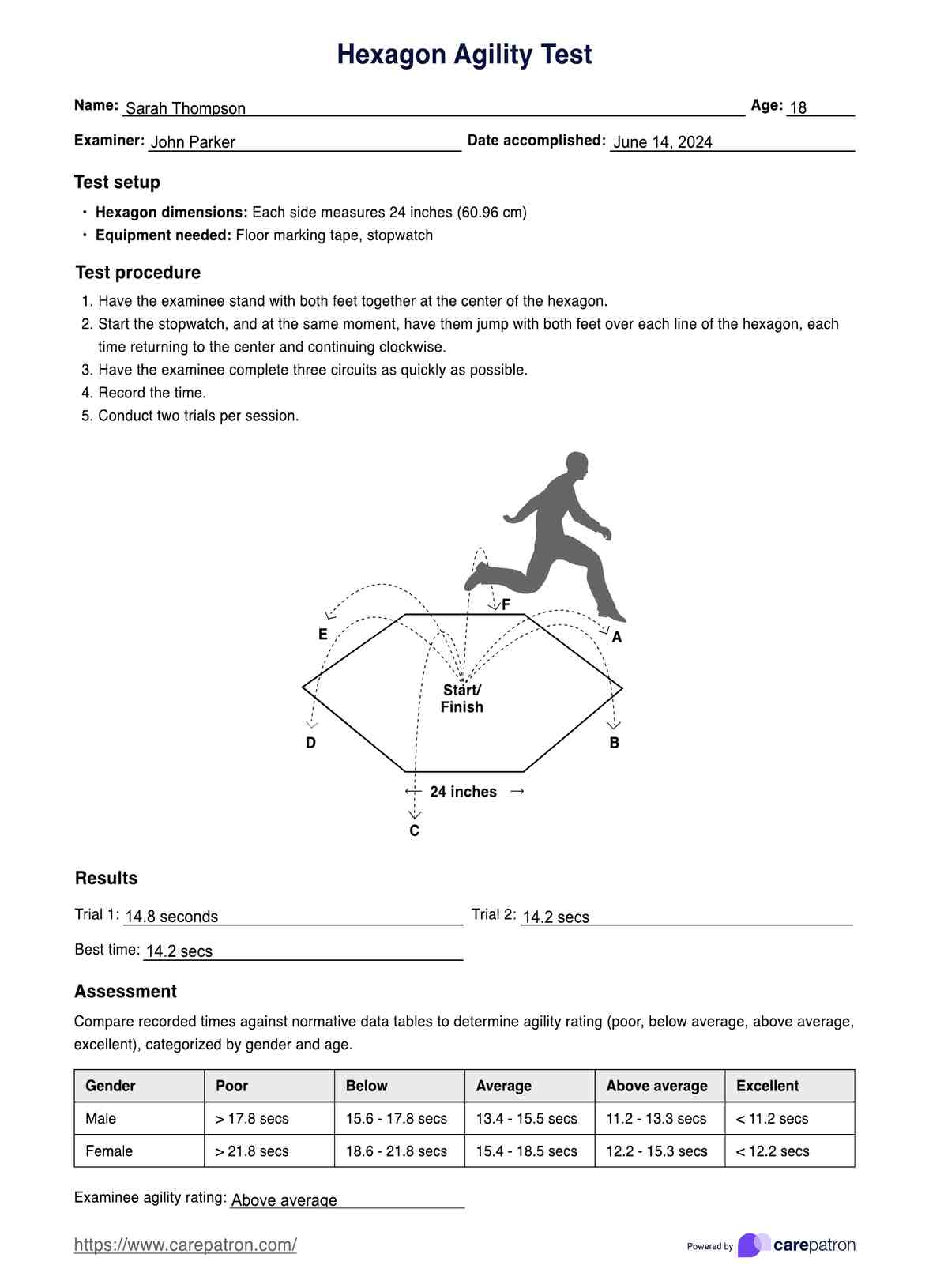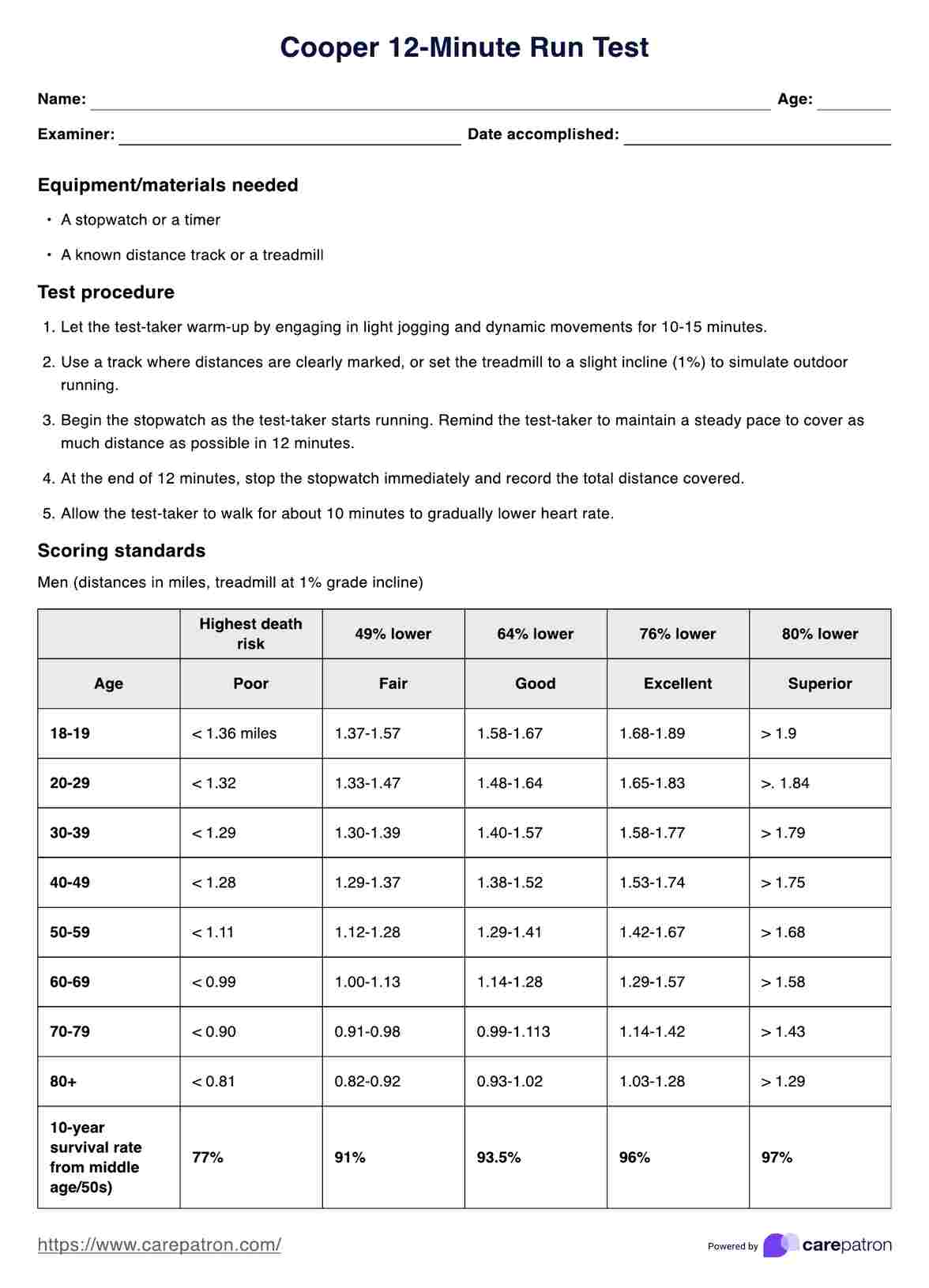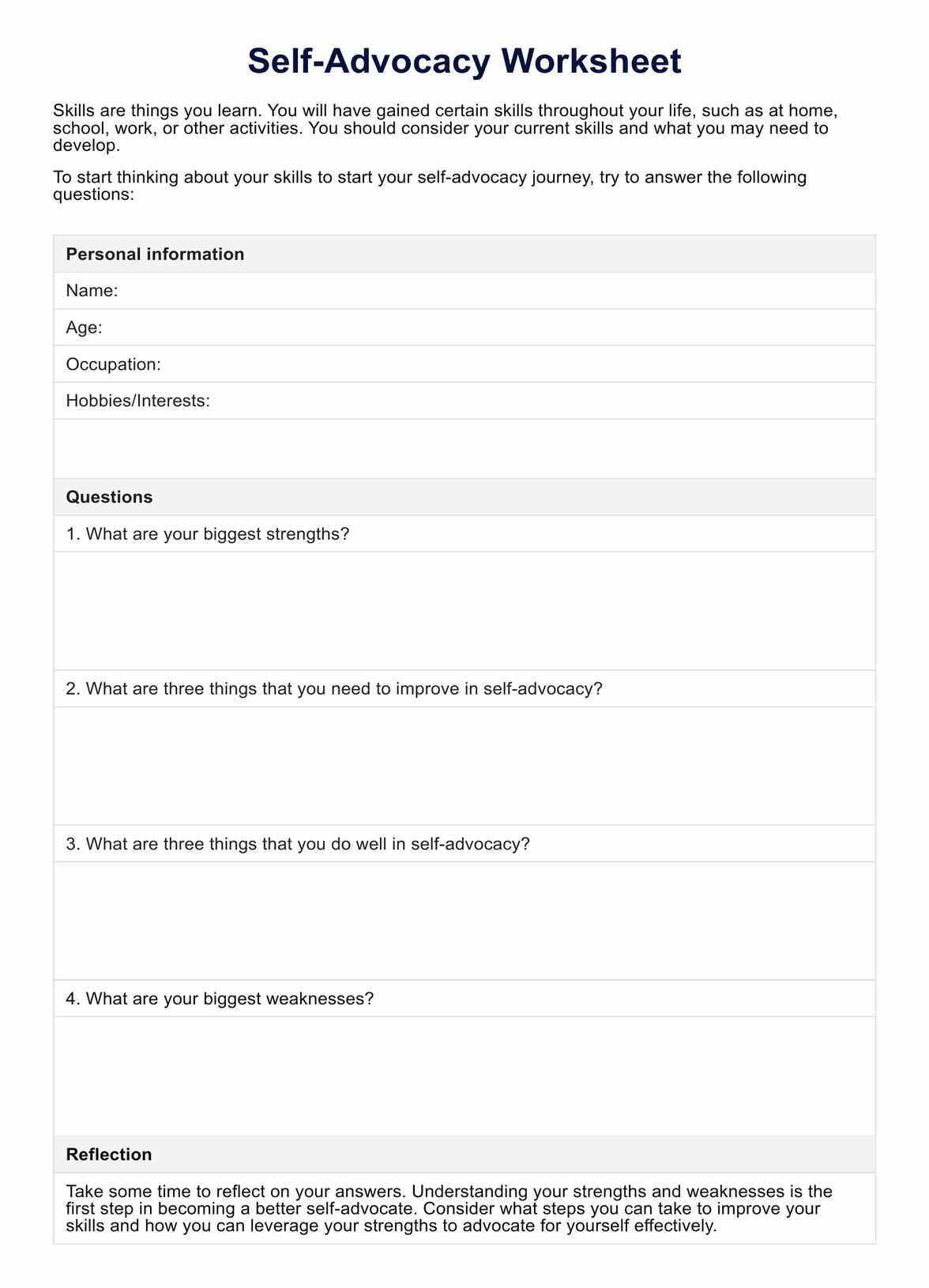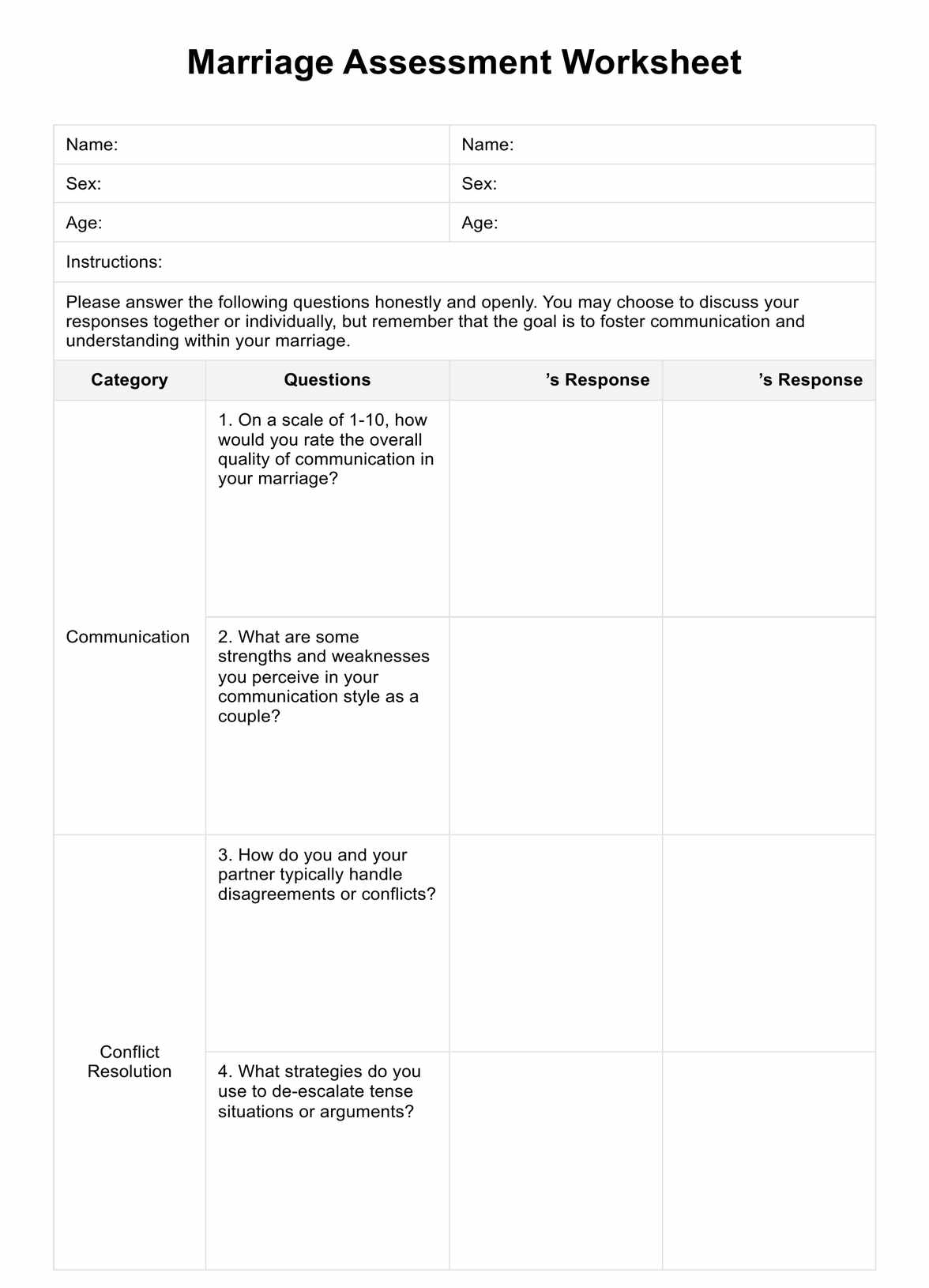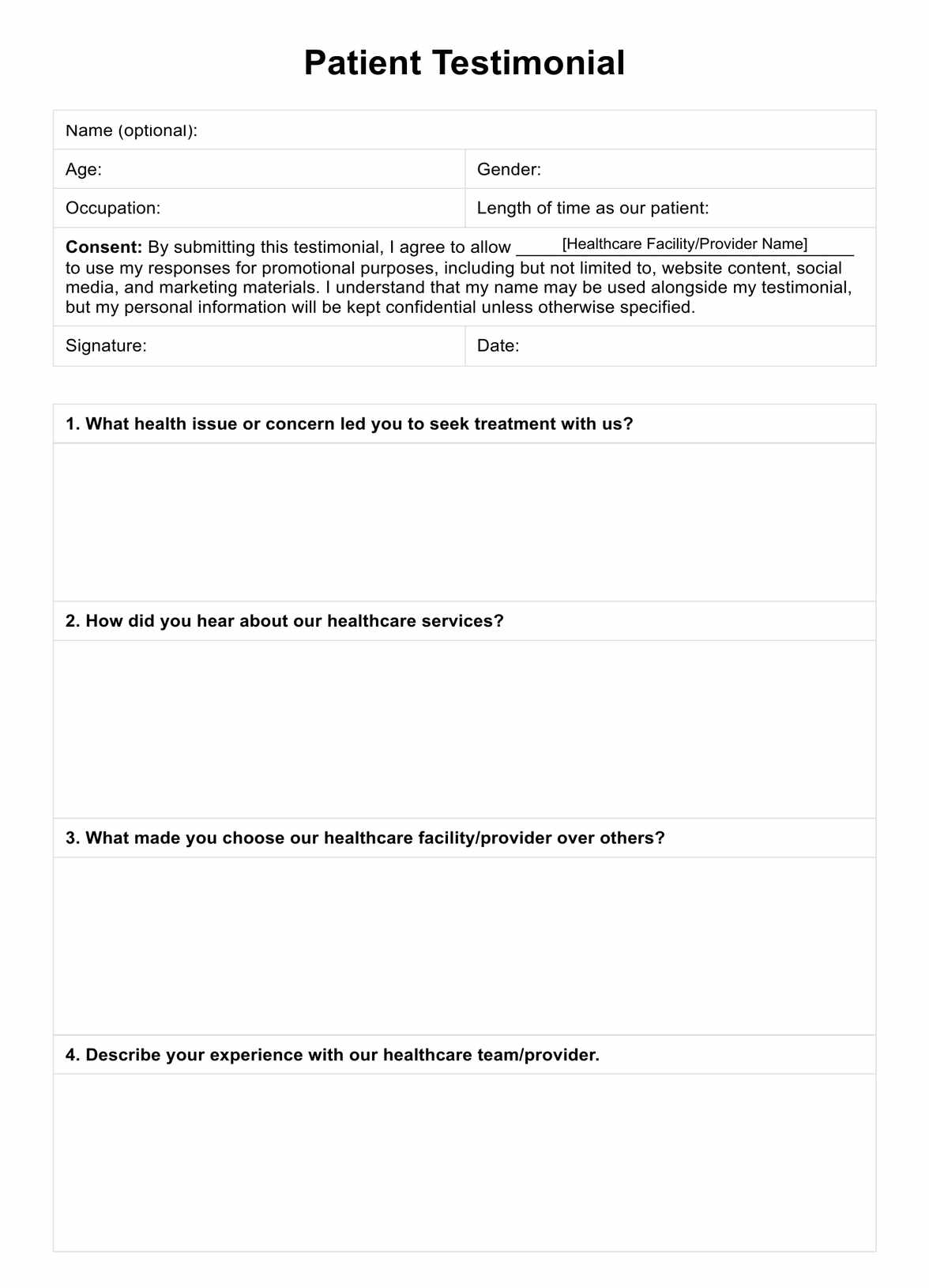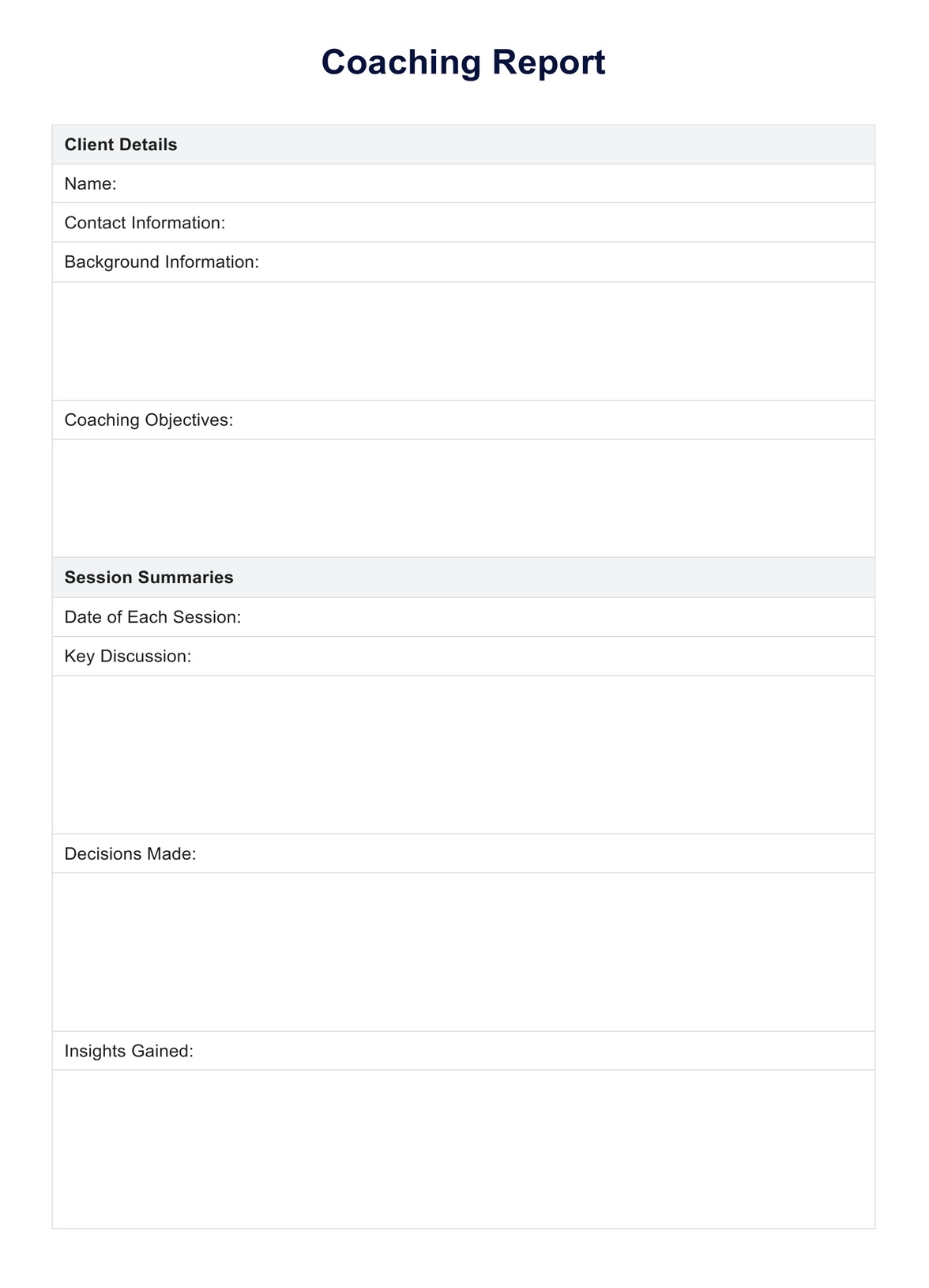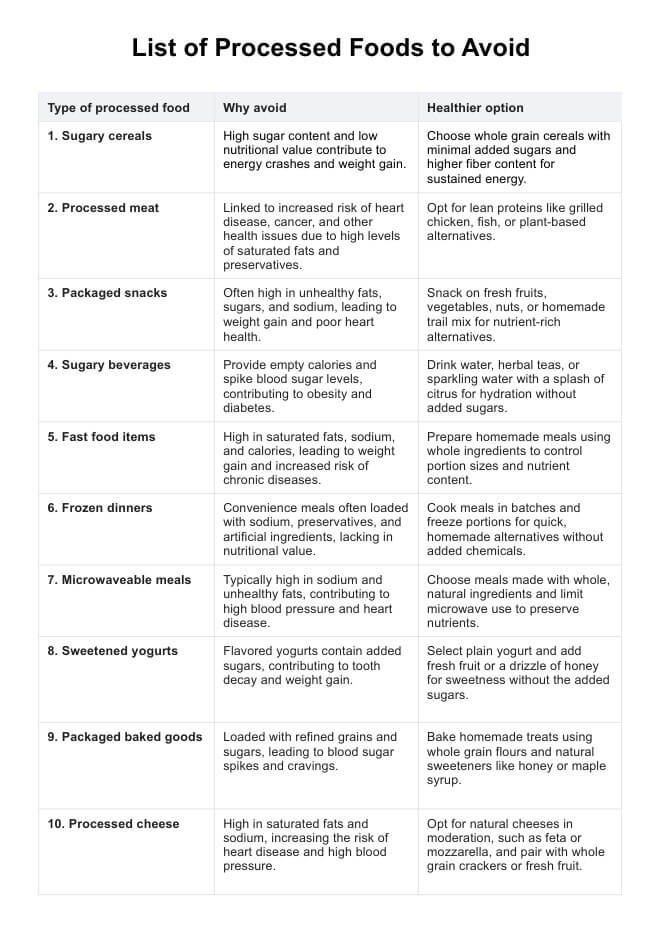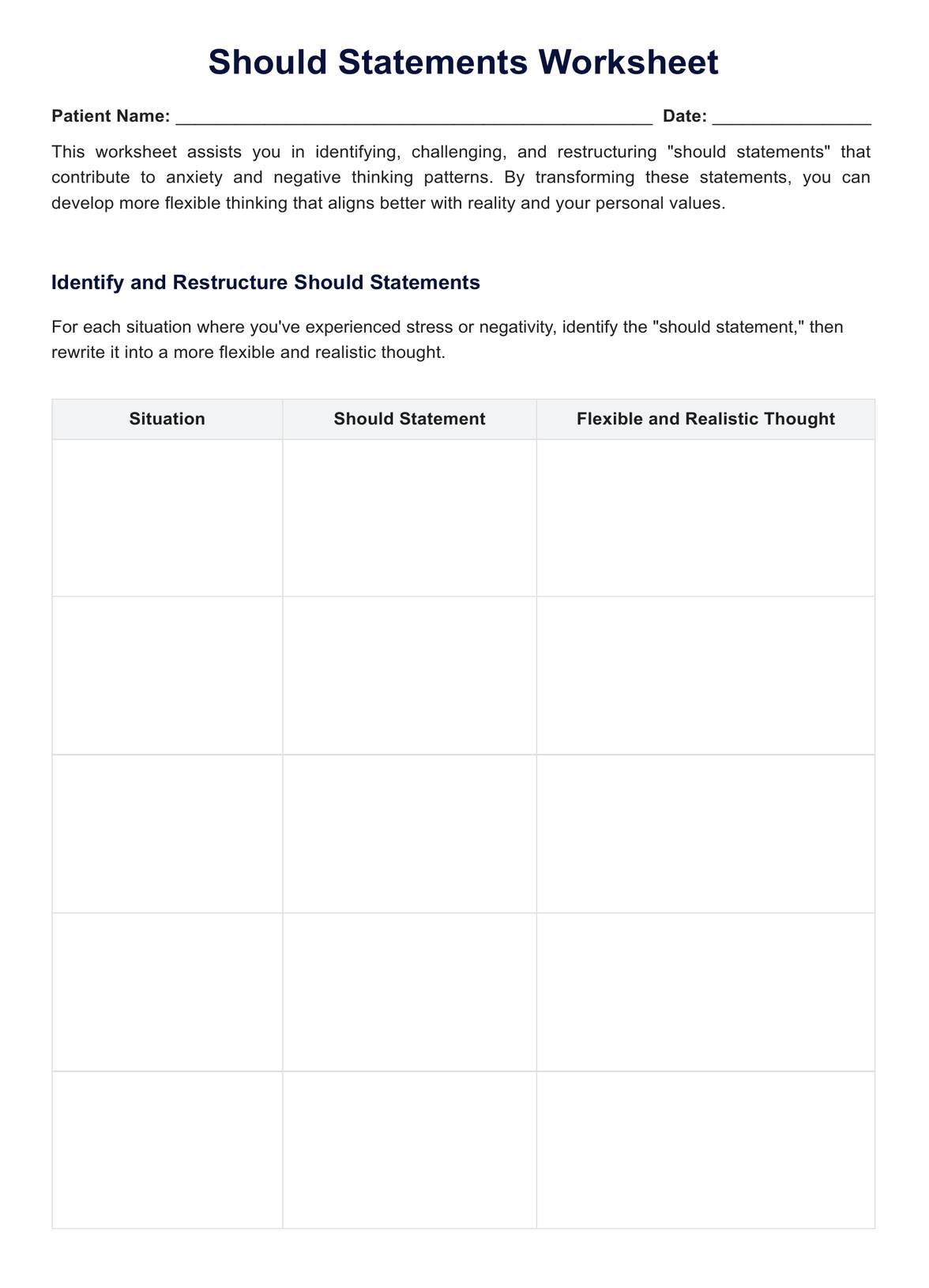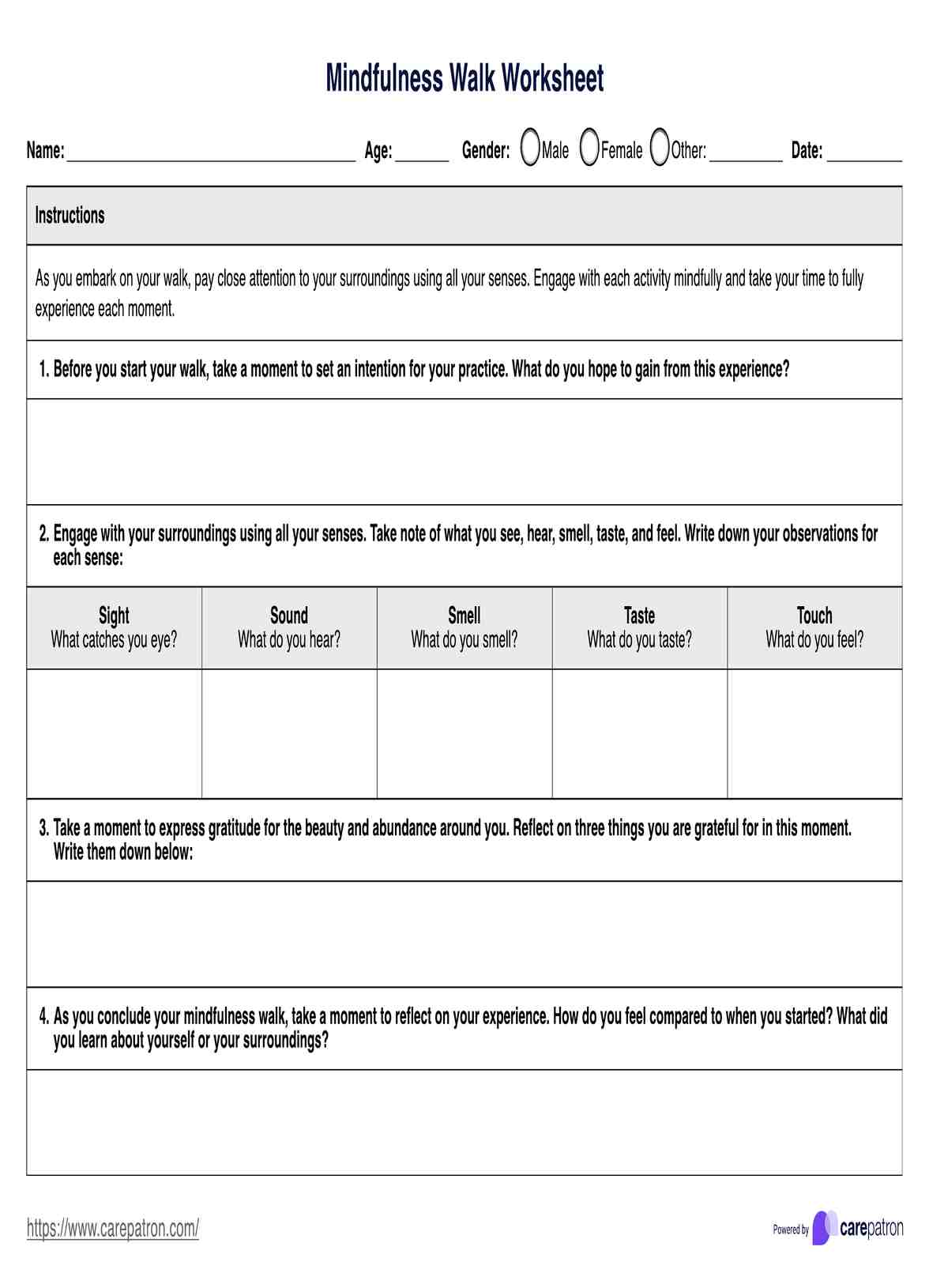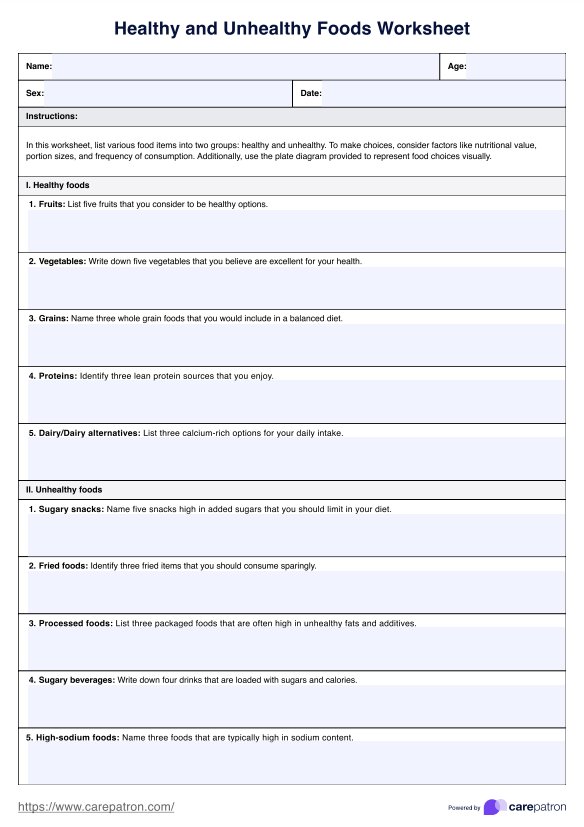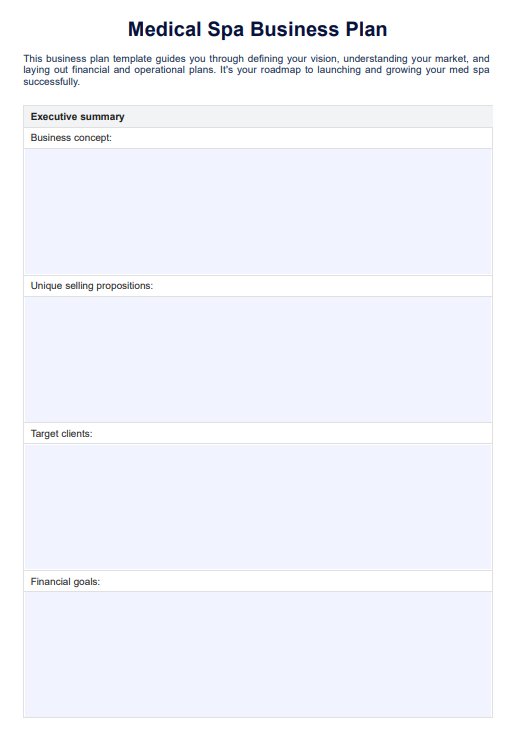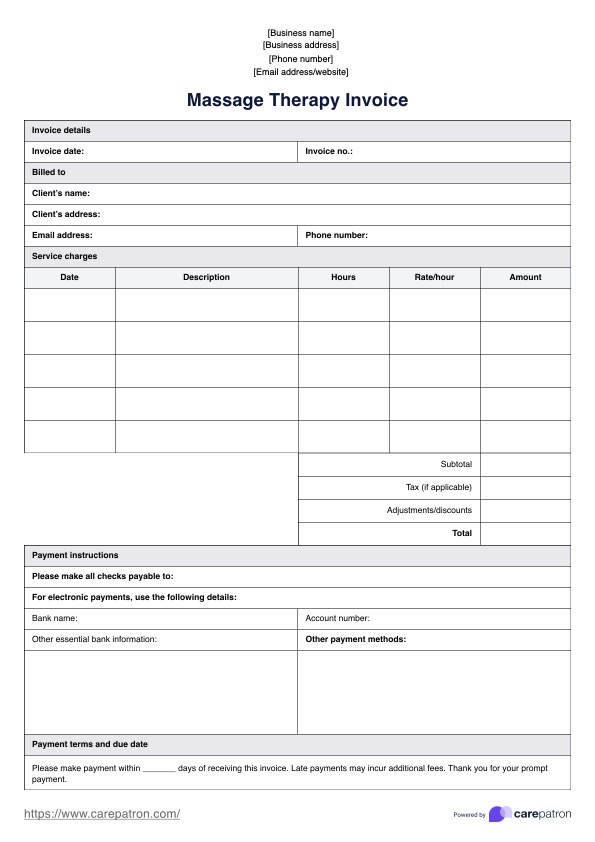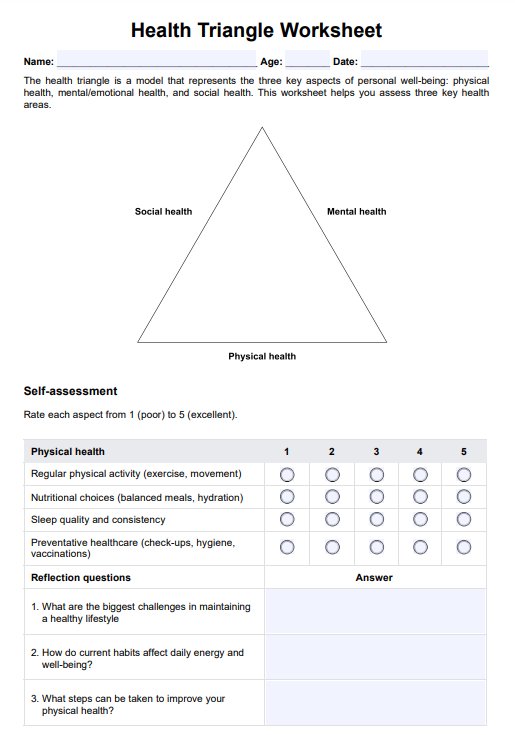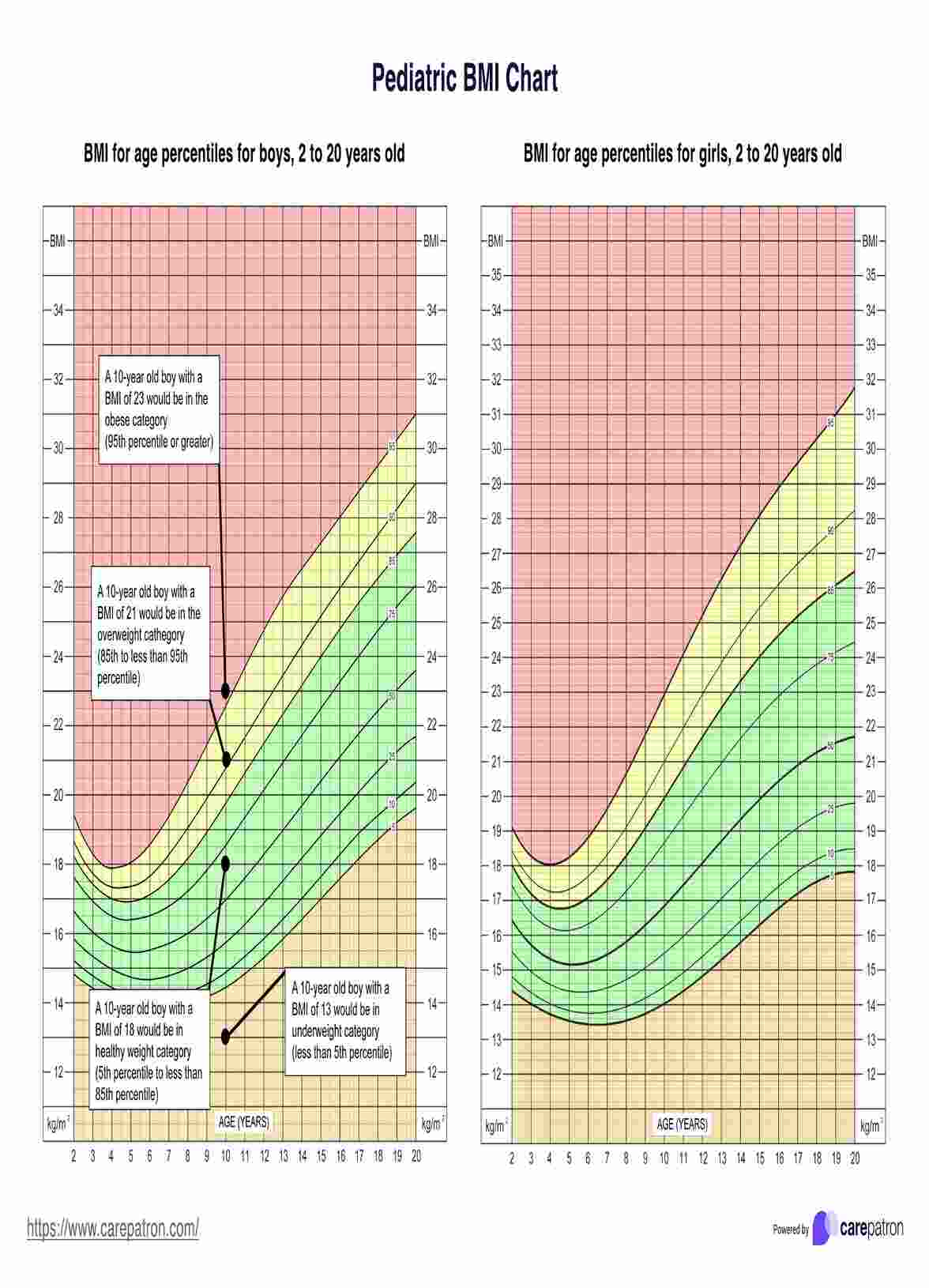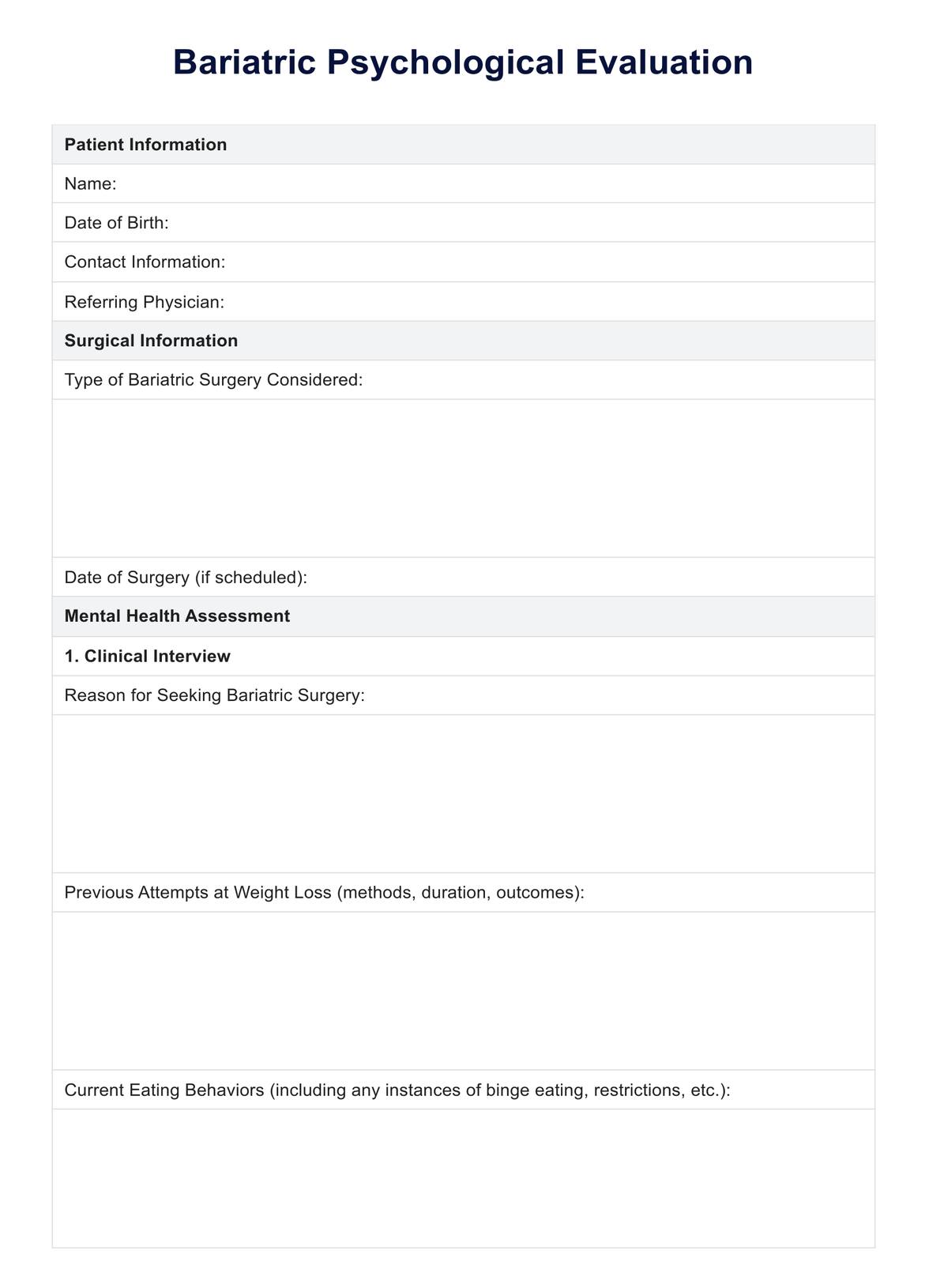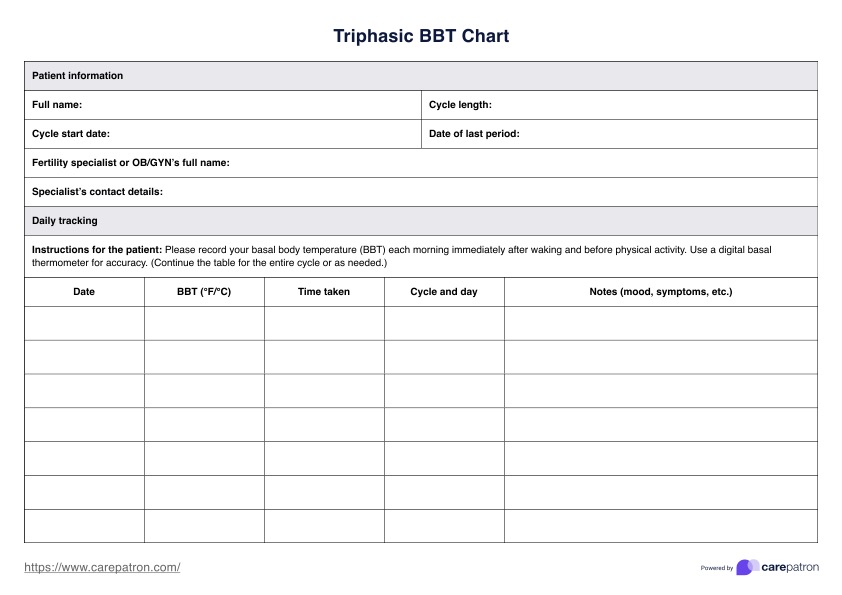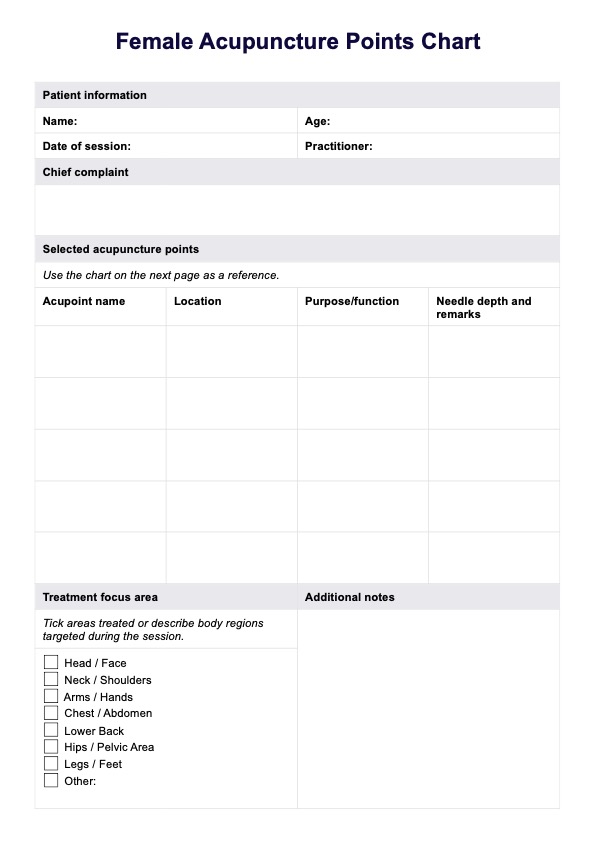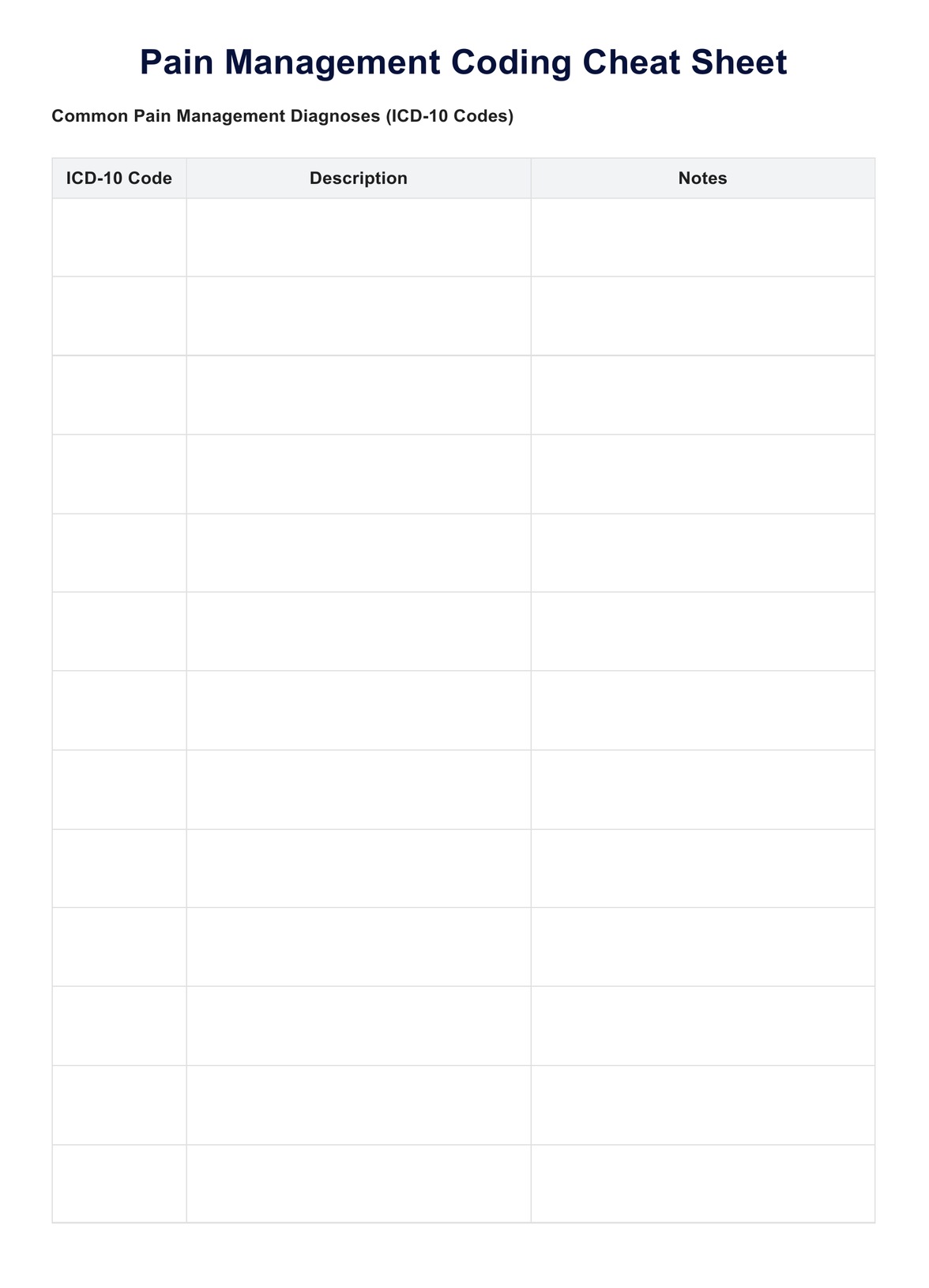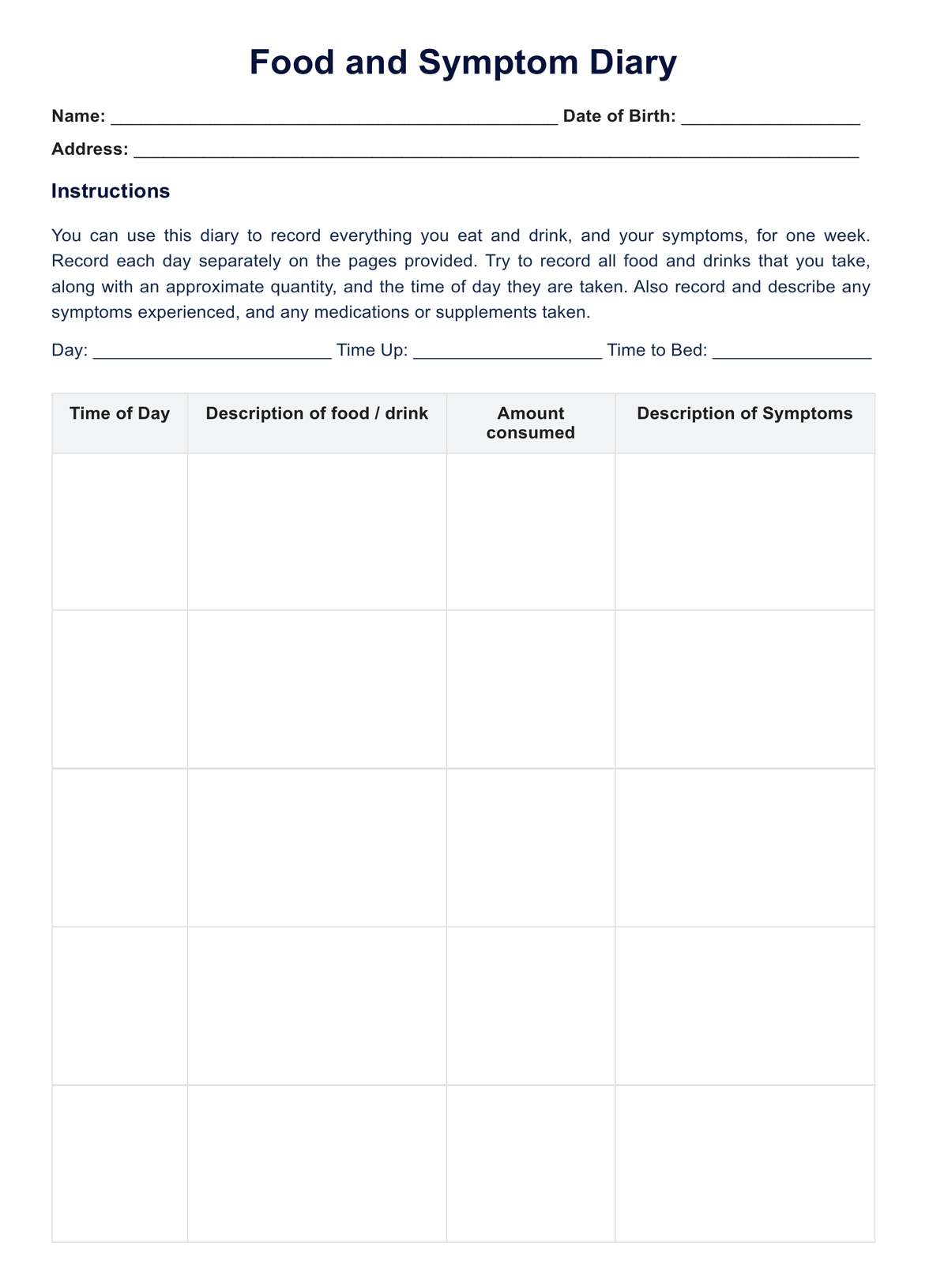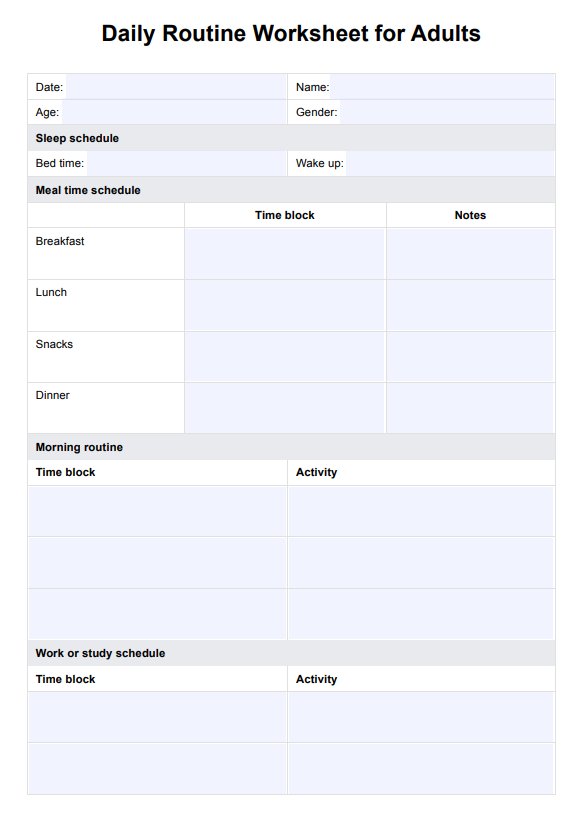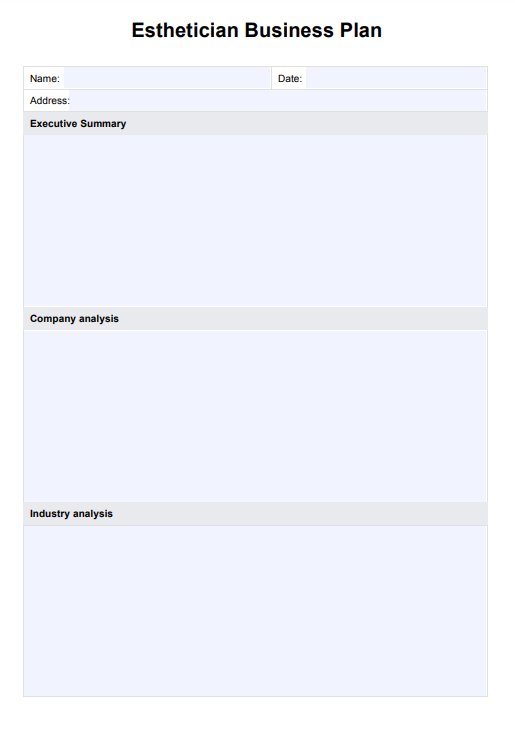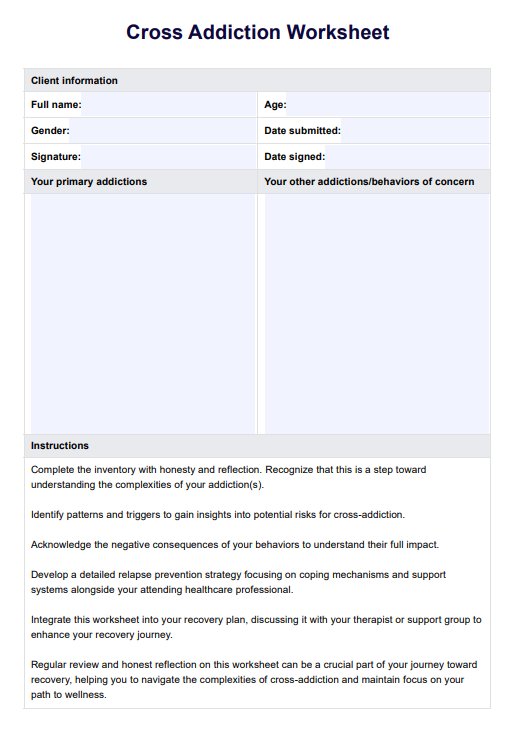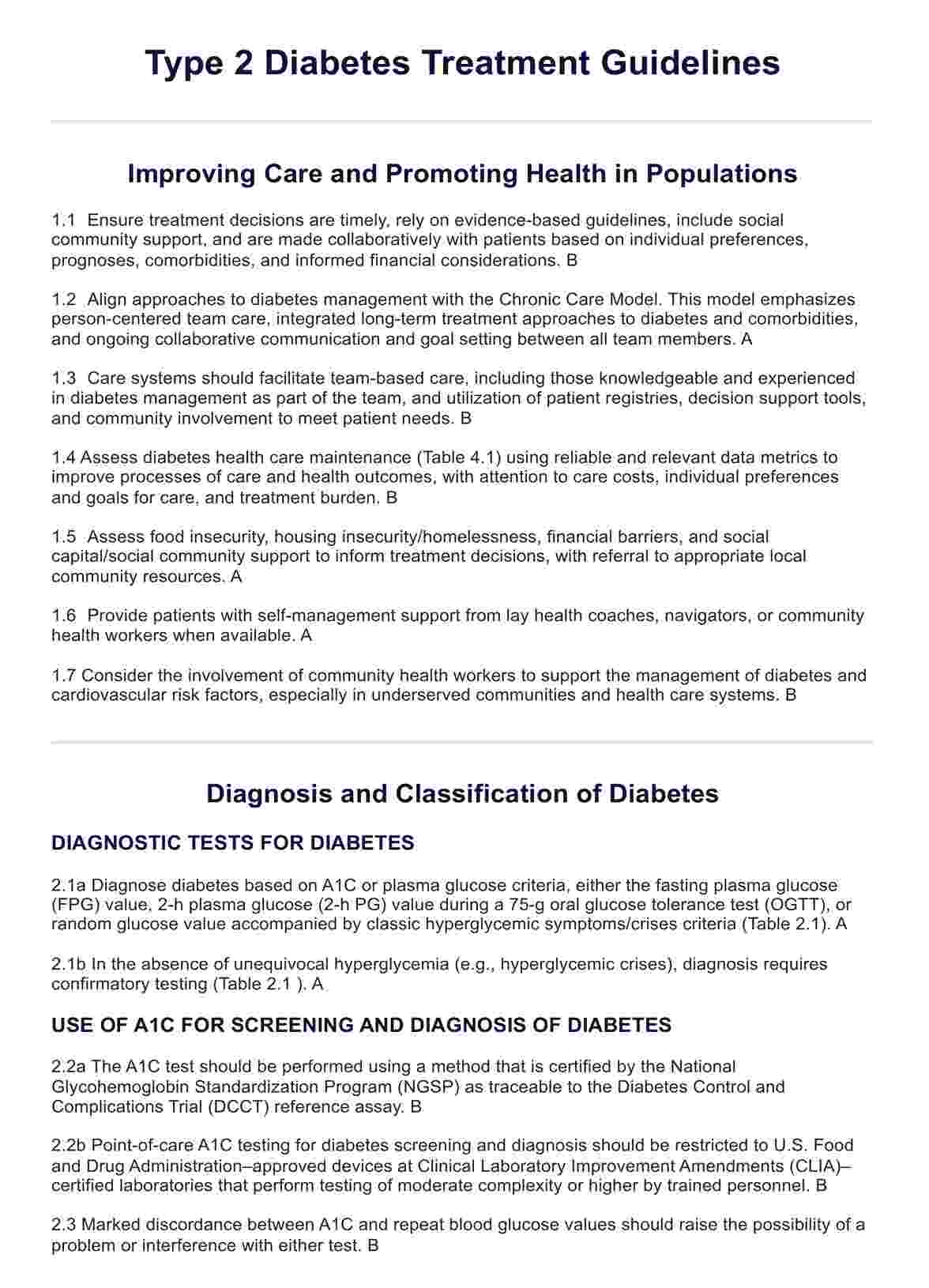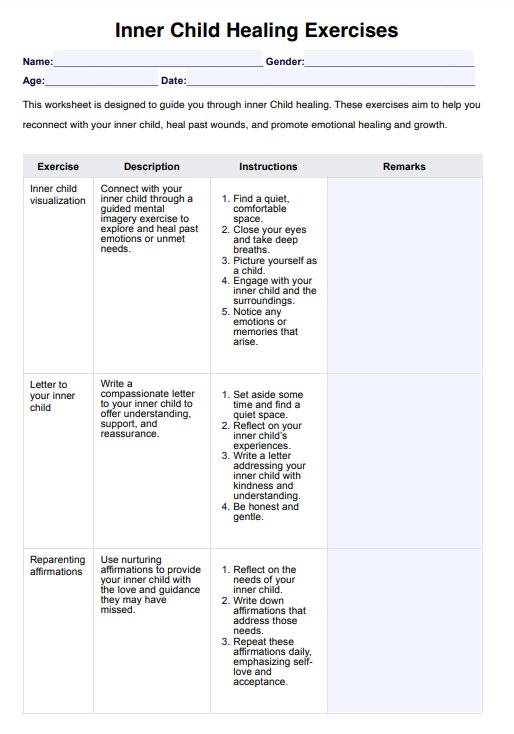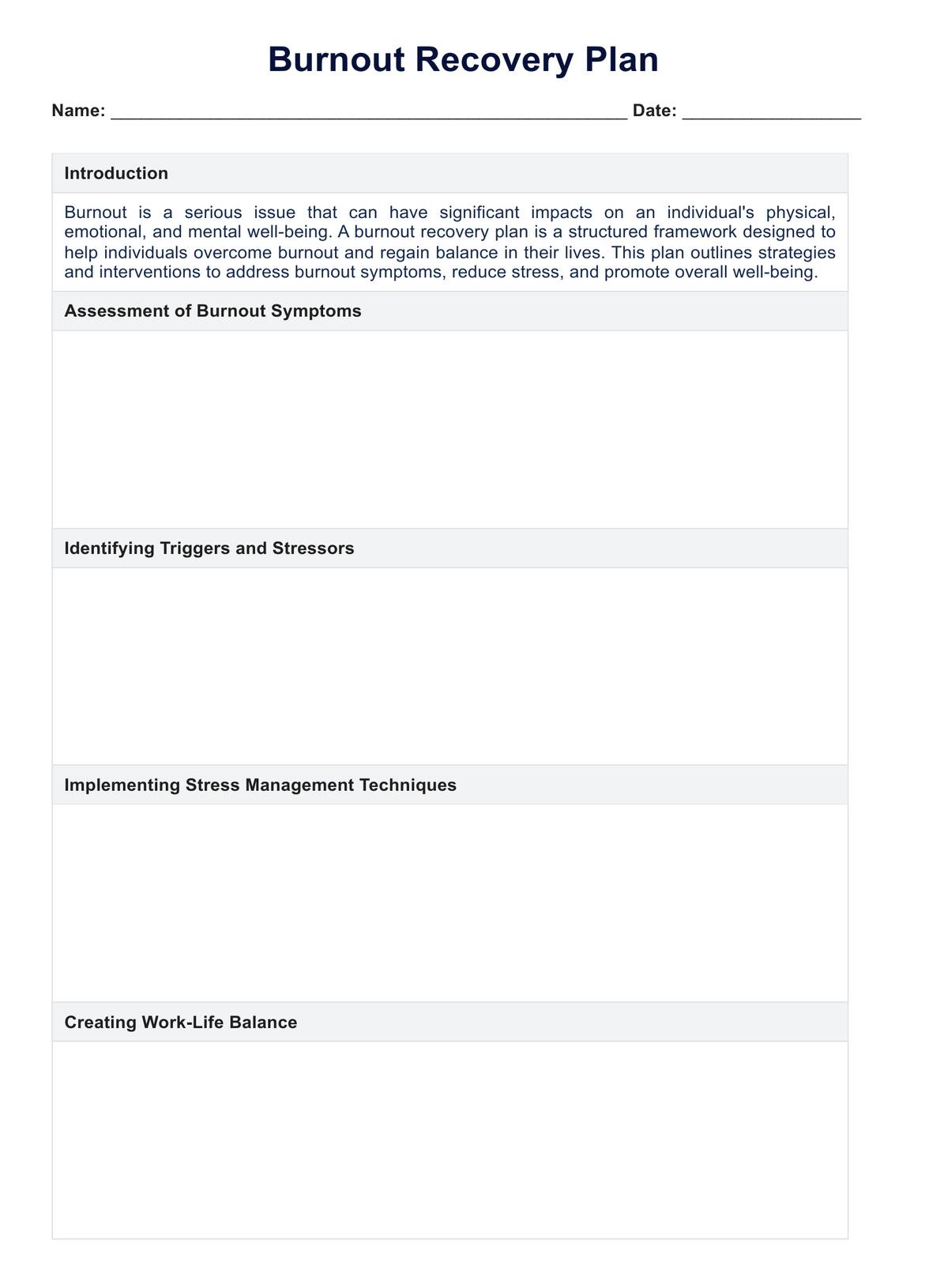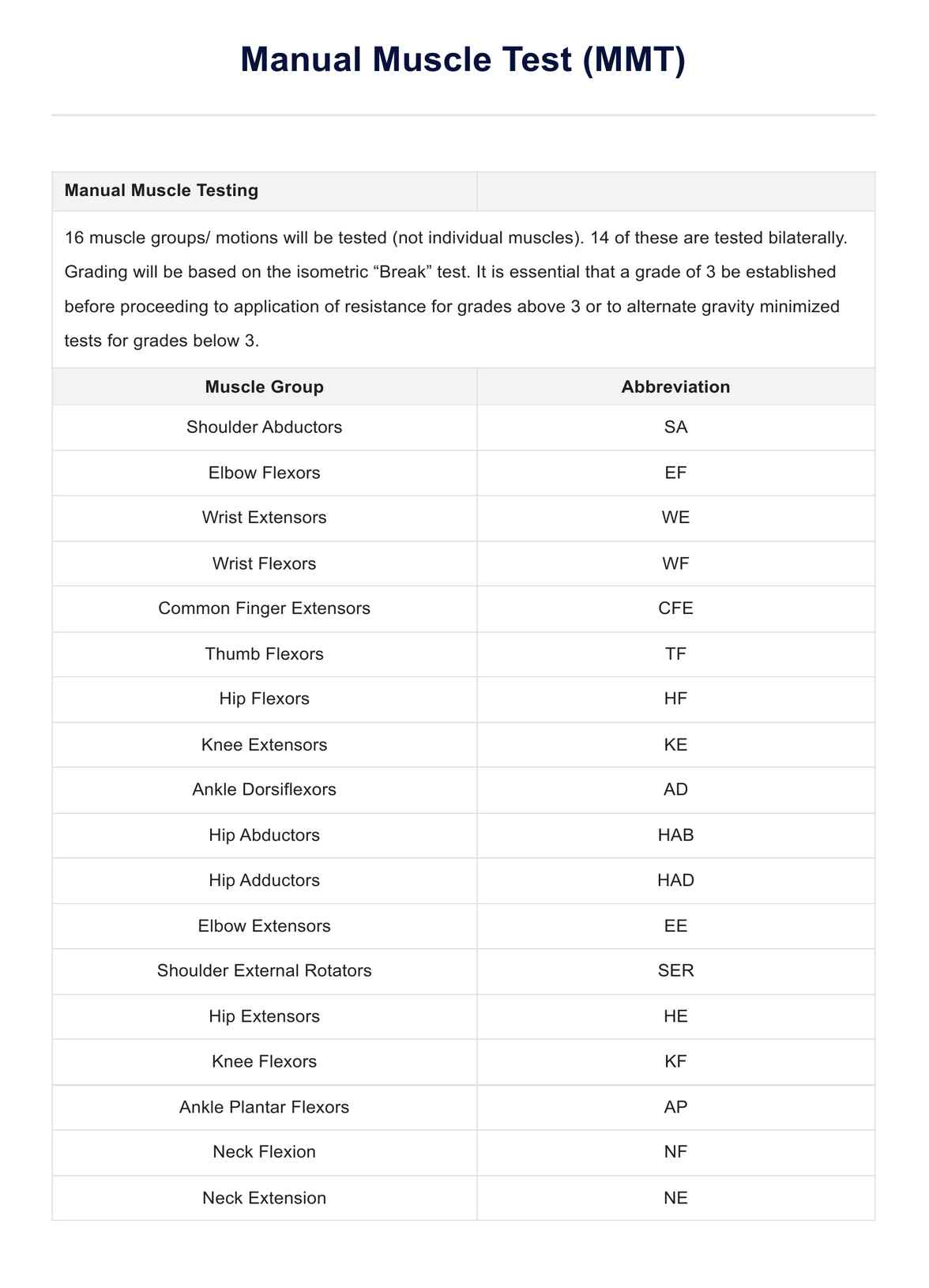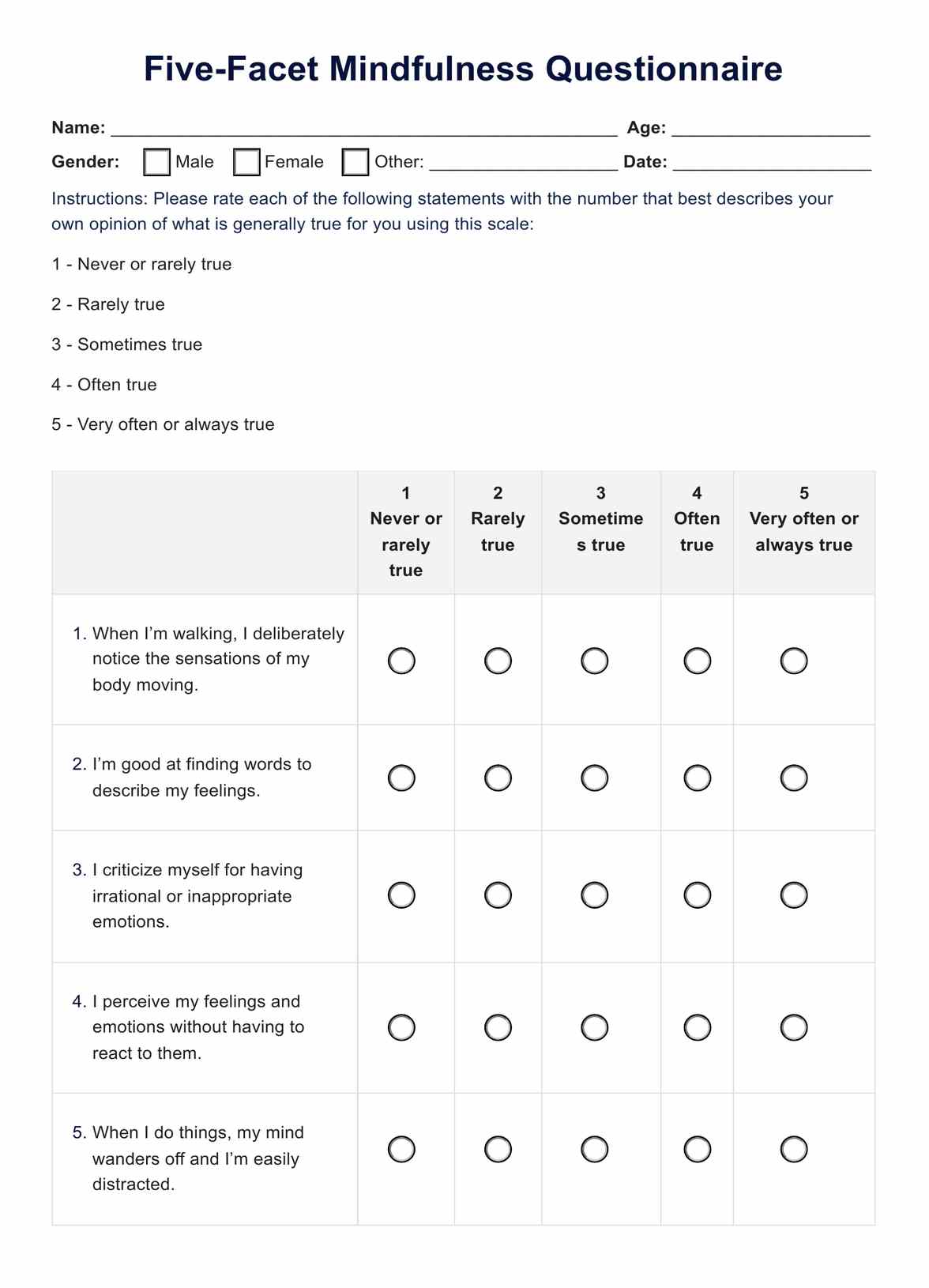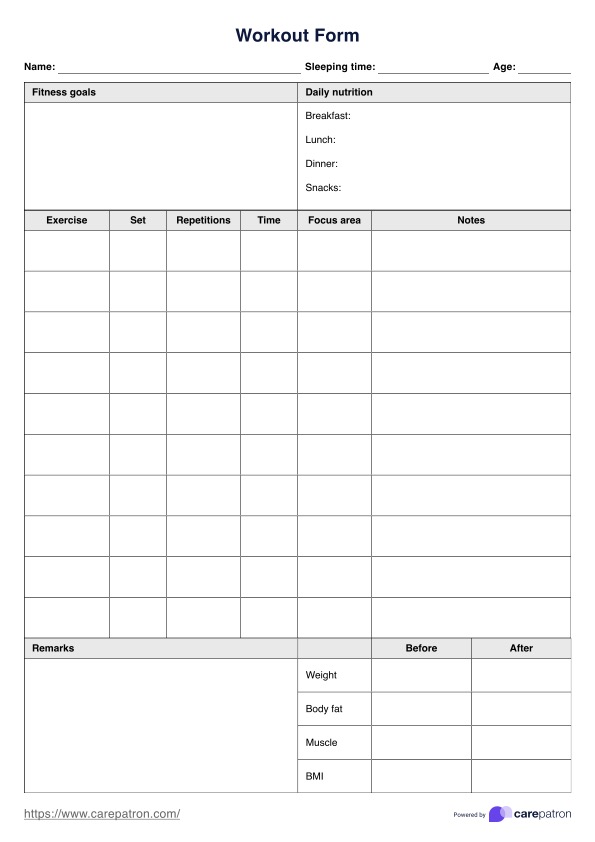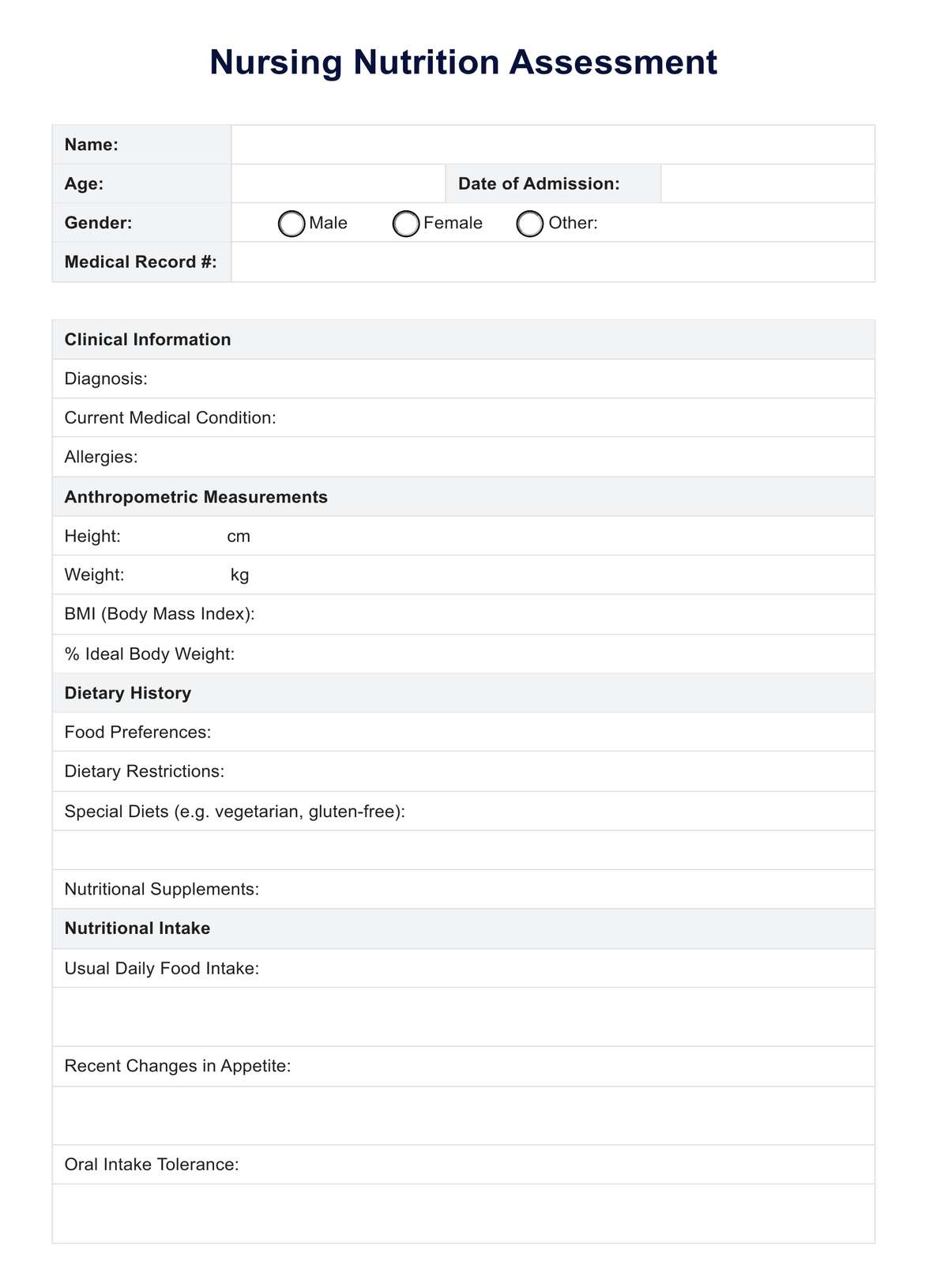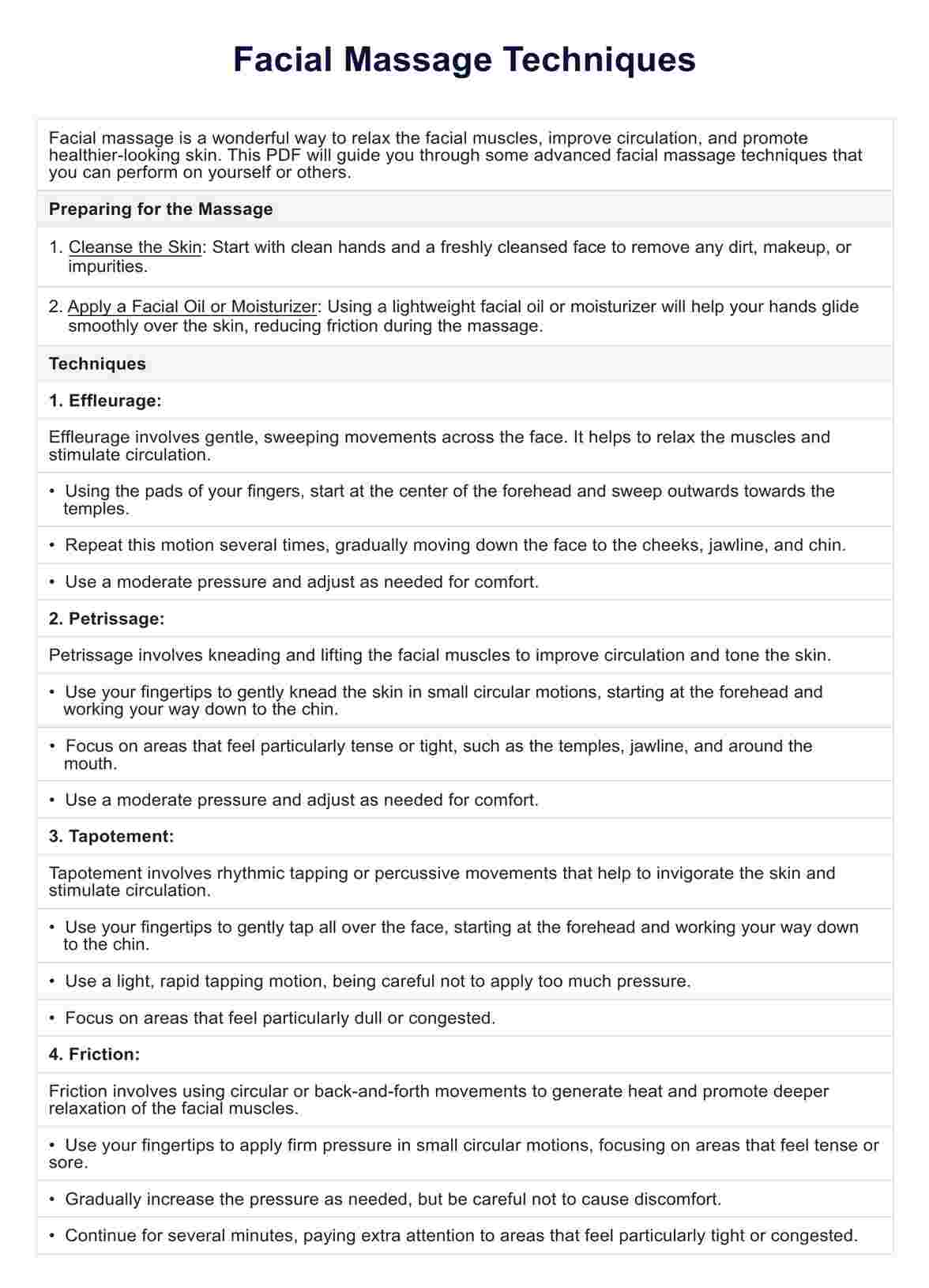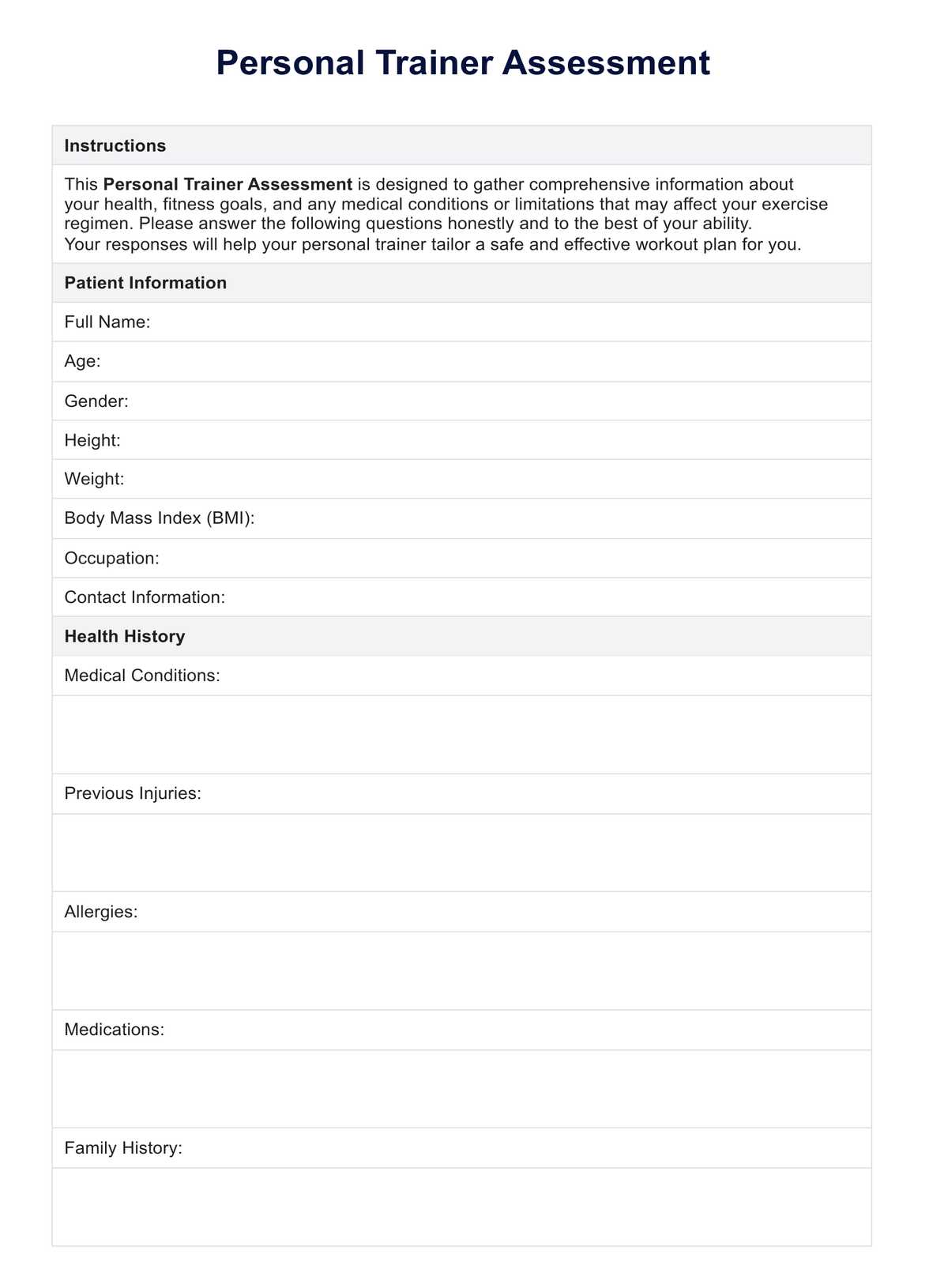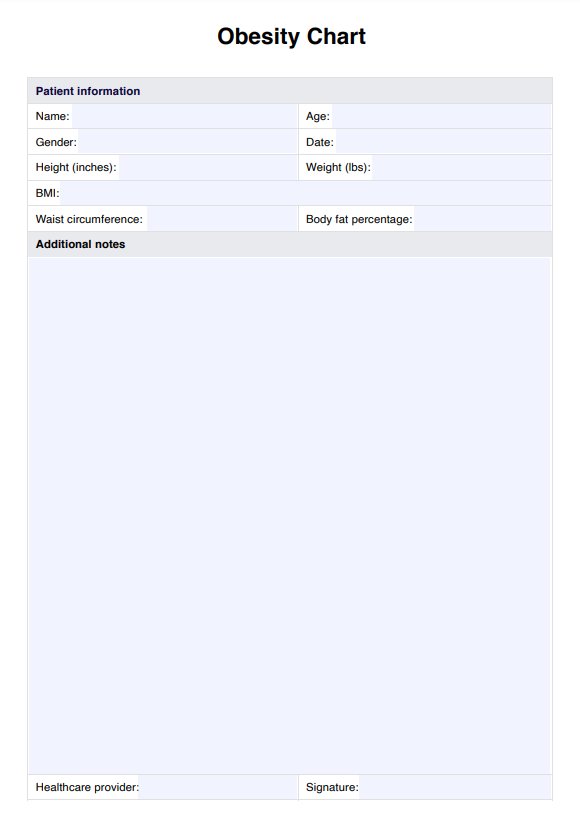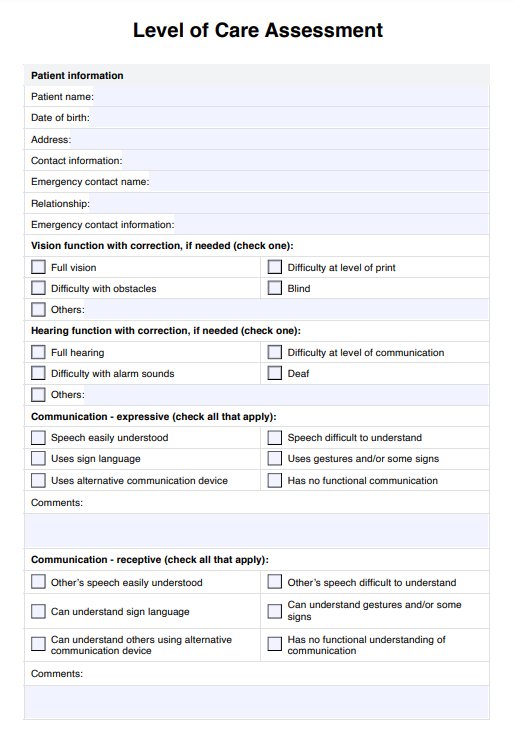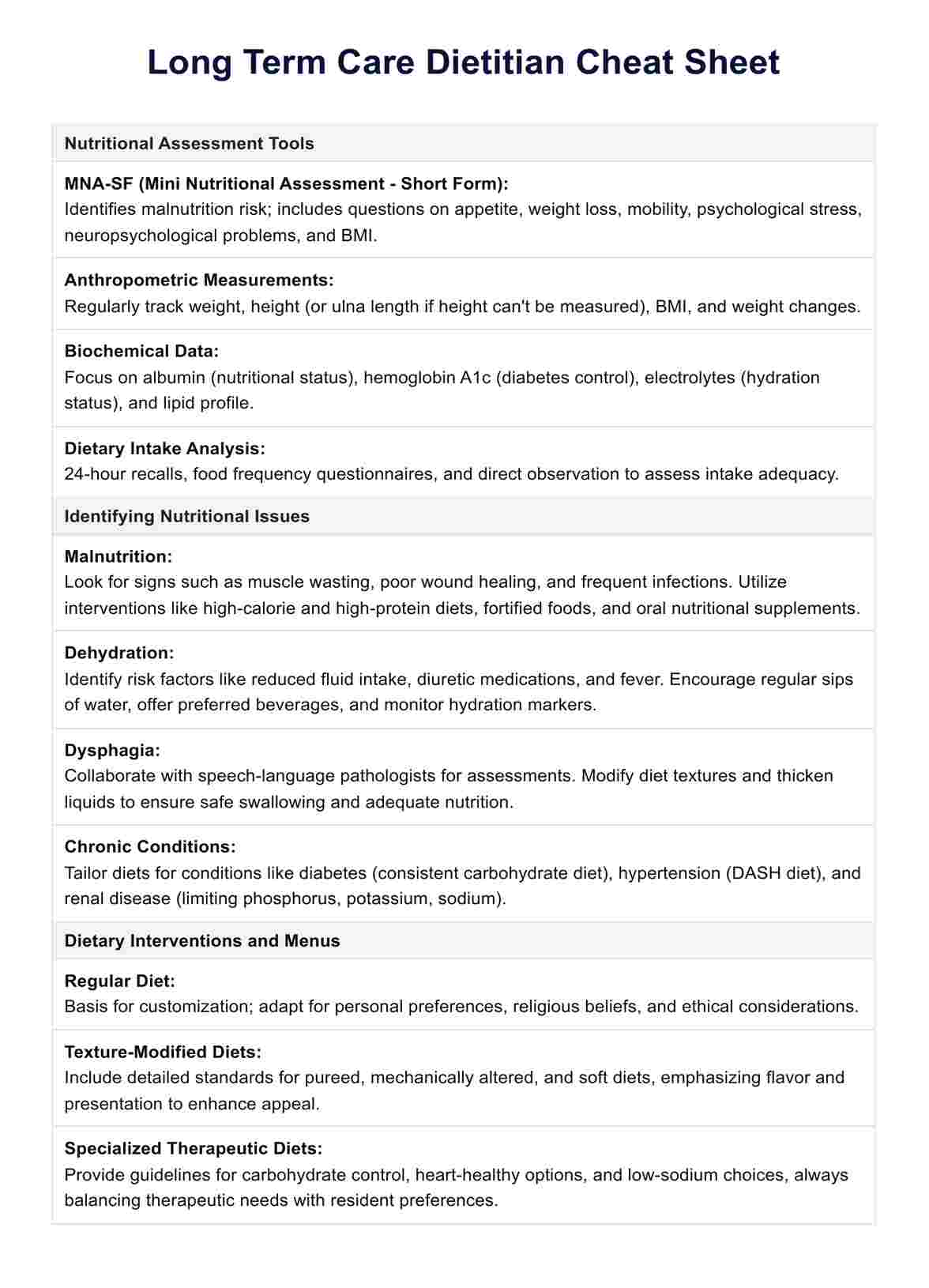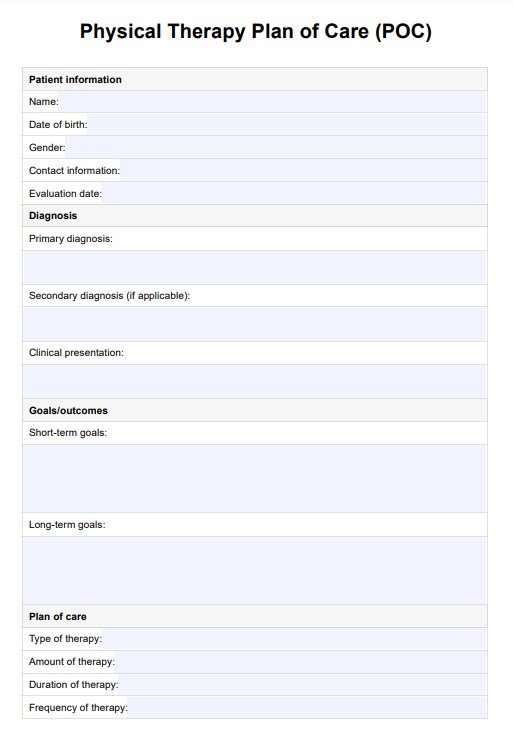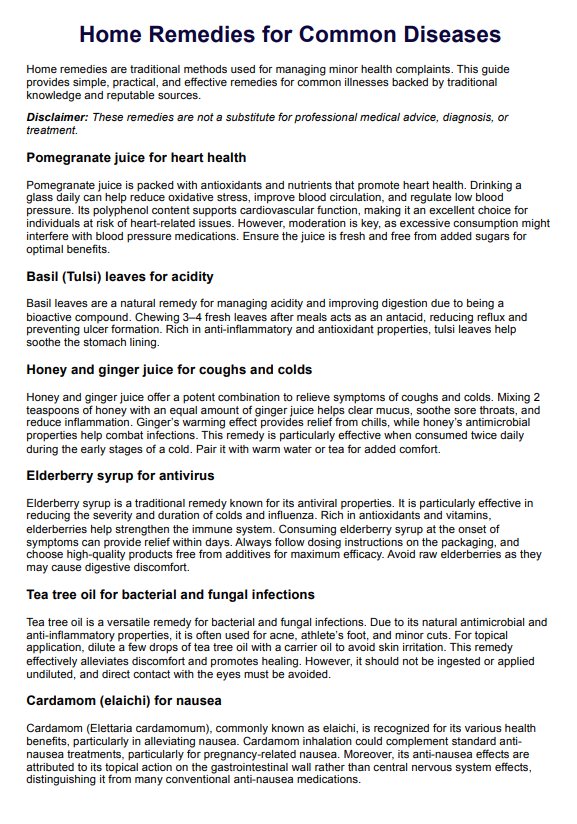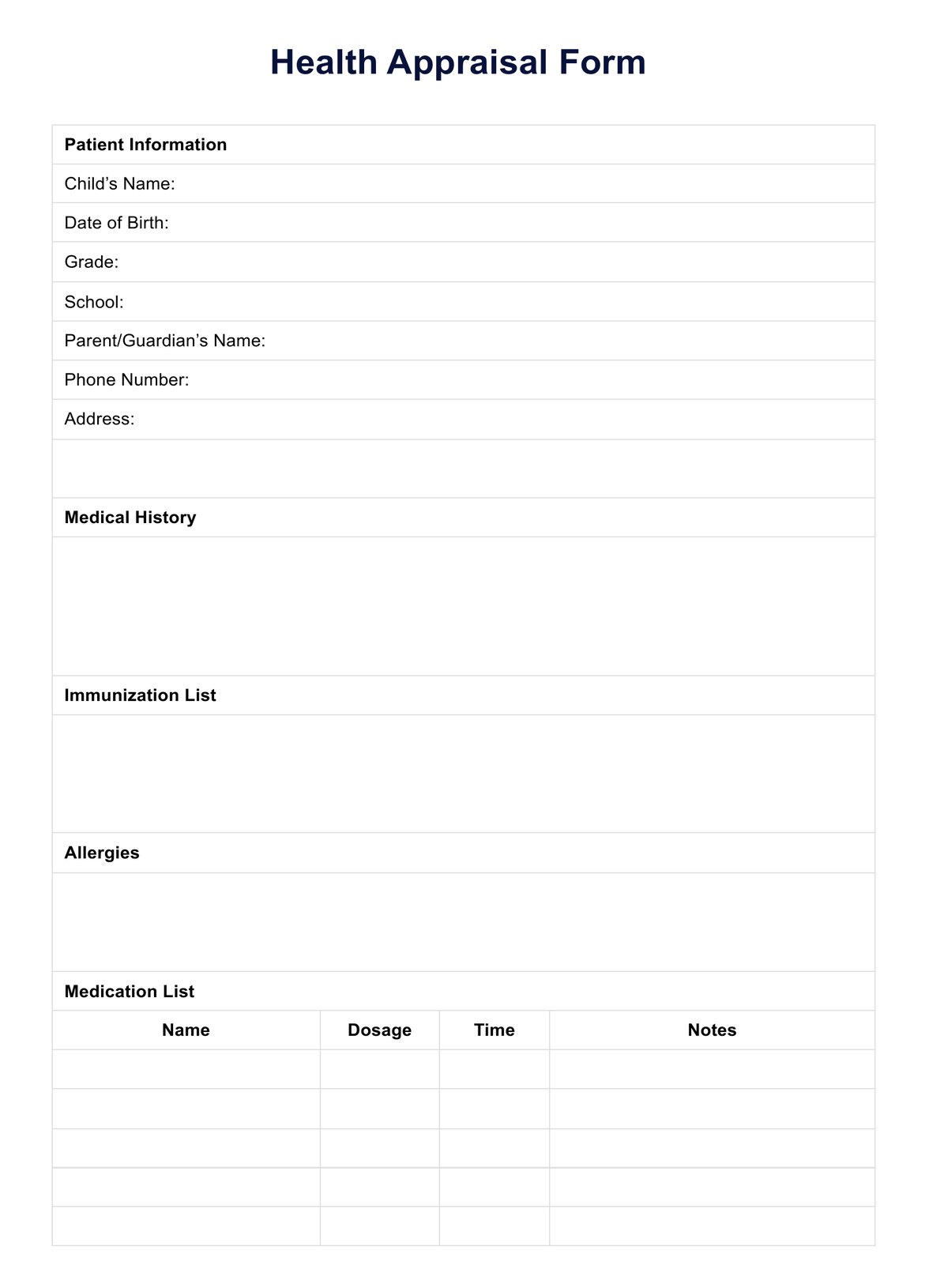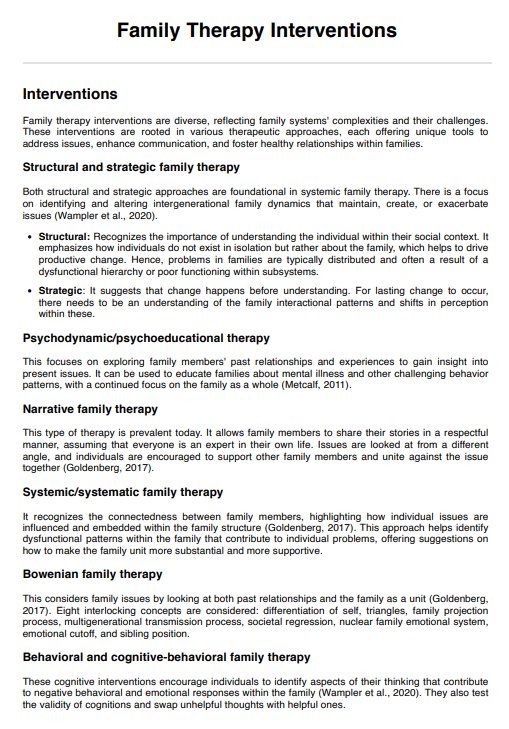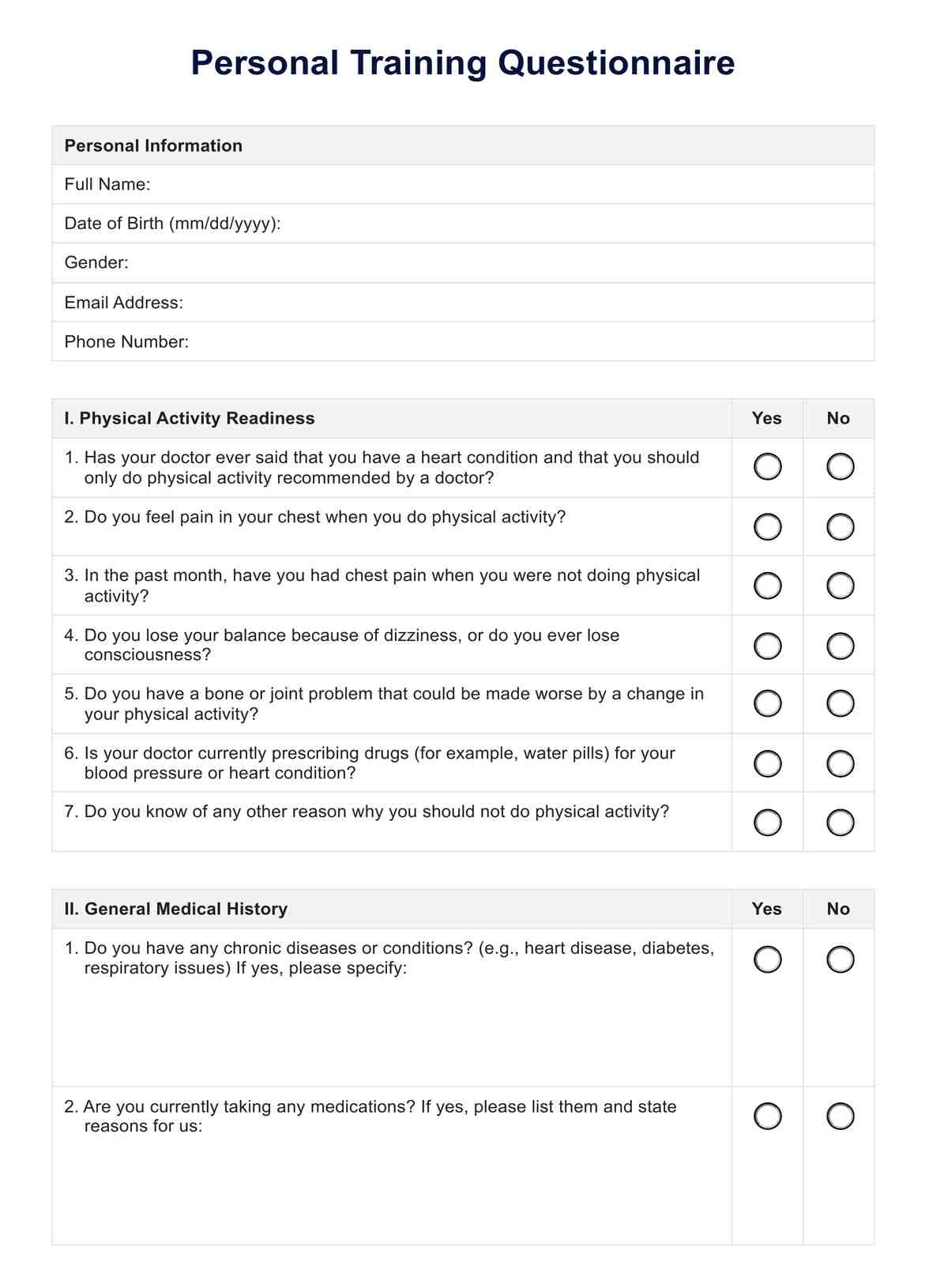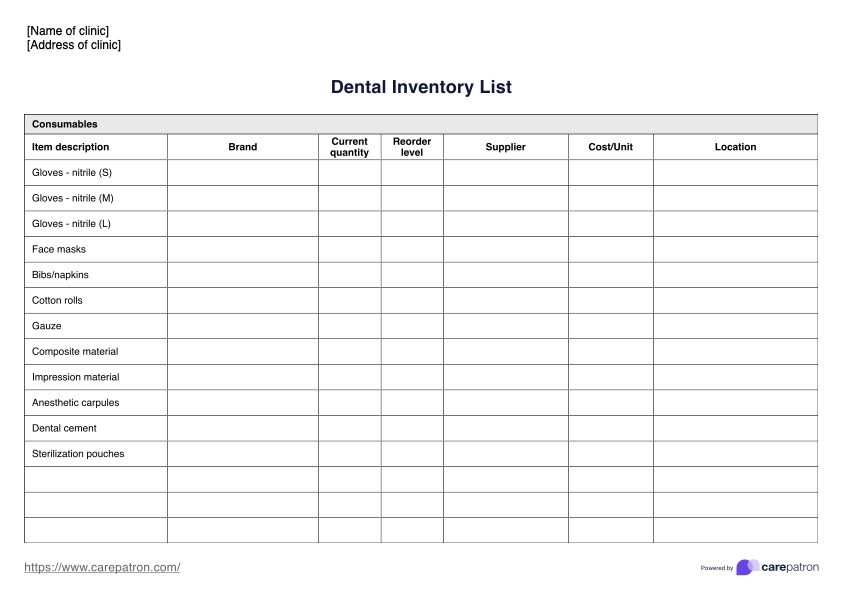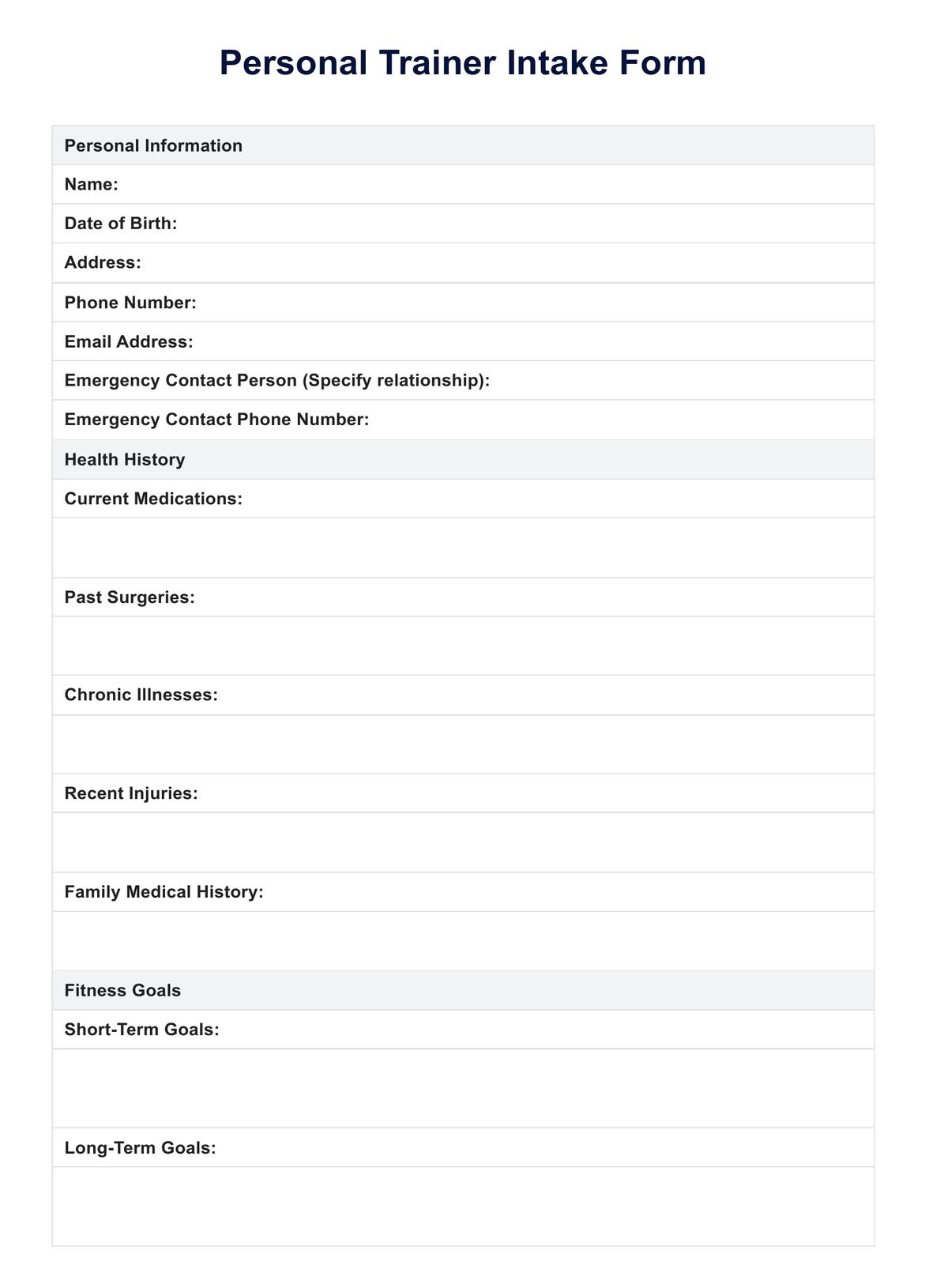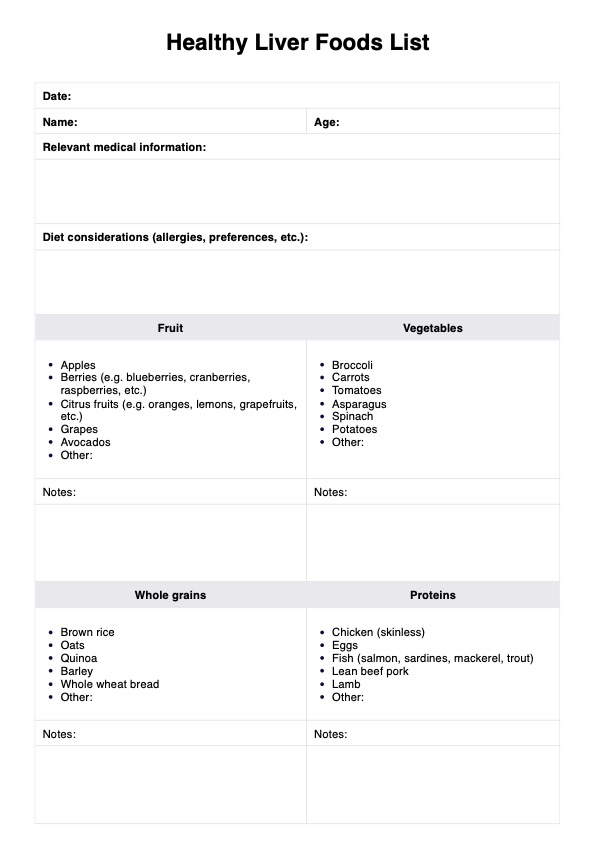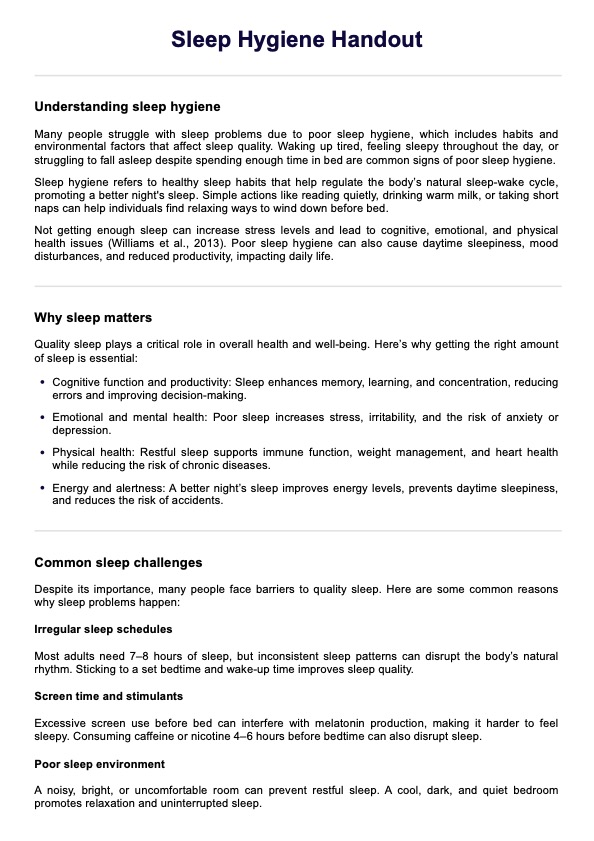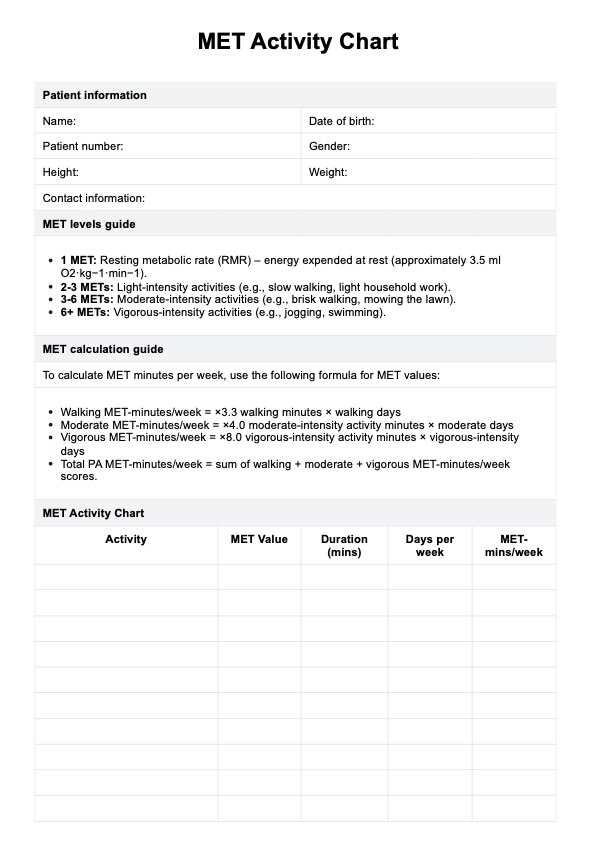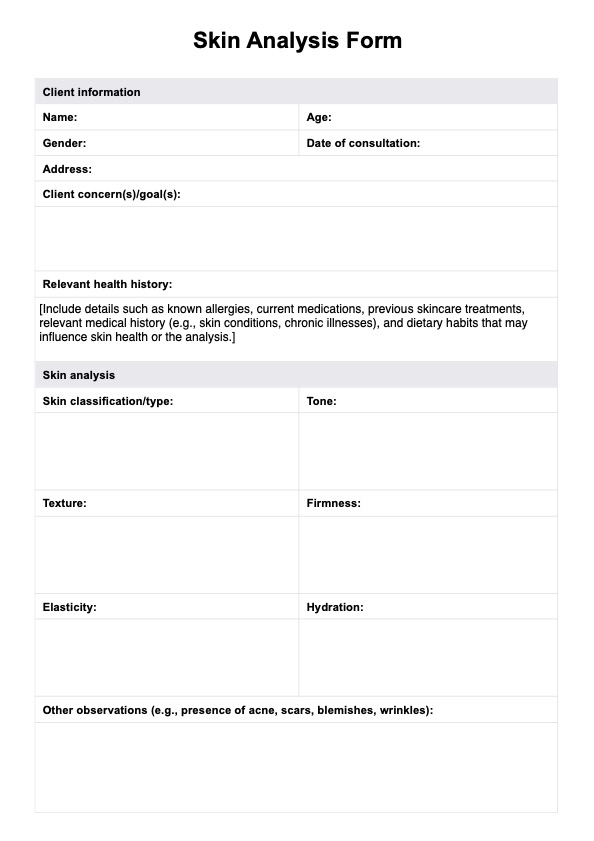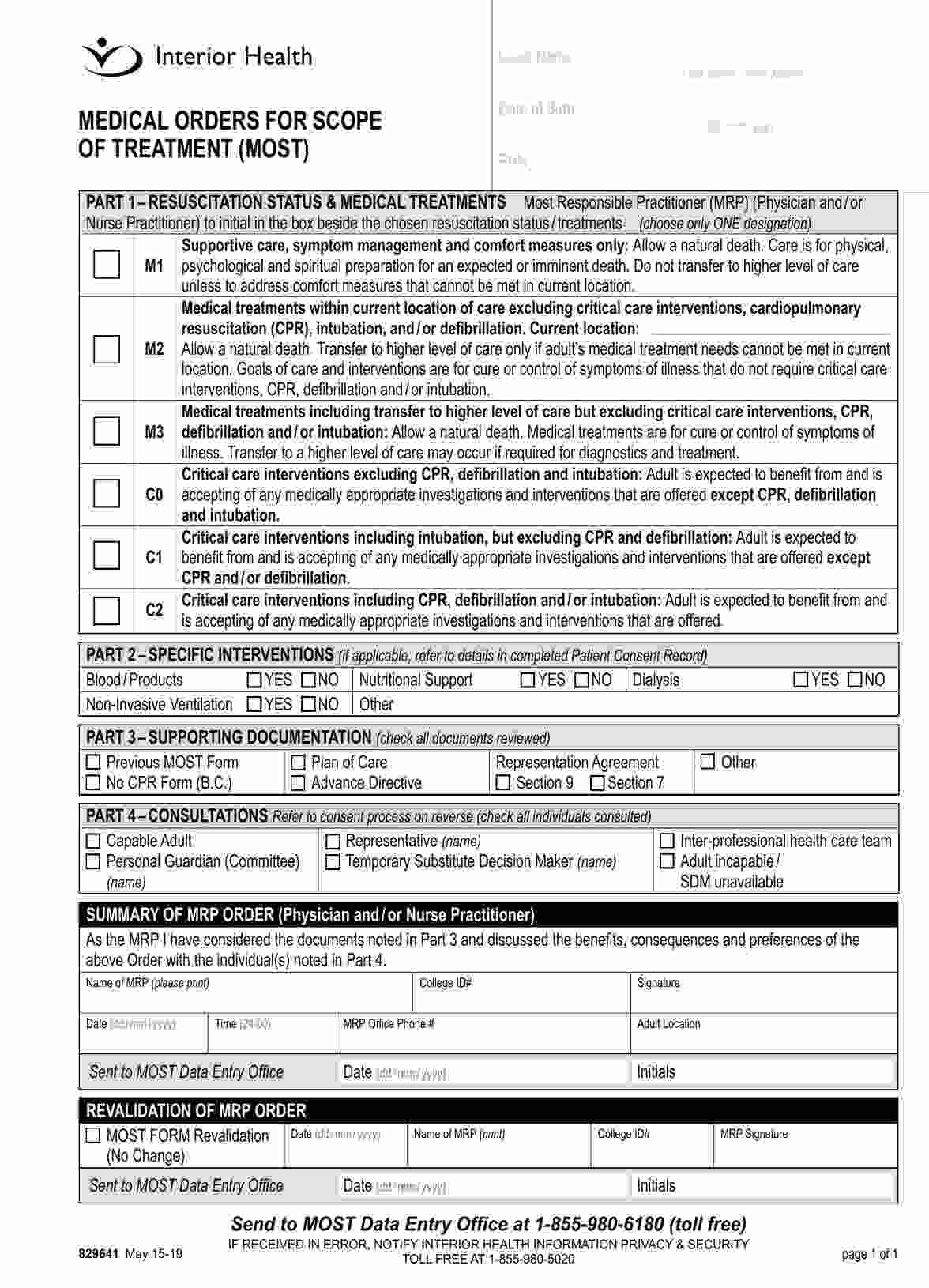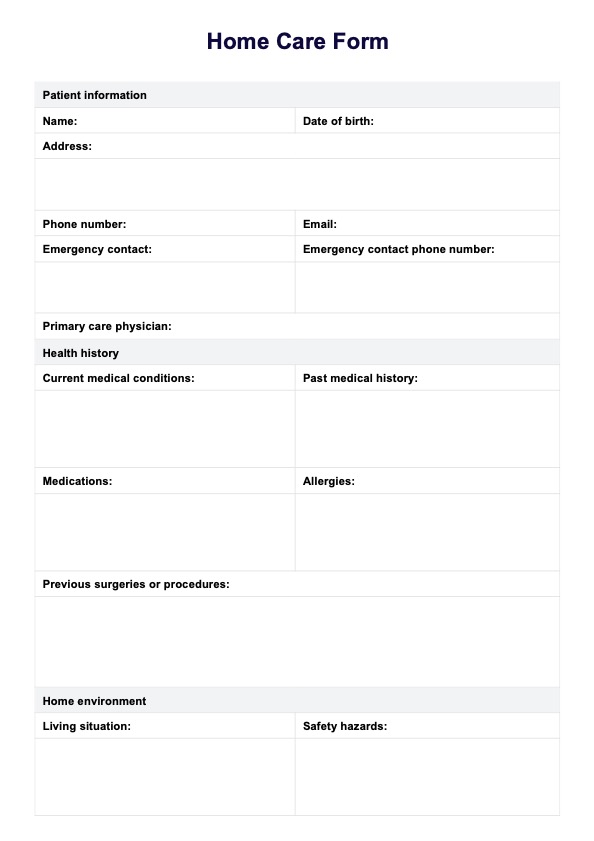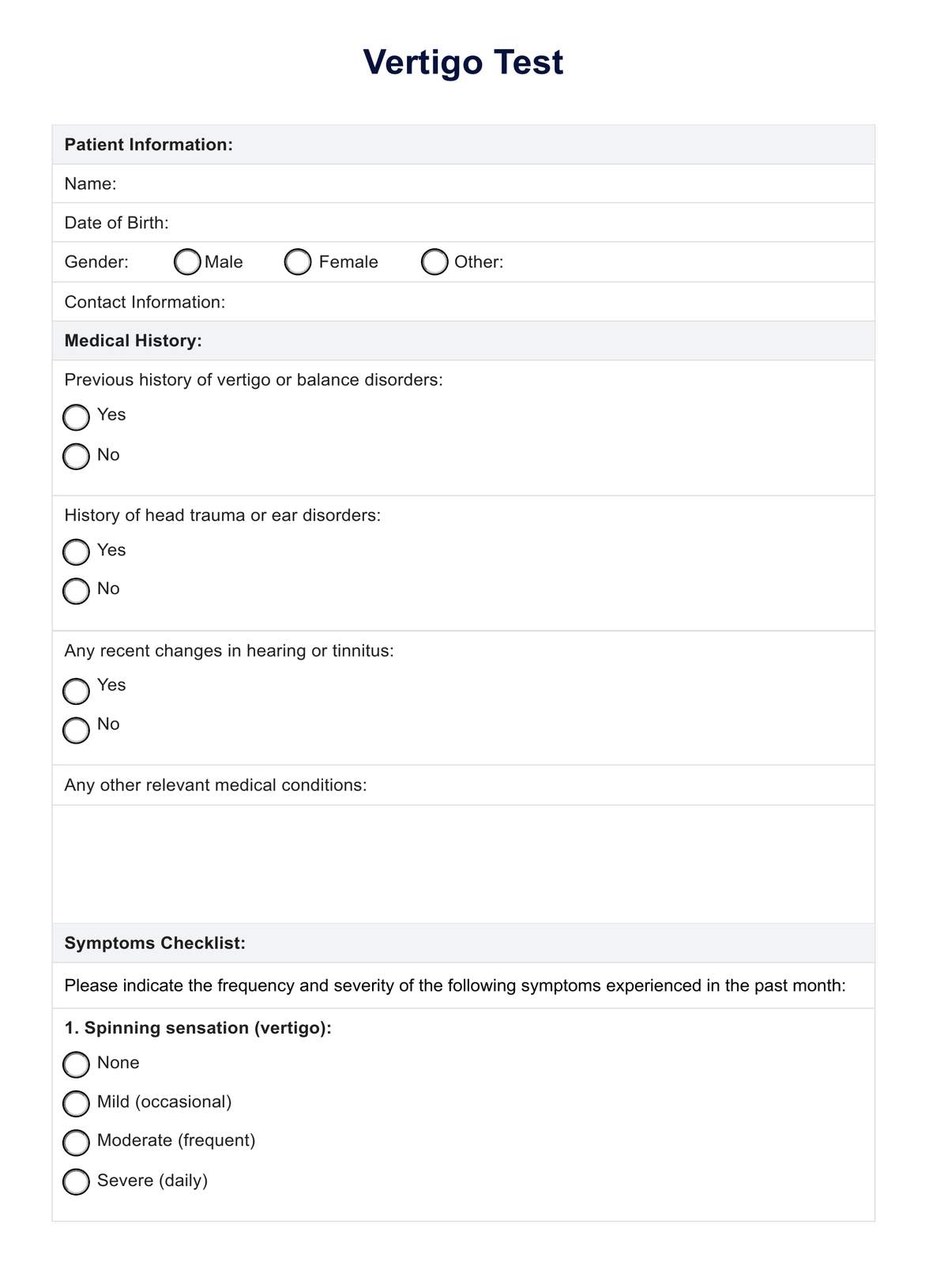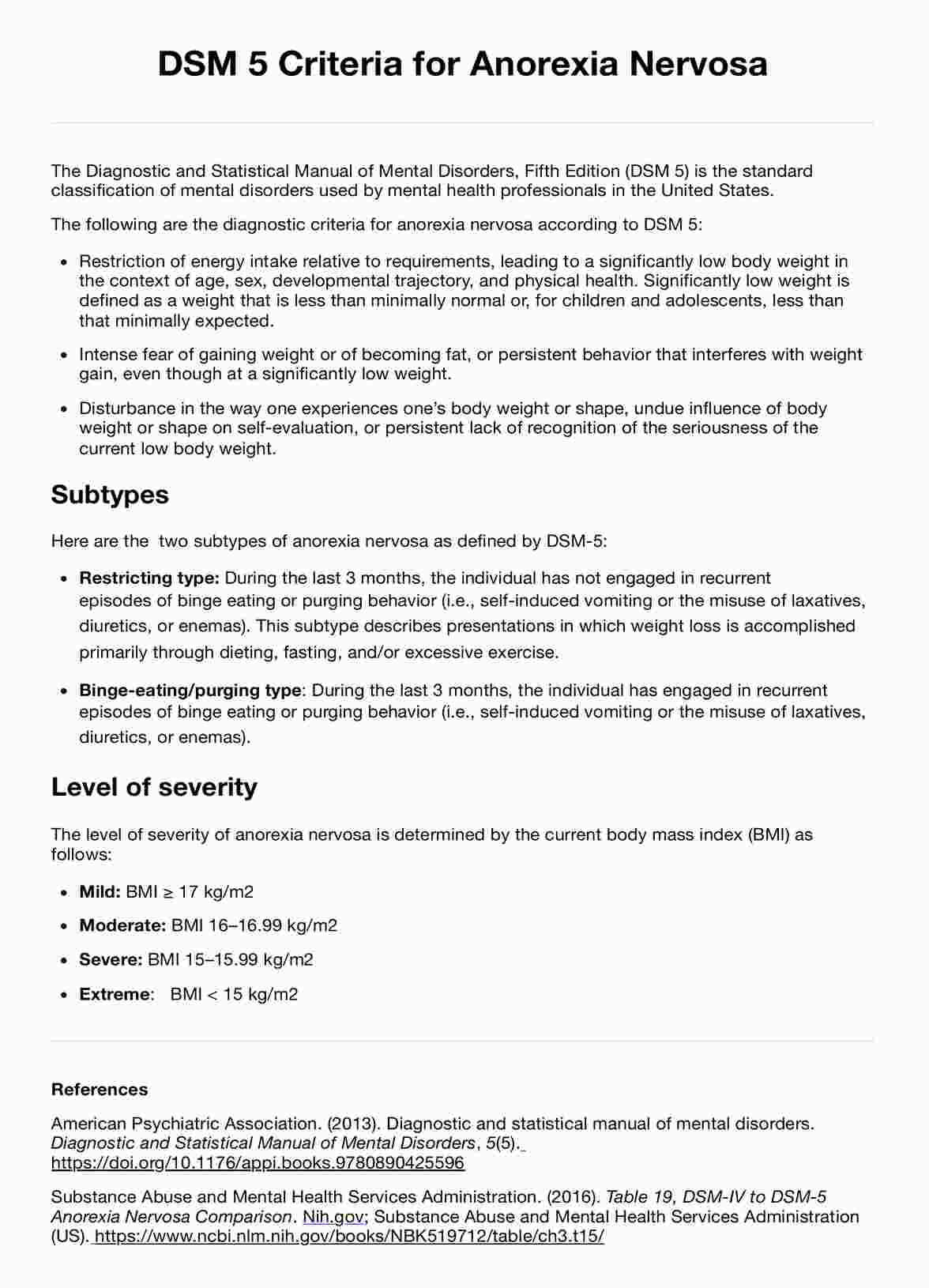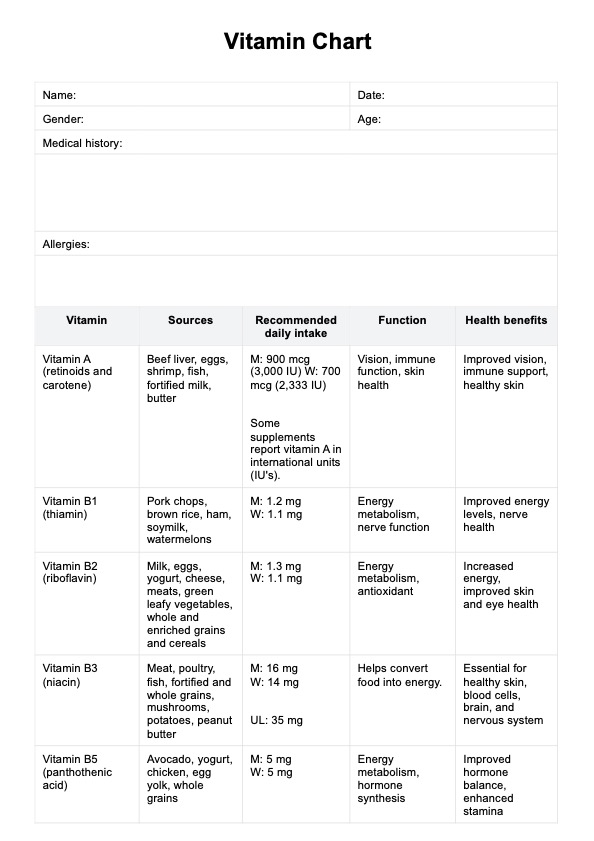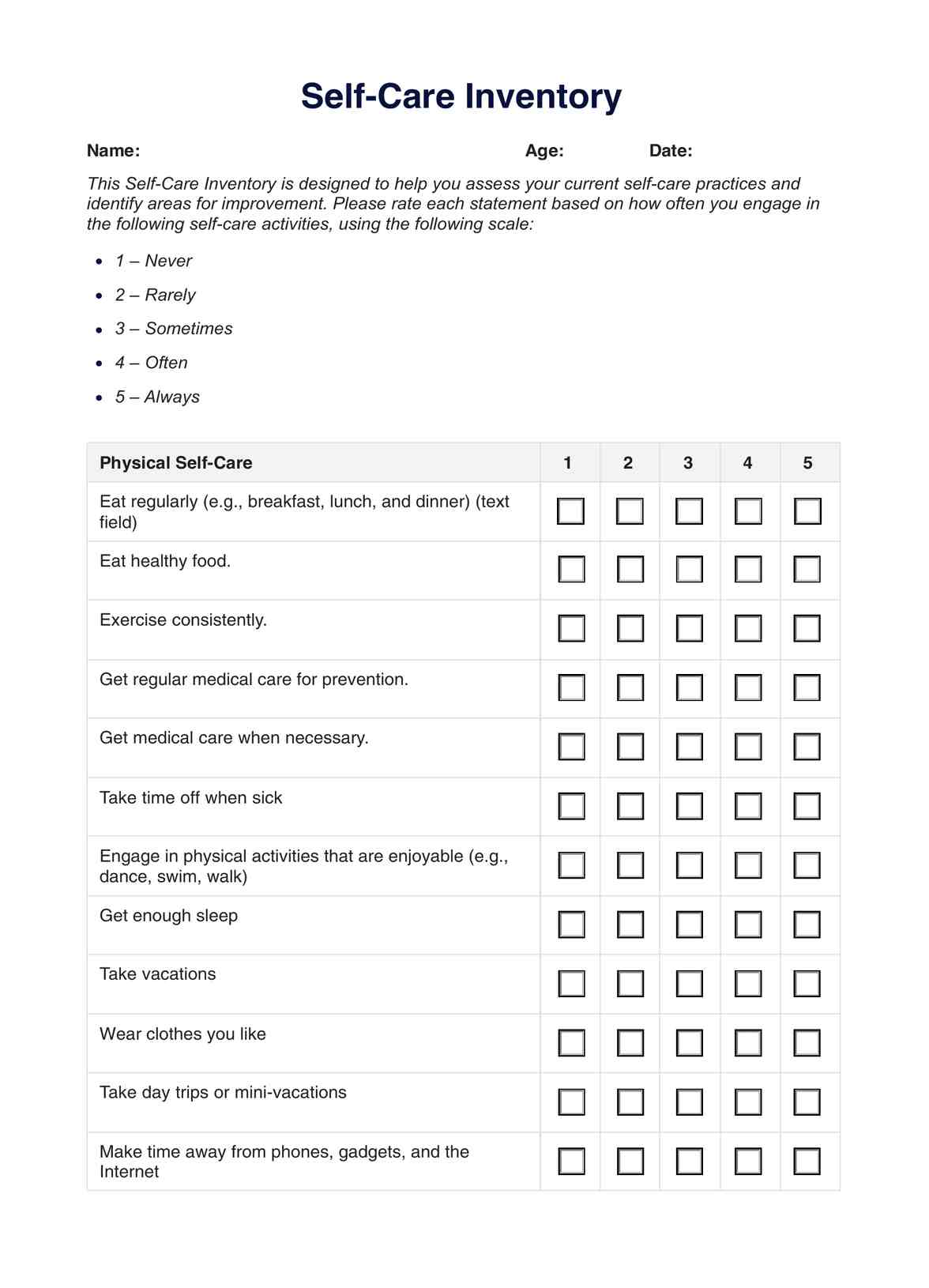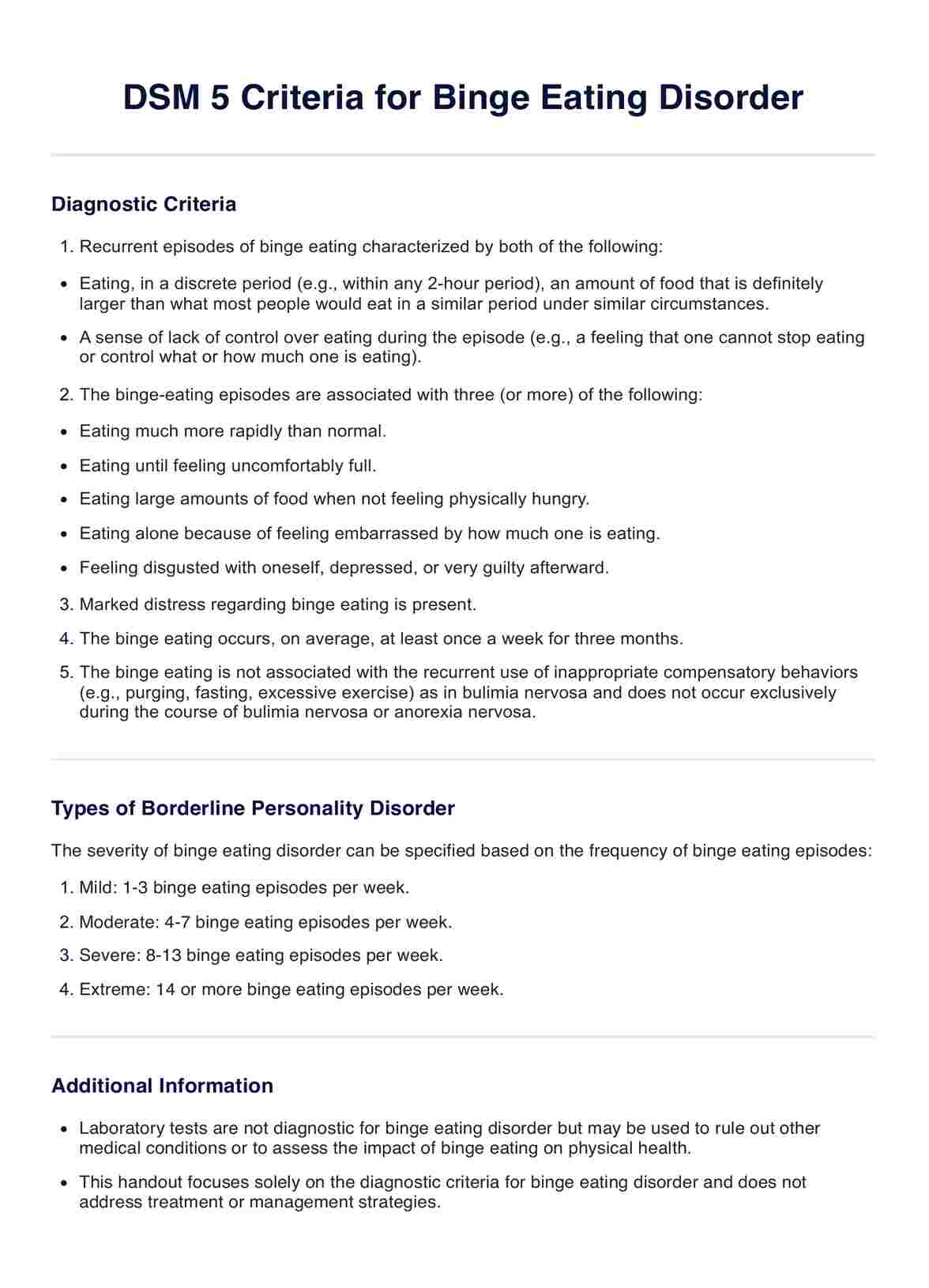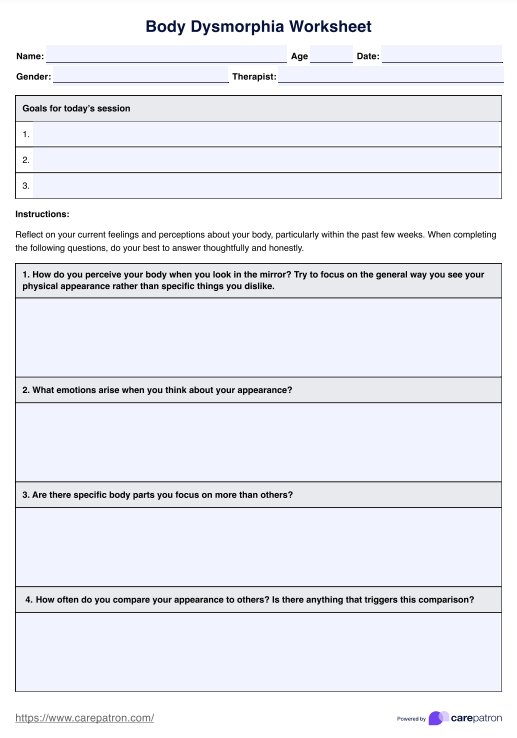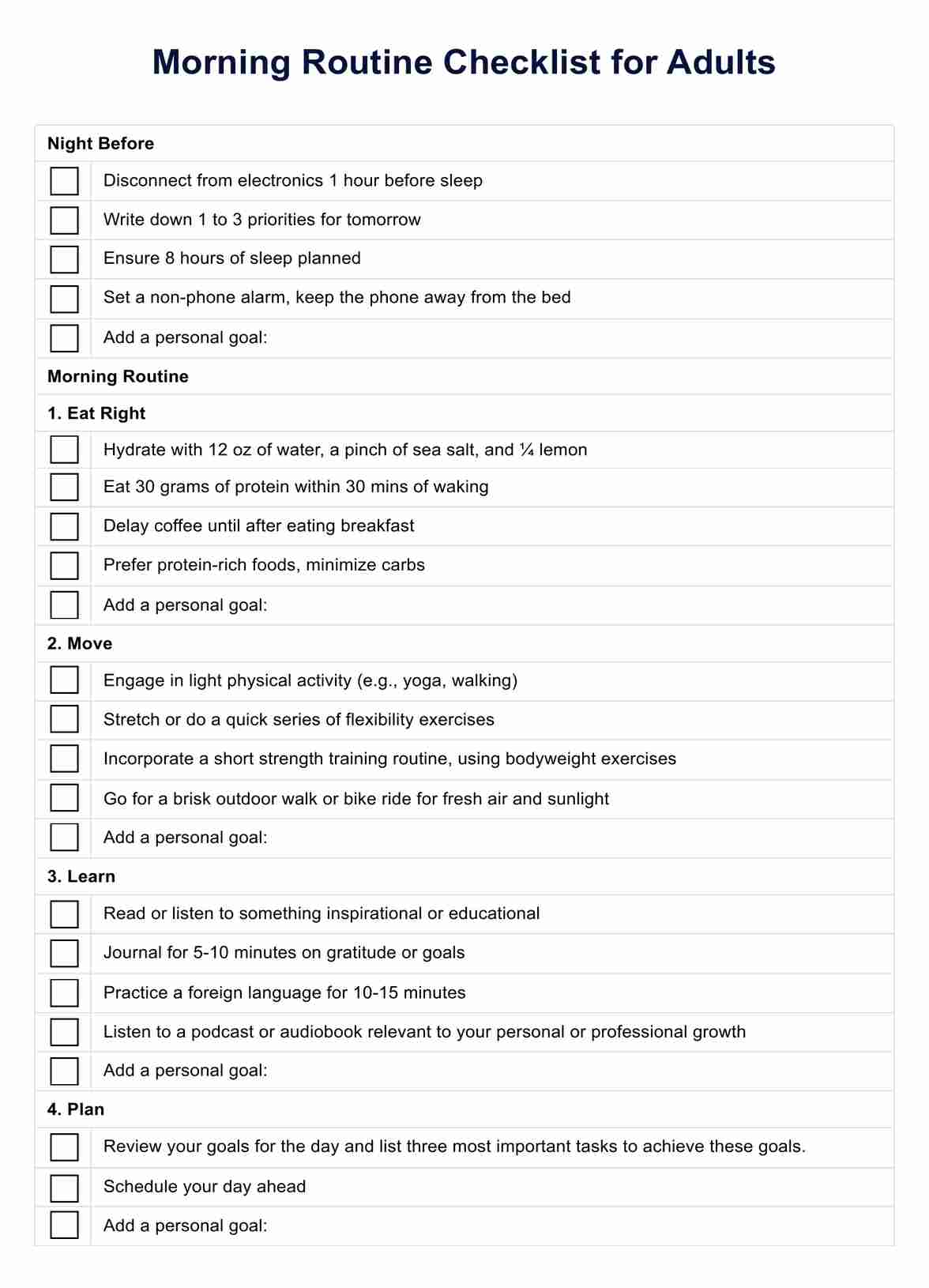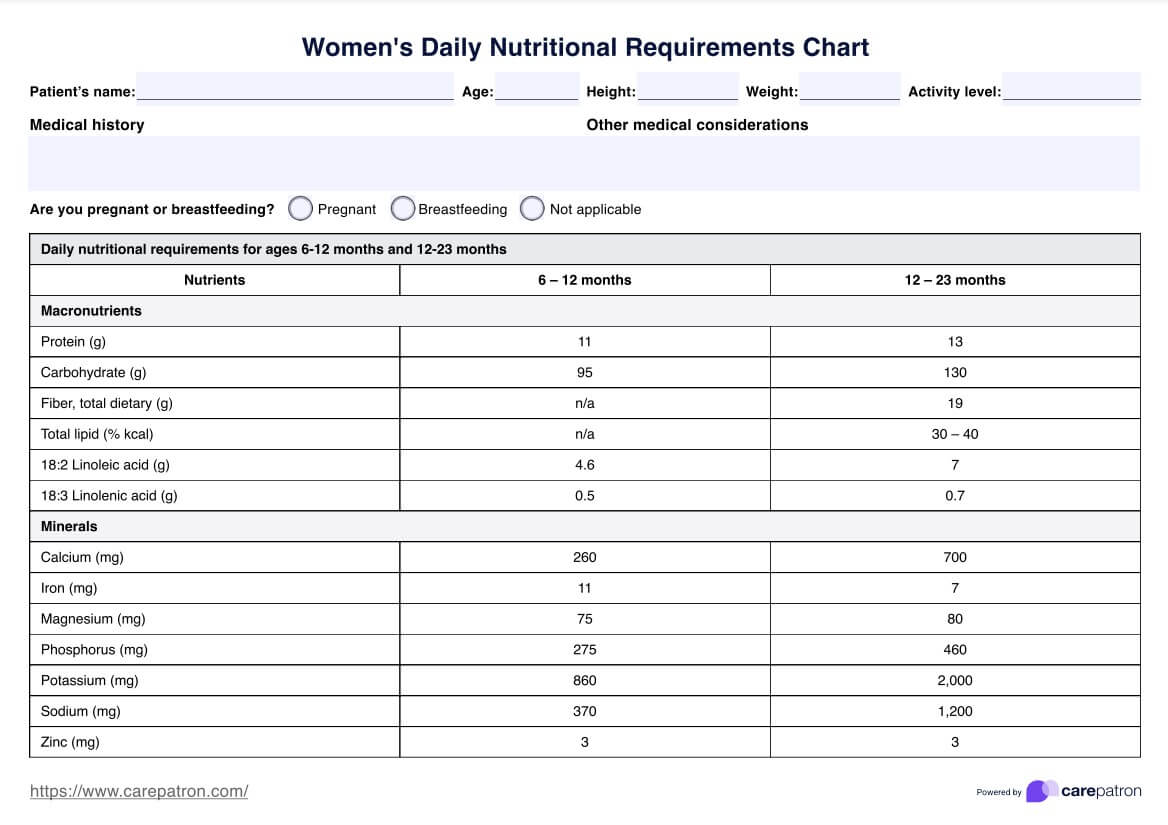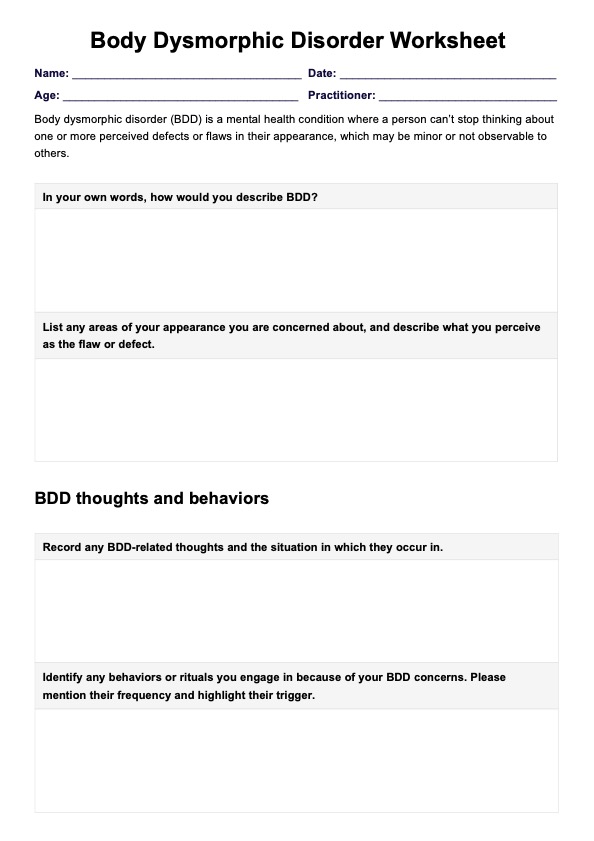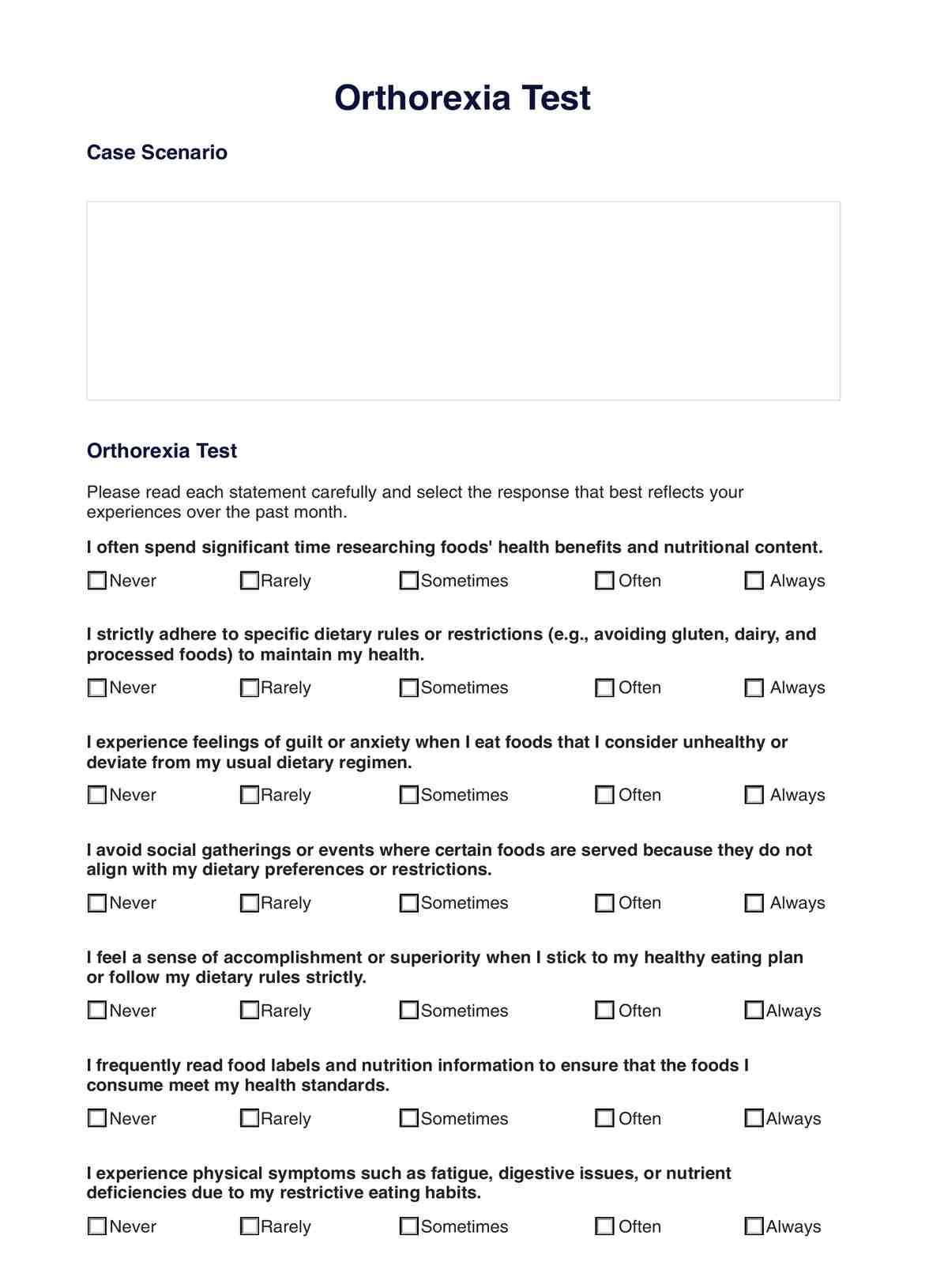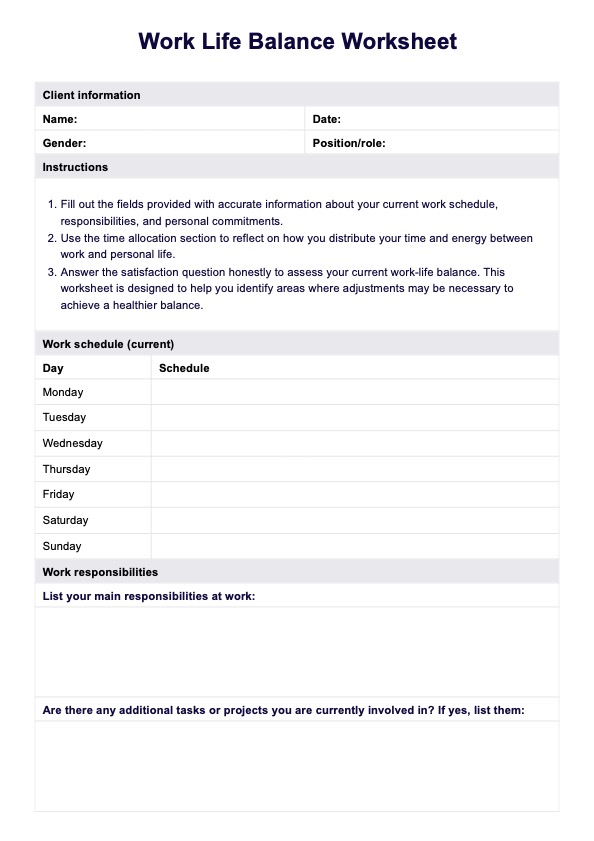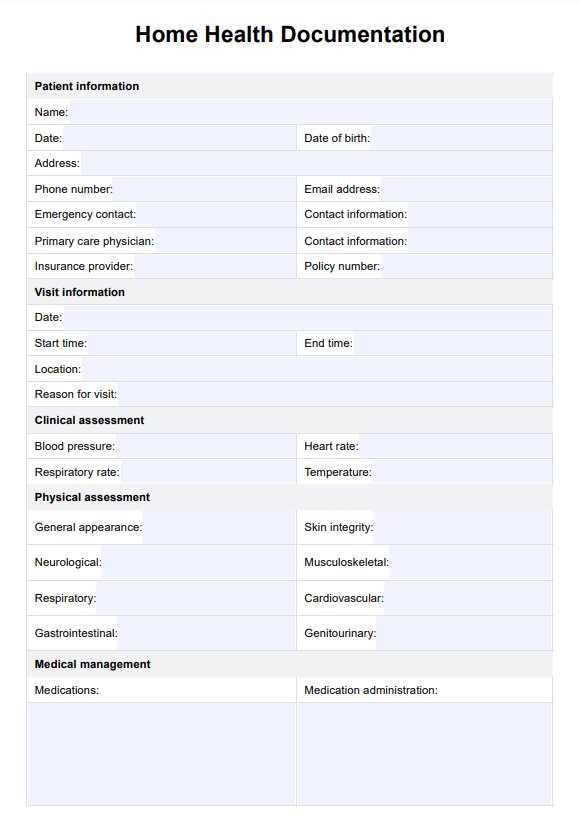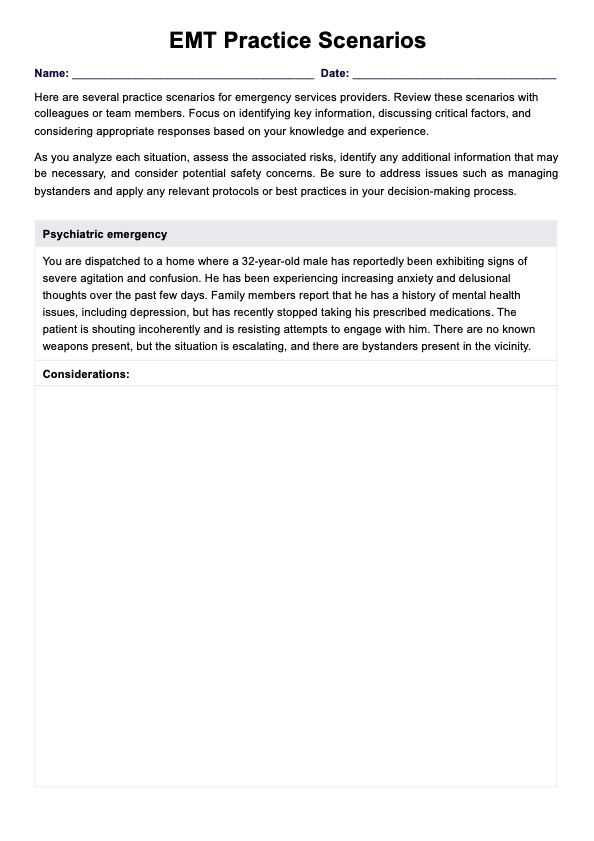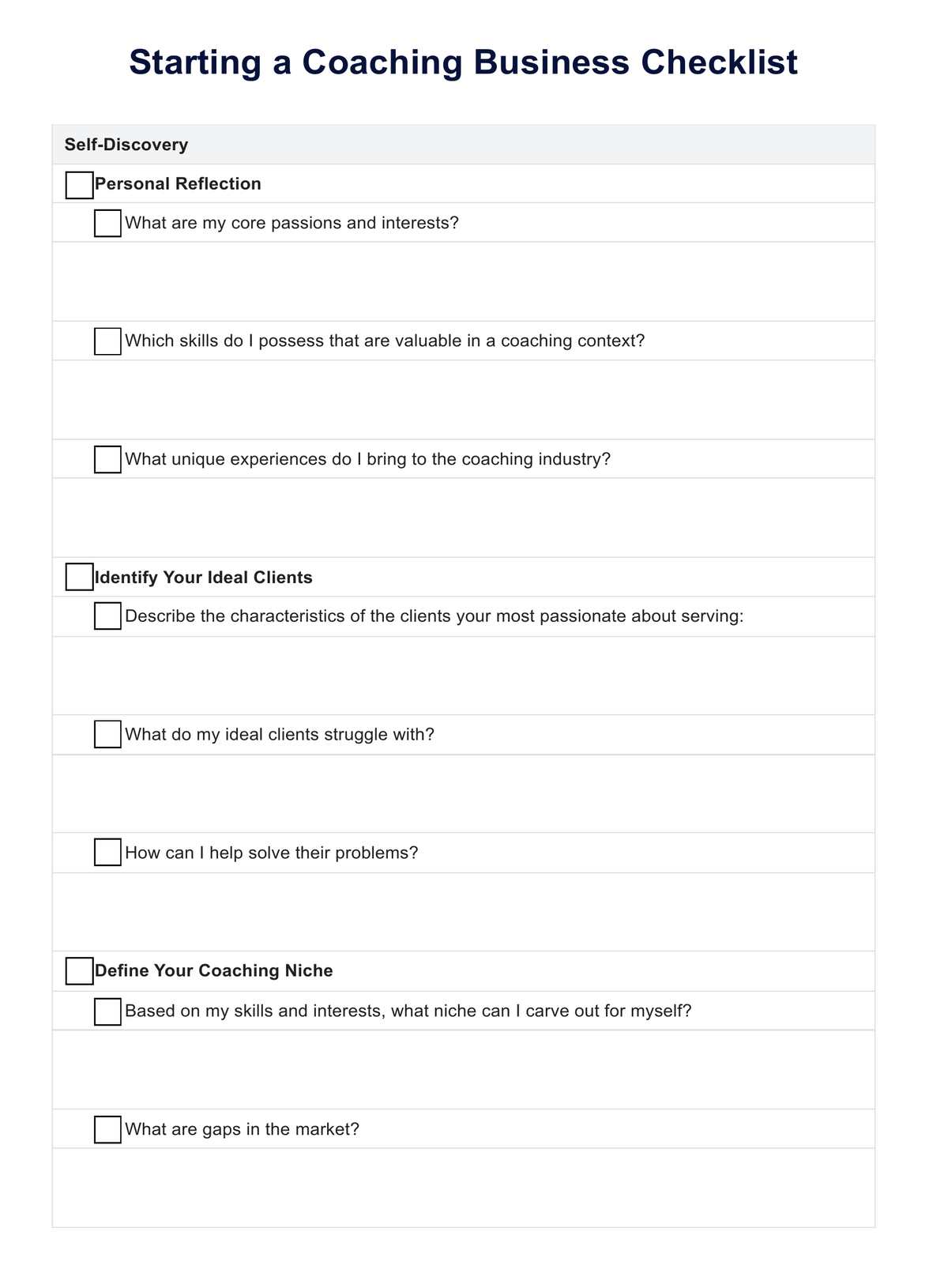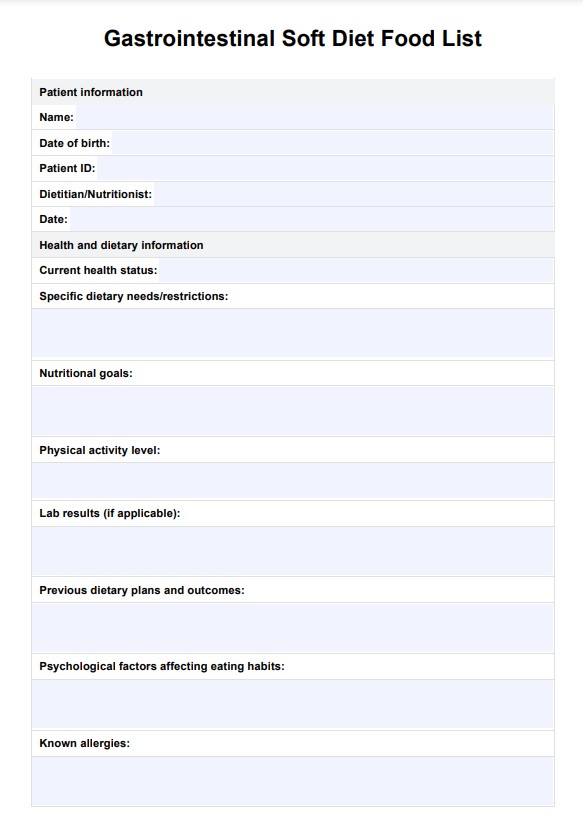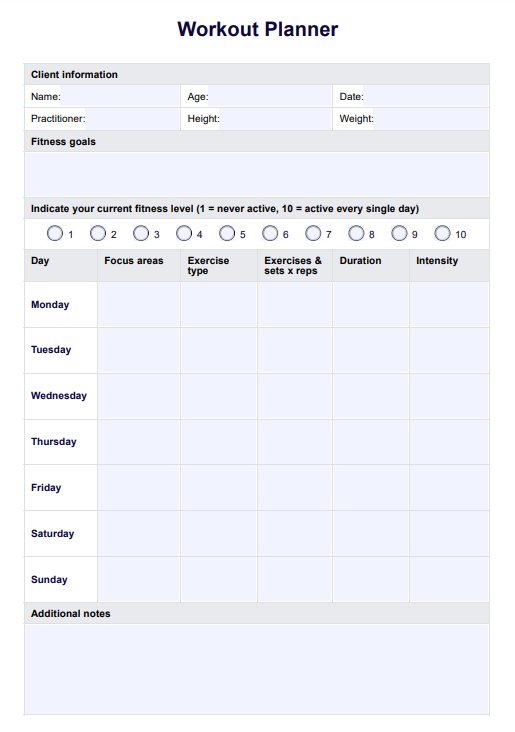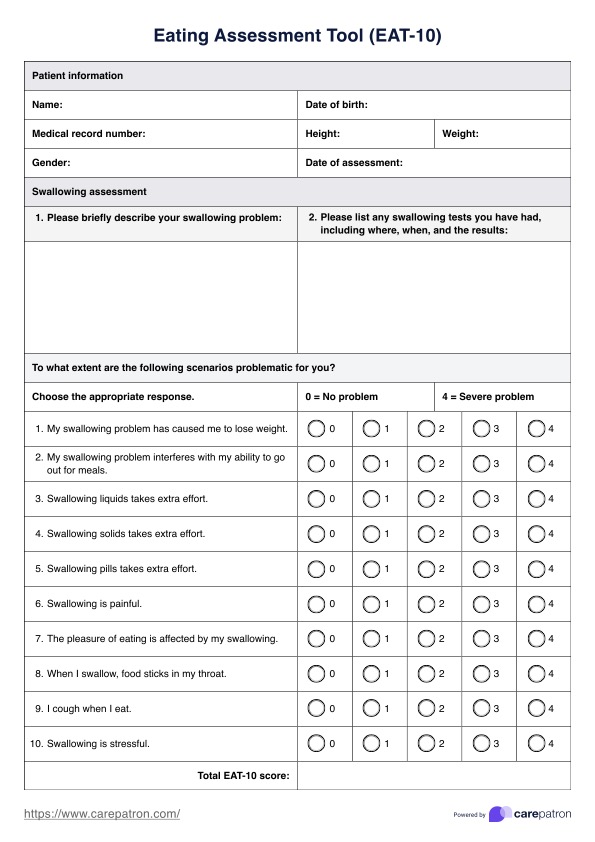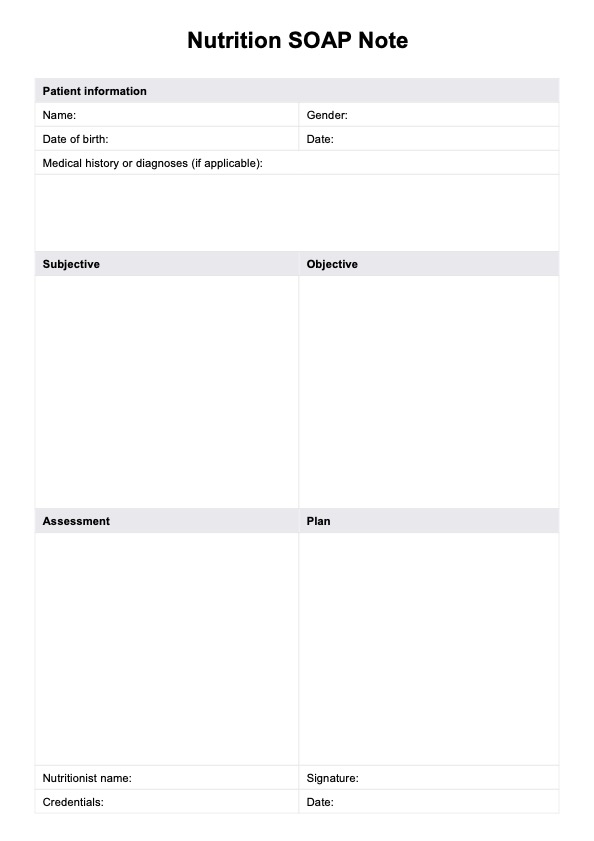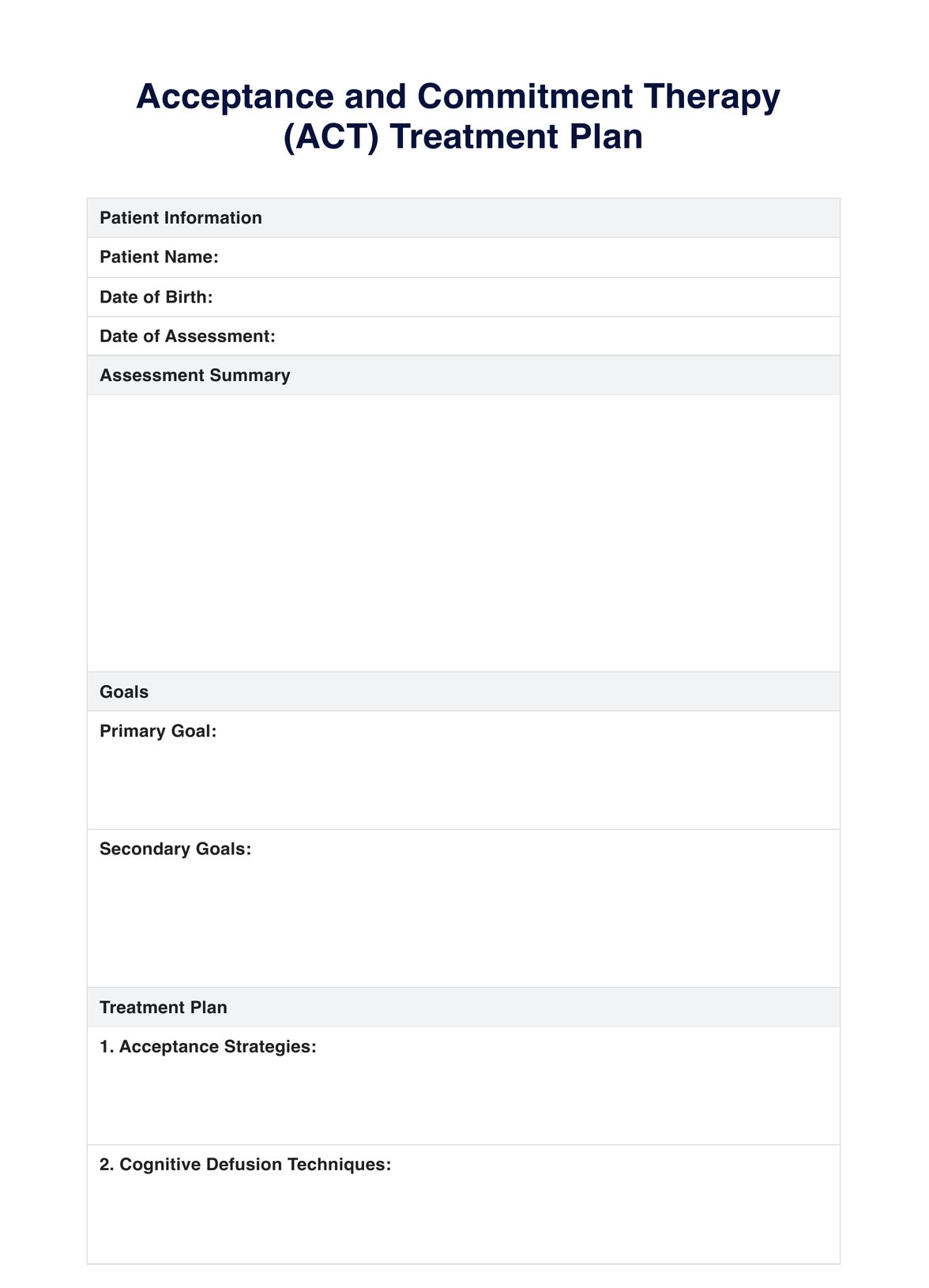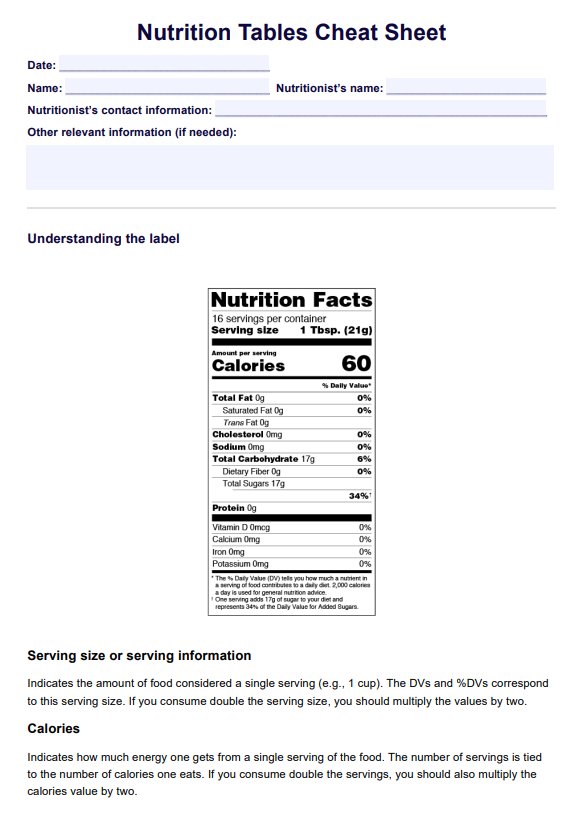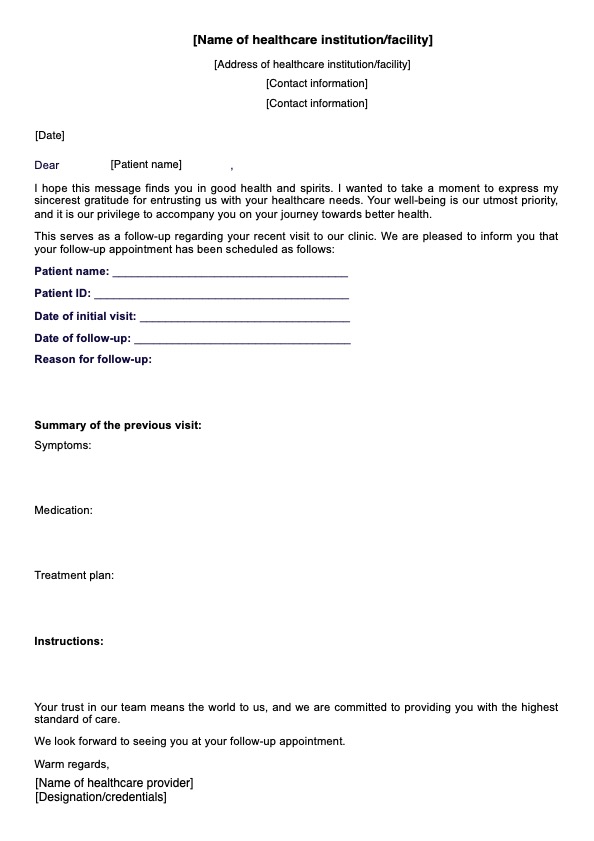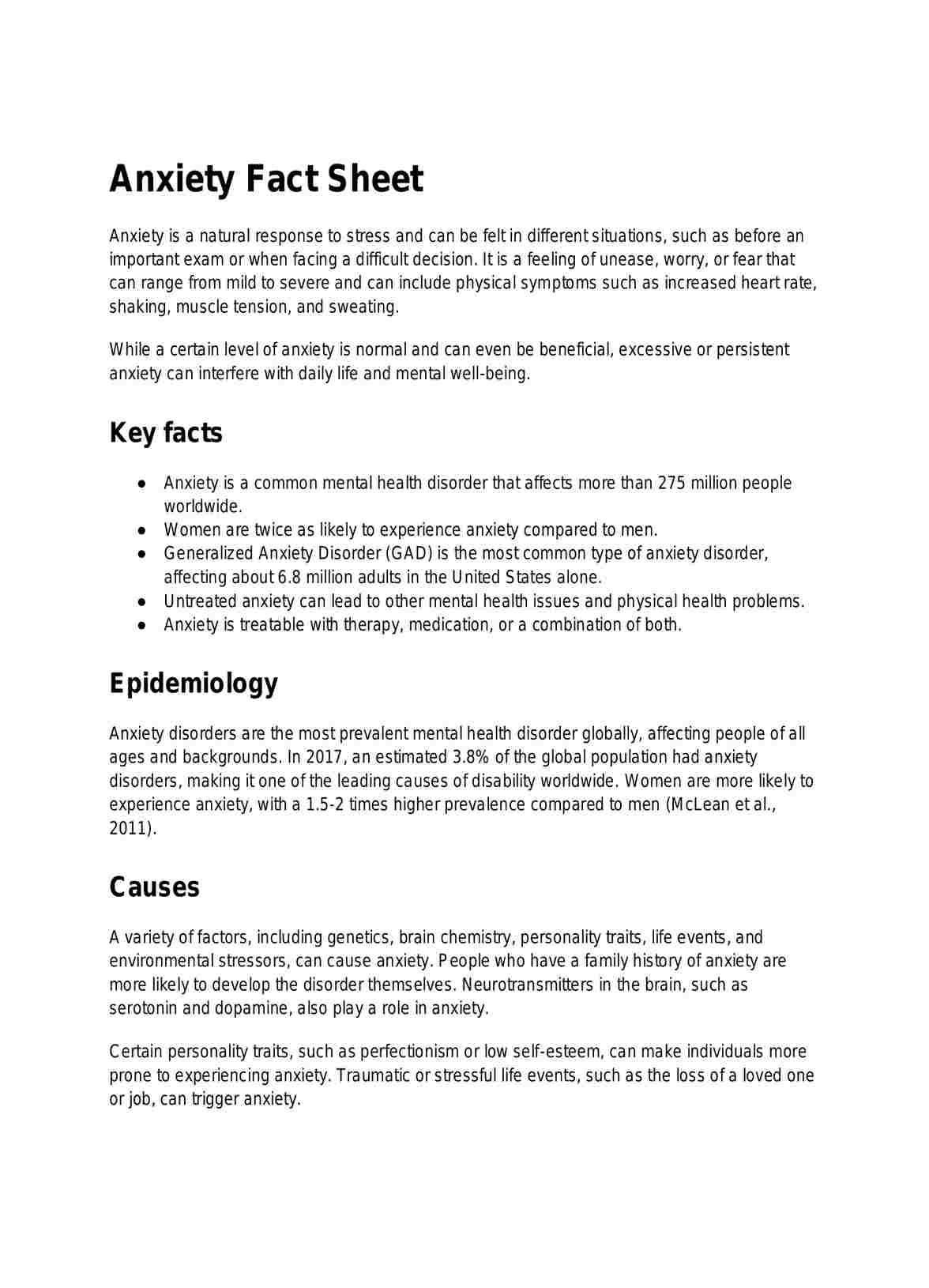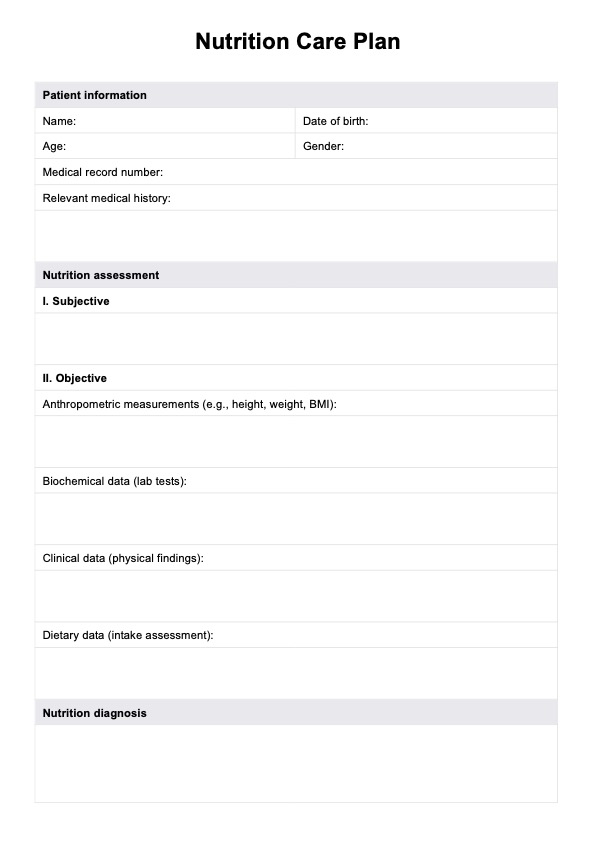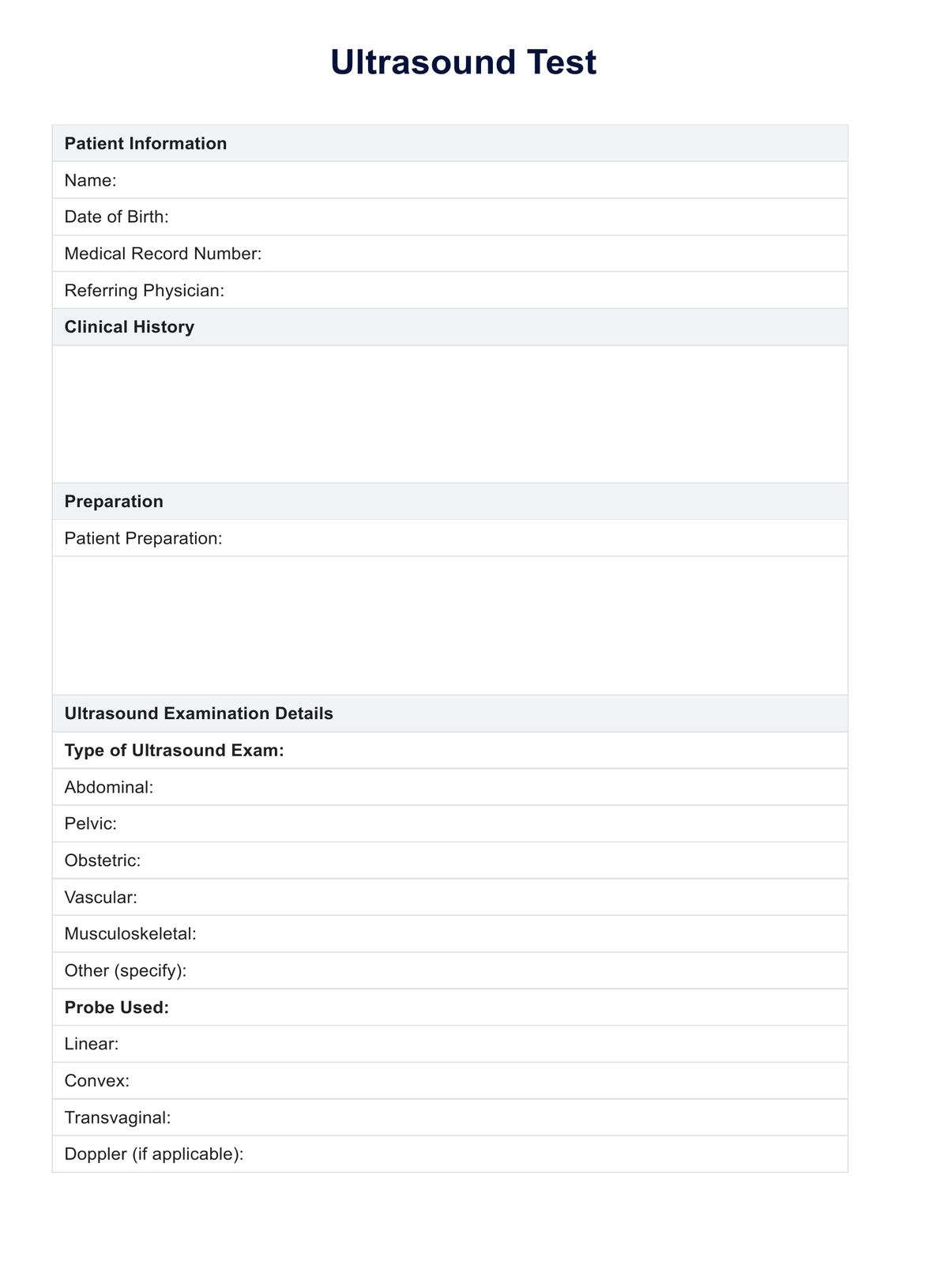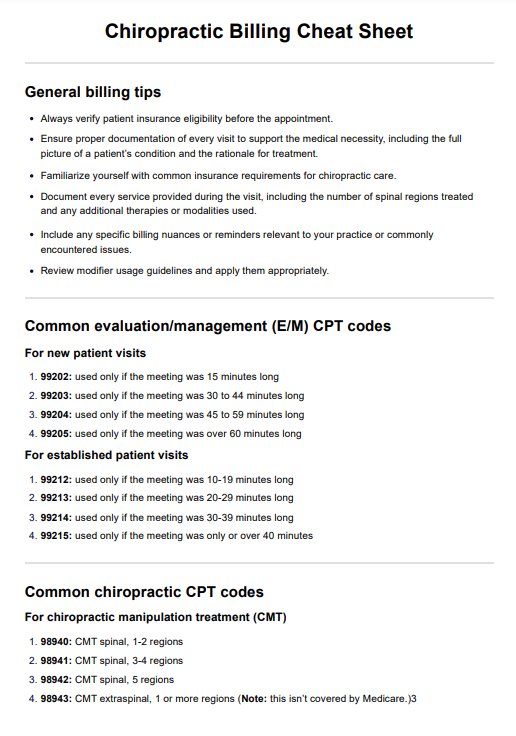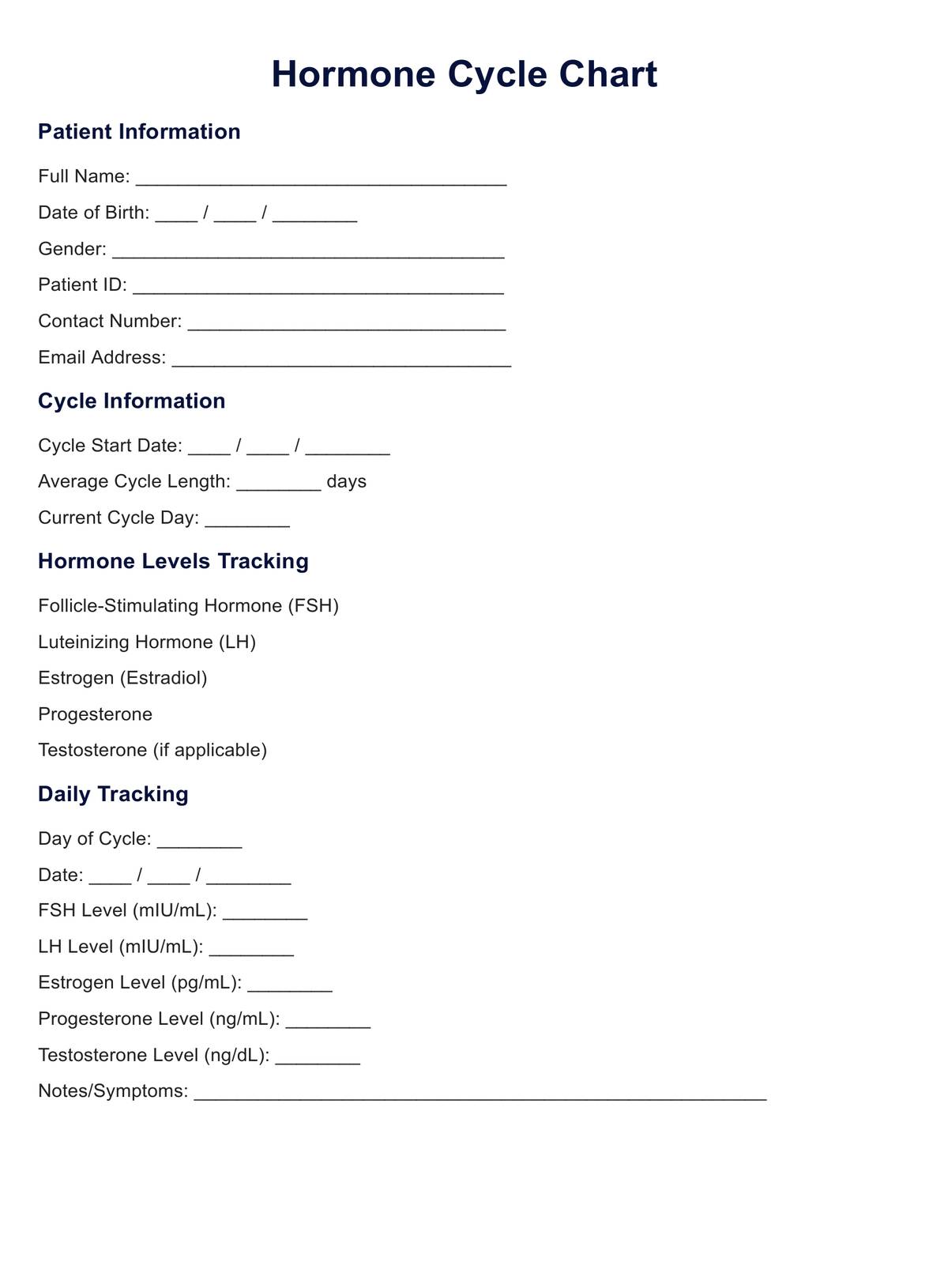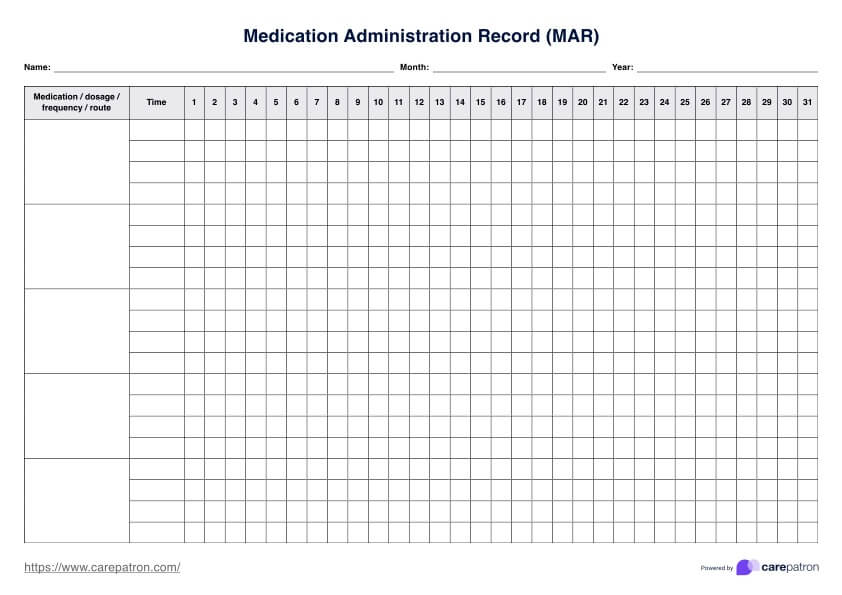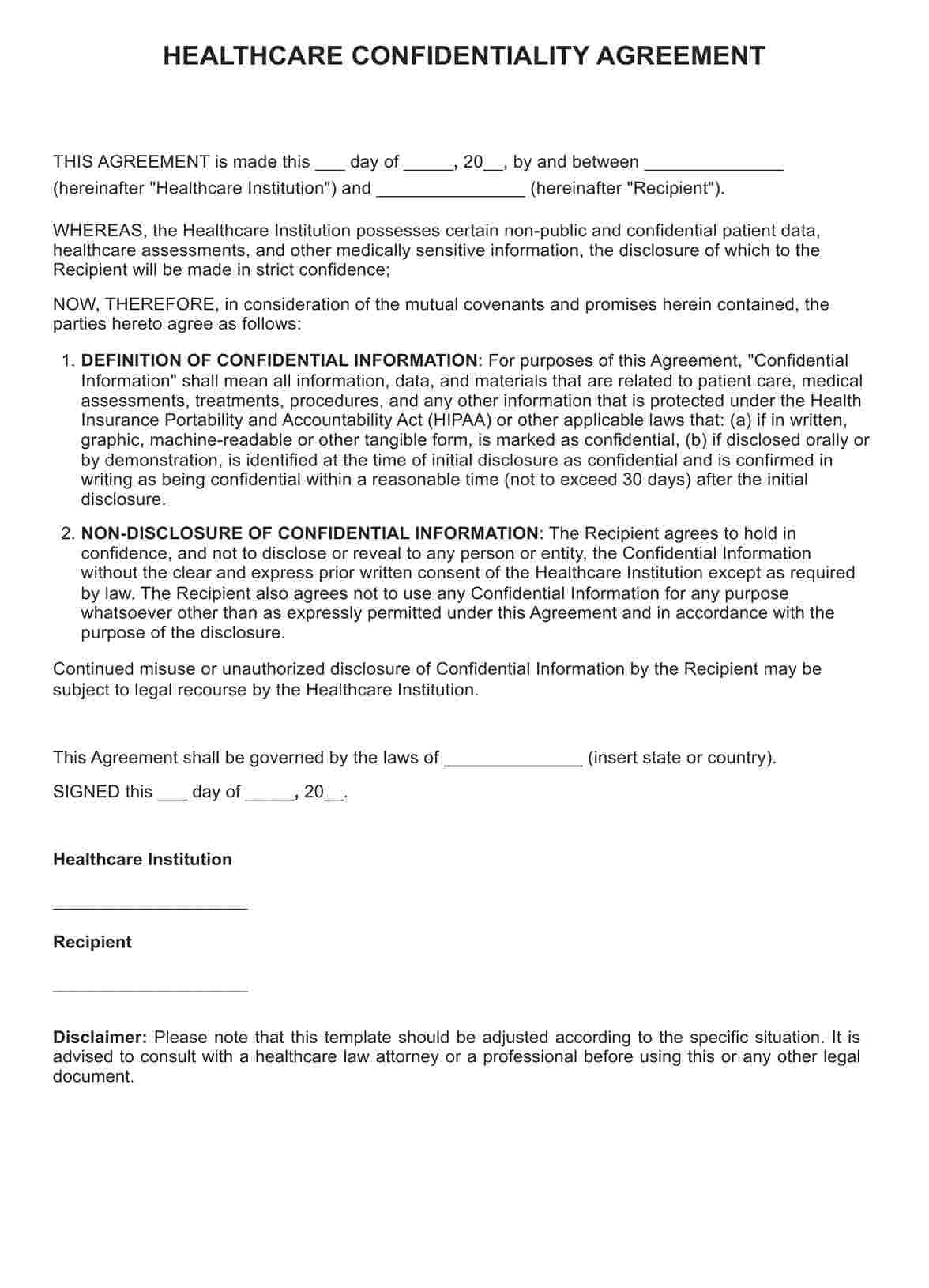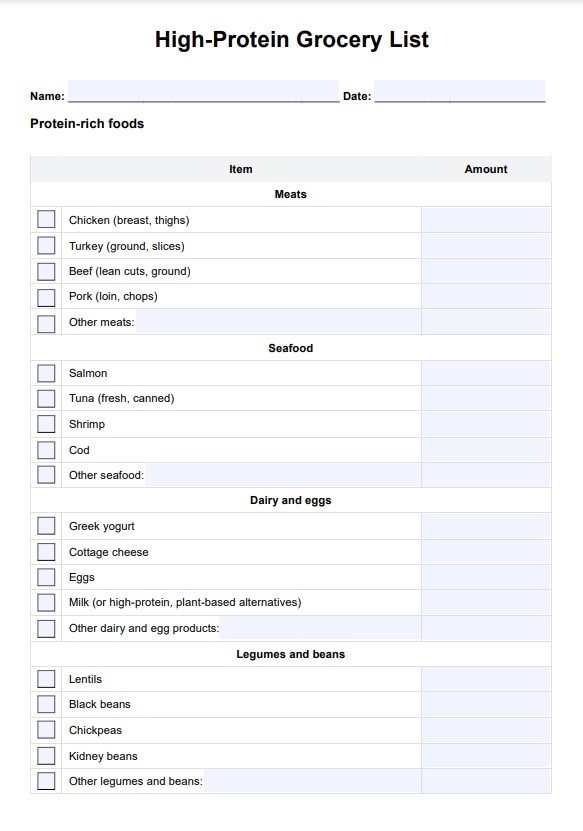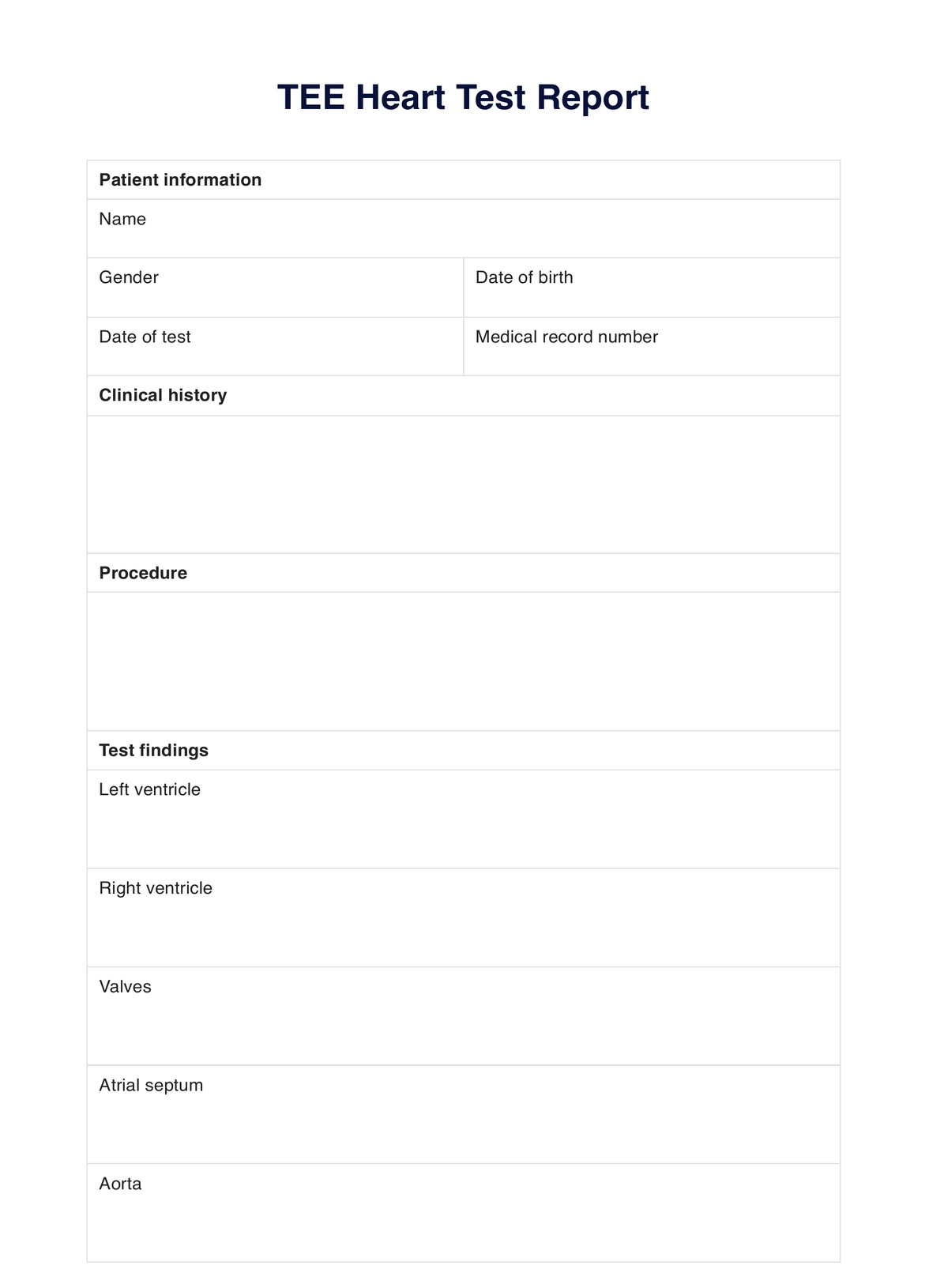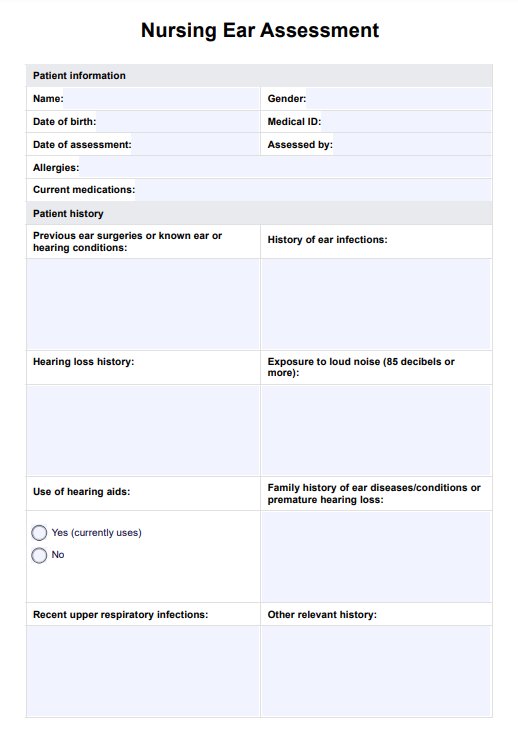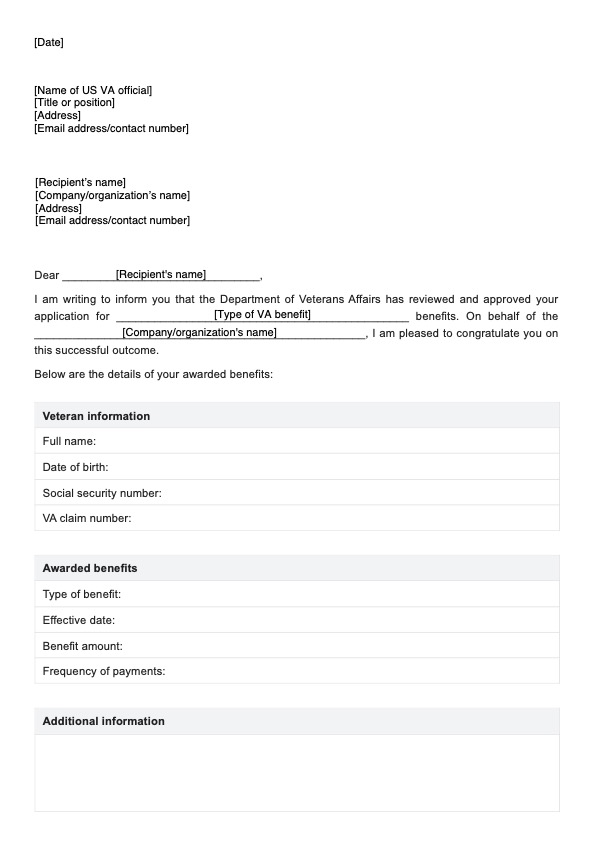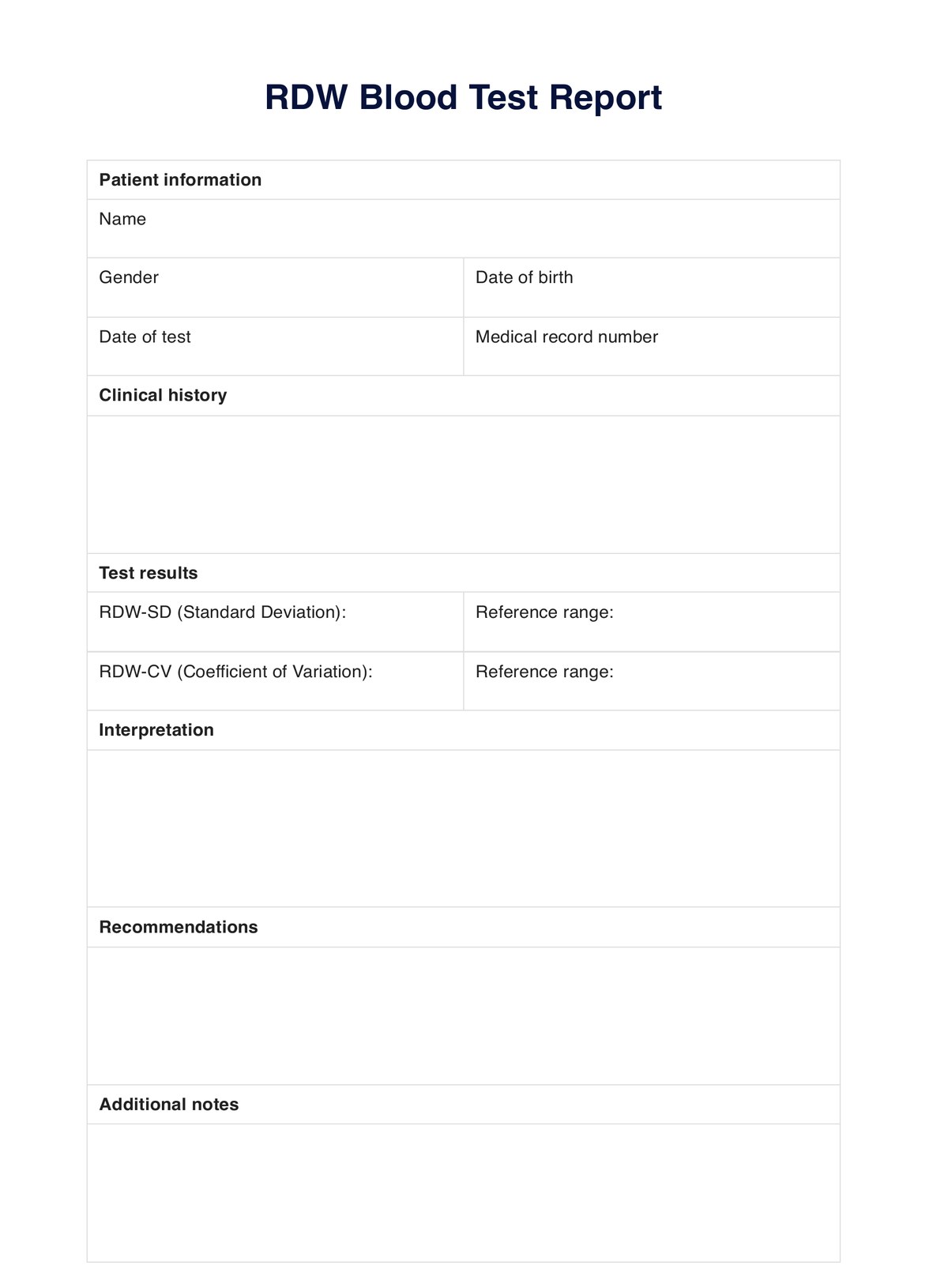Gluten Free Food
Access Carepatron's comprehensive Gluten-Free Food List handout to support dietary guidance and help patients manage gluten-free nutrition effectively.


What does gluten-free mean?
“Gluten-free” refers to foods that do not contain gluten, a protein found in wheat, barley, rye, and their derivatives (U.S Food and Drug Administration, 2018). A gluten-free diet eliminates all sources of gluten and is medically necessary for individuals with celiac disease, where even small amounts can trigger an autoimmune response and intestinal damage. It is also recommended for individuals with non-celiac gluten sensitivity, who may experience adverse symptoms without the autoimmune component.
Gluten is commonly present in processed foods, making label reading and ingredient scrutiny essential. In the U.S., the FDA defines gluten-free foods as those containing less than 20 parts per million (ppm) of gluten (U.S. Food and Drug Administration, 2023).
Many naturally gluten-free foods, such as fruits, vegetables, unprocessed meats, and grains like quinoa and rice, are suitable for a strict gluten-free diet. Healthcare professionals must ensure patients maintain dietary compliance to support symptom management and long-term health in gluten-related conditions.
Gluten Free Food Template
Gluten Free Food Example
What is a Gluten-Free Food List?
A Gluten-Free Food List is a reference tool designed to help healthcare practitioners support patients following a safe and nutritionally balanced gluten-free diet. It outlines which foods are safe to consume and which must be avoided to prevent exposure to wheat gluten and other gluten-containing ingredients. This tool is particularly valuable for managing conditions like celiac disease, gluten sensitivity, and wheat allergy.
A comprehensive list includes naturally gluten-free whole foods, approved gluten-free options, and labeled gluten-free processed products. It also highlights high-risk items often overlooked in standard dietary counseling. By using a Gluten-Free Food List, practitioners can guide patients in eating gluten-free without compromising nutritional quality, helping them make informed decisions about gluten-free eating in daily life.
Foods to include
A well-balanced gluten-free diet focuses on naturally gluten-free and whole nutritious foods. Patients should be advised to eat naturally gluten-free grains like rice, quinoa, millet, sorghum, buckwheat, and teff. Starches like potatoes, cassava, and arrowroot are safe, as are legumes, including beans, lentils, and chickpeas. These serve as carbohydrate and fiber-rich staples in gluten-free eating.
Gluten-free flours made from corn, almond, coconut, or tapioca offer versatile alternatives to wheat flour. Protein sources such as unprocessed meats, poultry, seafood, eggs, nuts, and seeds are all suitable when not marinated or coated. Dairy items like milk, cheese, yogurt, and butter are naturally gluten-free, provided no added flavorings exist. Various vegetables and fruits—including leafy greens, cruciferous vegetables, berries, and citrus—support micronutrient intake.
Patients may also choose gluten-free versions of products like granola, tortilla chips, or gluten-free bread, ensuring items are labeled gluten-free to avoid cross-contamination.
Foods to avoid
When advising patients on eating gluten-free, healthcare professionals must identify foods that pose a risk due to their gluten content. All forms of wheat—including spelt, farro, semolina, and durum—contain wheat gluten and must be avoided. Other high-risk grains include barley, often present in malt products like malt vinegar and malt extract, and rye, which is commonly found in certain breads and cereals. Traditional pasta, bread, cookies, and cakes made from wheat flour are incompatible with a strict gluten-free diet unless labeled gluten-free.
Additionally, many processed foods, such as breaded meats, sauces, soups, and snacks, may contain hidden gluten sources or be exposed to cross-contamination during manufacturing. Soy sauce and beer are typical examples where gluten is present unless gluten-free options are specifically indicated. Educating patients on reading ingredient labels is crucial to helping them identify safe gluten-free eating choices and avoid inadvertently eating gluten.
How does this gluten-free diet list work?
Carepatron’s Gluten-Free Food List handout is designed for seamless integration into clinical practice. Here's how to use it:
Step 1: Access the handout
Click the “Use template” button on this page to access the Gluten-Free Food List within Carepatron instantly. You’ll be directed to download the Carepatron app, where you can view, customize, and share the template directly with patients during dietary consultations.
Step 2: Use the handout in patient consultation
During the appointment, open the handout to walk patients through safe and unsafe food choices. The structured layout supports clinical conversations, allowing you to clarify gluten-free diet essentials concisely, accurately, and consistently.
Step 3: Discuss gluten-free options with patient
Use the handout as a visual guide while reviewing gluten-free options with your patient. Reinforce the importance of naturally gluten-free foods, how to read labels, and when to choose labeled gluten-free products, especially in processed or packaged items.
Step 4: Provide patient support and next steps
After the consultation, share the handout digitally or in print. Offer follow-up support, such as referrals to a dietitian or additional Carepatron resources. Use it as a starting point for long-term dietary planning, food tracking, and patient progress monitoring.
Benefits of using this handout
The Gluten-Free Food List handout streamlines dietary education for medical professionals managing patients with celiac disease, gluten intolerance, or related conditions. It allows clinicians to efficiently guide patients through safe and unsafe food choices, saving time during consultations.
The handout identifies common foods naturally free from gluten, such as fruits, vegetables, and starchy foods like rice and potato flour, while also flagging hidden sources of gluten in processed meats, sauces, and products with added gluten-containing ingredients. It supports accurate counseling by listing alternative gluten-free products and minimizing confusion around foods like wheat starch and barley malt, which frequently appear in ingredient lists.
Using this handout improves patient comprehension and adherence, helping prevent symptoms such as stomach pain in people with celiac disease. It also enhances workflow by offering a reliable, repeatable tool for nutritional assessment across various cases where many foods must be evaluated within a healthy diet framework.
References
U.S. Food and Drug Administration. (2018). Gluten and food labeling. https://www.fda.gov/food/nutrition-education-resources-materials/gluten-and-food-labeling
U.S. Food and Drug Administration. (2023, May 4). “Gluten-free” now means what it says. https://www.fda.gov/consumers/consumer-updates/gluten-free-means-what-it-says
Commonly asked questions
Gluten-free foods include naturally gluten-free items such as fruits, vegetables, fresh meats, eggs, legumes, and gluten-free grains like rice, quinoa, and corn. Certified gluten-free products, including some flour, breads, and snacks, are also safe when labeled appropriately.
Do not eat foods containing wheat, barley, rye, and their derivatives—such as pasta, bread, cereal, and baked goods made with wheat flour. Processed items with hidden gluten, including soy sauce, barley malt, and some soups or processed meats, must also be avoided unless labeled gluten-free.
Typical gluten-free meals may include grilled chicken with vegetables and rice, quinoa salad with legumes, or eggs with sautéed spinach and potato flour pancakes. These meals focus on naturally gluten-free ingredients while avoiding added gluten-containing ingredients.
A gluten-free diet should be followed when medically diagnosed with coeliac disease, gluten intolerance, or a wheat allergy. It may also be used temporarily under medical supervision to evaluate symptom relief in certain gastrointestinal conditions.


